
David Brown


“We can create a simpler, more effective rail system”
Andrea Rossi
DB Cargo: Here to stay in the UK
Alicia Andrews
Meeting the changing needs of passengers
Dan Piner
Working together to unlock innovation







EXCLUSIVELY FOR RAIL INDUSTRY LEADERS




May 2024

JOANNE MAGUIRE
Delivering a safe, reliable, and green railway for the people of Scotland


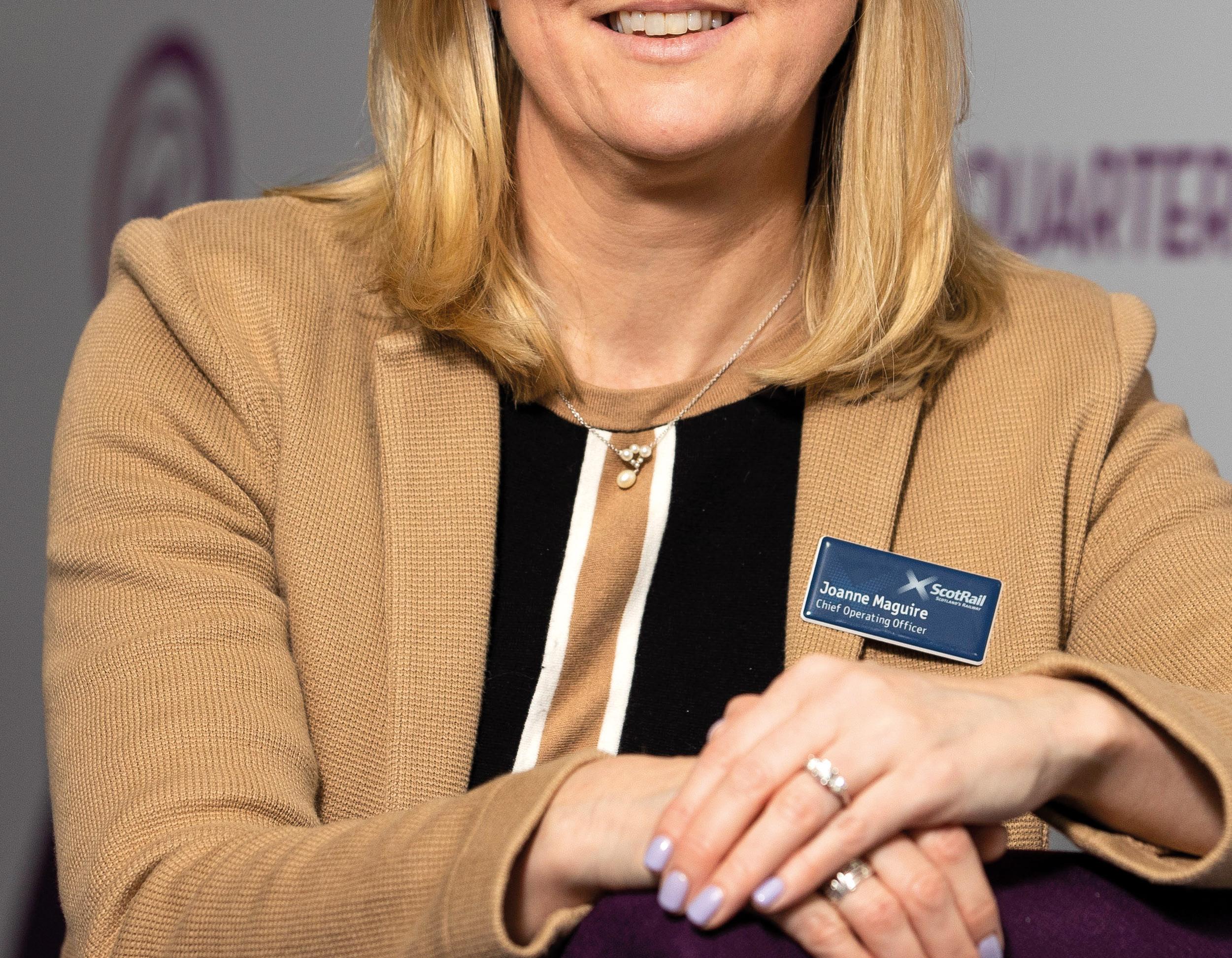

ONSPOTLIGHT TRAIN OPERATORS





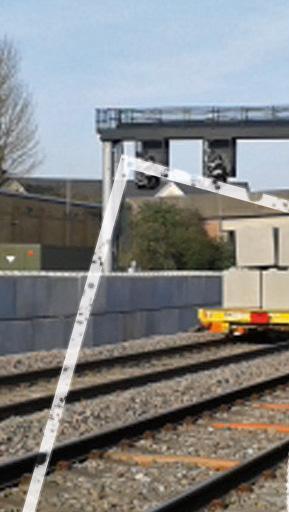



interlocking blocks and barriers








Workforce protection barriers avoiding all line closures with adjacent line open





Rockfall prevention with our multi-purpose Jersey barriers

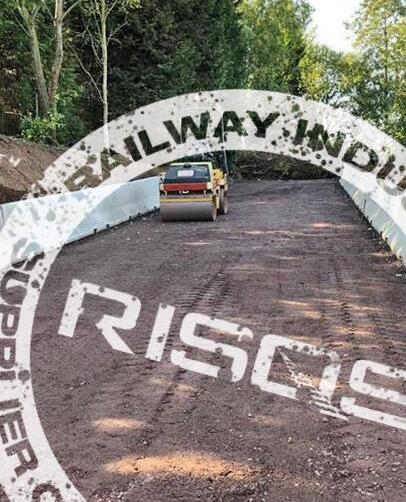







Large ballast bays with walls constructed from our Legato interlocking blocks






Large scale embankment retention using the versatile Legato blocks















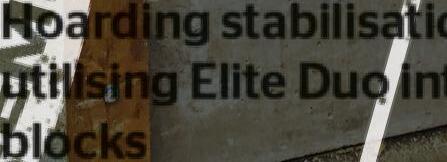

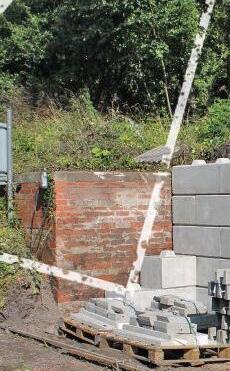

Hoarding stabilisation utilising Elite Duo interlocking blocks






Workforce safety refuges built from Elite Duo blocks




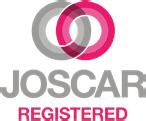

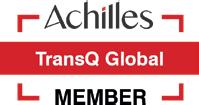
For more information phone 01952 588 885 or browse www.eliteprecast.co.uk or email sales@eliteprecast.co.uk




Everywhere on rail networks Elite products are seen in use British made Suppliers to 2012 London Olympics, 2014 Glasgow Commonwealth Games and approved suppliers to Tideway, Crossrail and HS2 (fully compliant transport) Get on track with Elite
KM 642263 KM 658166
Delivering for customers together
very warm welcome to the latest edition of Rail Director, which this month is centred around train operators. It would have been easy enough to fill this magazine several times over with the great people and initiatives which are transforming train operators and the customer experience for the better.
The negative headlines of train delays, cancellations and strikes do not paint a fair picture of the incredible work happening every day moving millions of people and tonnes of goods safely and efficiently. One thing that is evident from those featured in this month’s magazine is the immense pride they share in the role the railways play in everyday life, and an ever-growing collaboration between organisations, both of which set the foundation for a positive future.
Thanks to Joanne Maguire, who shortly after being appointed Managing Director of ScotRail, spoke with the magazine about her career to date and the journey ahead. There’s a lot of great work happening at the operator, and although there will be some big challenges to overcome, Joanne and the team see those as opportunities. She said: “We’re not going to say we’re perfect or we’re the finished article, but we’re proud of the progress we’ve made, and we’re excited for what comes next.”
I mentioned previously about collaboration. An example was the first national safeguarding conference featuring 15 train operating companies, and dedicated to exploring and enhancing the protection of colleagues and customers on the rail network, of which you can read more on page 50. You can read a fascinating feature on page 48 with South Western Railway’s Innovation Manager Dan Piner, who explains how train operators are coming together to innovate.
It is pleasing to see that train operators are shouting out more about their achievements and impacts. Statistics from Lumo have revealed the open access train operator saved 60.6 kilotons of CO2 last year, the equivalent of taking 13,475 petrol-powered cars off the road. It has also said that the operator is set to deliver between £470 million and £740 million in economic benefits through its faster journeys, industry employment, and fare savings for customers. You can read more from Managing Director Martijn Gilbert on page 10.
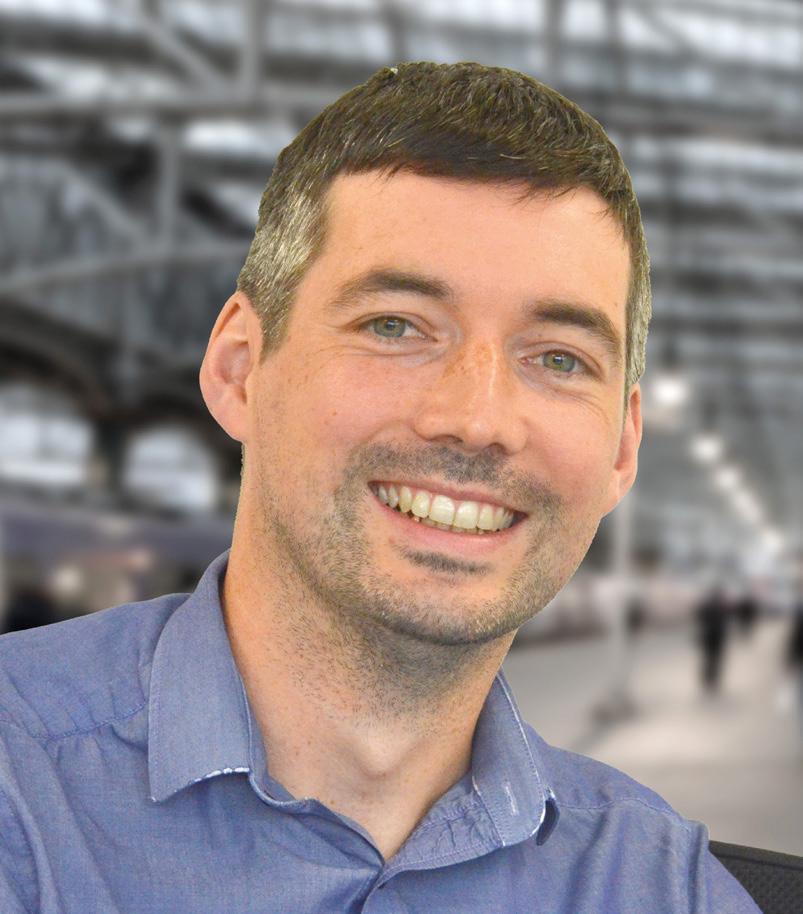
Shouting out about all the great things happening in the railways is important in not just raising the profile of the industry, but also in making the industry an attractive proposition to the next generation of workers. When I ask people in the rail industry how they got into it, a common answer is “I fell into it” or “It was an opportunity which I thought would be short-term”, however years and in some cases decades later they are still working in the railways and couldn’t think of an industry they’d rather work in.
A big thank you to everyone who has been involved in the latest magazine. I hope you all enjoy it. Work is well underway on June’s edition which is centred around health and safety. Get in touch with the sales team if you’d like to feature your products or services.
All the best,





 Danny Longhorn Editor
Danny Longhorn Editor
The negative headlines of train delays, cancellations and strikes do not paint a fair picture of the incredible work happening every day
Rail Director magazine and Railbusinessdaily.com are assets owned by the Railway Industry Association. Railbusinessdaily.com delivers more than 70 stories a week to +73,000 rail industry professionals in our daily 7am newsletter. If you have not already subscribed, it’s free and it’s easy to do so at www.railbusinessdaily.com, please also encourage your colleagues to do the same. This is the very best way to keep abreast of what is happening on the UK’s railways. There is a digital copy of Rail Director on our website.
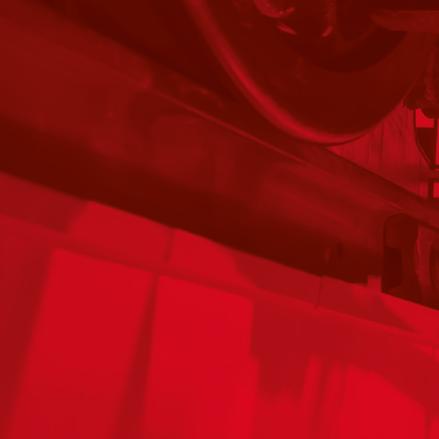


& BOGIE












Lifting and inspection equipment you can rely on for all maintenance of rail vehicles.

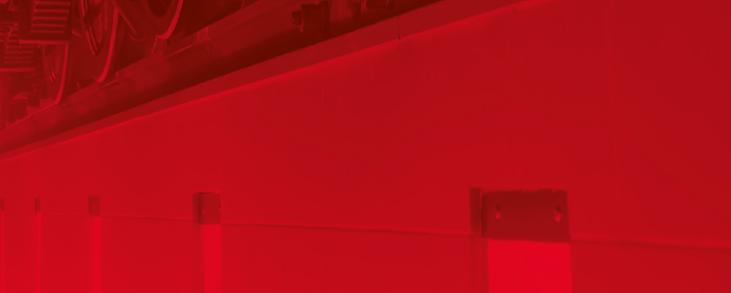









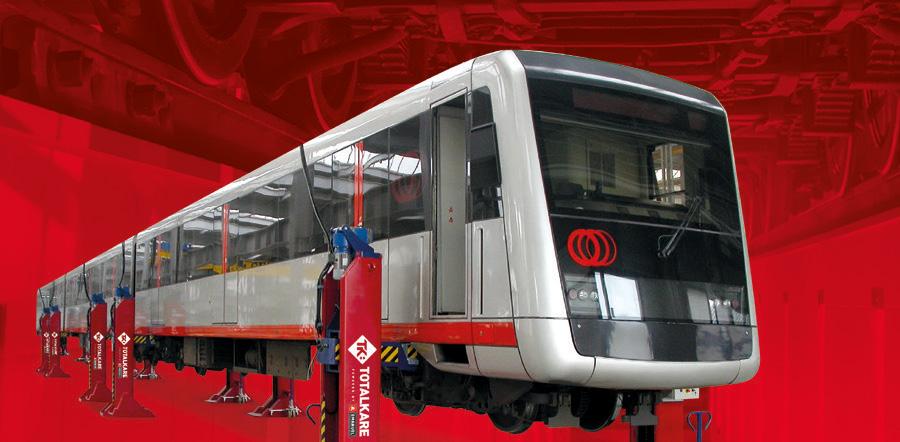

With over 40 years’ experience of high quality, heavy duty vehicle lifting, Totalkare combines world class products with industry leading support to facilitate effective maintenance and repair.




A
RELIABLE SYNCHRONISED MOBILE LIFTING JACKS SERVICING TRAINING LIFTING
LIFTS BOGIE LIFTS COMPLIANT WITH DIFFERENT RAIL GAUGE SYSTEMS 6,000 - 14,000KG HYDRAULIC LIFT PLATFORM HEAVY DUTY
LIFTING JACKS
INTRODUCTION 3 May 2024


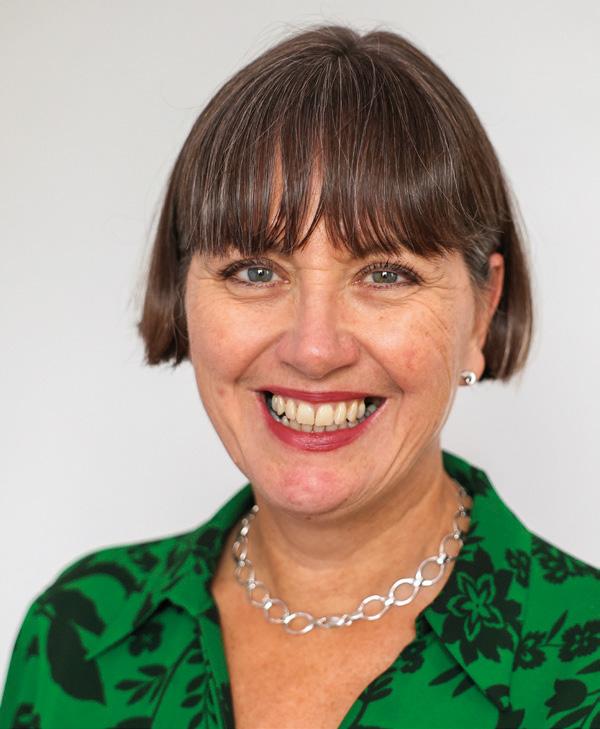
Joanne Maguire has recently been appointed MD of ScotRail. She talks about her pride in the job and the people she works with
Open access rail services are transforming transport connectivity, helping drive economic growth and improving social mobility. Martijn Gilber, MD of Lumo and Hull Trains, explains more
David Brown, MD UK Trains at Arriva, was appointed Chair of Rail Delivery Group earlier this year. He writes about the challenges ahead
Ian McConnell, MD of West Midlands Railway, discusses the recent success of the train operator
Daniel Edwards, Business Lead and Director at Heathrow Express, explains how an inclusive culture and strong proposition are helping the operator to stand out
Cargo: Here to stay in the UK
Andrea Rossi, Chief Executive Officer at DB Cargo (UK), has put to bed rumours about the company leaving the UK, revealing details of its transformation plan
Alicia Andrews, Commercial Director of Southeastern, discusses delivering for the communities its services run in
Dan Piner, Senior Design and Innovation Manager at South Western Railway, explains how train operators are coming together to innovate
Knight Architects is an extraordinary architectural practice specialising in the design of bridges and civil infrastructure. Directors Tom Osborne and Bart Halaczek discuss finding clarity in complexity

Untitled-61 4 18/03/2024 10:28 May 2024 6 Delivering a safe, reliable, and green railway for the people of Scotland
10 Driving passenger numbers and prosperity
14 “We can create a simpler, more effective rail system”
22 “One of the big success stories”
28 Taking Heathrow Express to new heights
36
DB
38 Meeting the changing needs of passengers
48 Working together to unlock innovation
52 Bridge design that connects with users and communities
10 14 38 CONTENTS 4
56 Shortlist revealed for the Railway Industry Association’s prestigious RISE Awards
RIA Senior Marketing and Events Manager, Grace Smithen, has praised all the award entries and those who have been shortlisted
60 Forces into railways
Bruce Spencer, Strategic Lead at MTMS, explains how rail organisations need to work together to attract service personnel past and present
66 Eurostar pledges to power trains with 100 per cent renewable energy by 2030
Gwendoline Cazenave, CEO at Eurostar, has said the organisation is committed to being the most sustainable form of international travel when it comes to carbon emissions
74 Clearing the wilderness
Railway Chaplain Mike Roberts writes about making the railway garden worthy of display, and the gold rosette at the garden show
76 RIA – a longstanding campaigner and champion for train suppliers
David Clarke is the Technical Director at RIA, with a focus on representing members’ interests in the areas of safety, technical standards, strategy, research, and innovation. He reflects on the organisation’s work and the important role to be played in the future
80 Helping newcomers understand UK rail
If you, or someone in your company, is new to the industry we know that getting to grips with rail can feel daunting. But it doesn’t have to be and RBD Community is here to help you navigate it
86 “Building strong relationships and embedding stakeholders at the earliest opportunity”
Balfour Beatty has appointed Steve O’Sullivan as Project Director with responsibility for Balfour Beatty VINCI SYSTRA’s HS2 Old Oak Common station project
90 Europe’s largest collection of historic rail vehicles
Locomotion in Shildon, County Durham has completed the museum’s biggest-ever rail shunt to create Europe’s largest undercover display of historic rail vehicles

Tel: 01132 082620
Sales: 020 7062 6599
Editor Danny Longhorn danny@railbusinessdaily.com
Designer and Production Manager
Debbie Nolan Writers
Crampton Fiona Broomfield
Wordsworth Advertising Team Christian Wiles chrisw@railbusinessdaily.com
Amy Hudson amy@railbusinessdaily.com
Published by RBDMedia (an asset of the Railway Industry Association) trading address 15 Mariner Court, Calder Park, Wakefield WF4 3FL
Printed by The Manson Group © 2024
All rights reserved.
Reproduction of the contents of this magazine in any manner whatsoever is prohibited without prior consent from the publisher. For subscription enquiries and to make sure you get your copy of Rail Director please ring 01132 082620 or email info@railbusinessdaily.com. The views expressed in the articles reflect the author’s opinions and do not necessarily reflect the views of the publisher and editor. The published material, adverts, editorials and all other content is published in good faith.

Untitled-61 4 18/03/2024 10:29 May 2024
Rosie
Nigel
CONTENTS 5
Joanne Maguire has recently been appointed Managing Director of ScotRail. She talks about her pride in the job and the people she works with
Delivering a safe, reliable, and green railway for the people of Scotland

t is with an enormous sense of pride that Joanne Maguire puts on her name badge every morning as she arrives at her local railway station, with a sense of privilege about who she works for and the important role it plays in everyday life.
“We are playing a vital part in so many lives,” she said. “There’s also a real sense of camaraderie and teamwork among colleagues and this overwhelming feeling of being part of something special. How many people can say they are part of an organisation that 95 per cent of the population are aware of?”
Joanne has recently been appointed Managing Director of ScotRail for a two-year period, having previously been Chief Operating Officer, following Alex Hynes’ secondment to the UK Government Department for Transport.
“I’m delighted to have the opportunity to step up into the role and I see that as a really positive reflection on us as an organisation and what has been achieved in the last few years,” she said. “It’s not me that delivers every day on my own, I can only do it because I’m backed by lots of good, passionate people. This is an opportunity to continue that
collectively as a team.”
As Managing Director, Joanne has overall responsibility for ensuring ScotRail achieves its business objectives across a spectrum of areas including safety, finance, operations, people, and corporate social responsibility, working collaboratively with a range of partners and stakeholders.
“The aim is to deliver a safe, sustainable, inclusive, and accessible railway for Scotland,” she said. “Over the last year, we have developed a strategy which mirrors the national transport strategy in Scotland
TRAIN OPERATORS 6 May 2024
I
because we see ourselves as key to enabling the delivery of the strategy.”
ScotRail, which transferred into public control and ownership two years ago, has strong foundations to build on. The operating environment has stabilised, recent surveys have found nine out of 10 customers are satisfied with what is provided, and there have been increases in passenger revenue and numbers.
“It has been a successful few years, but we are always striving for improvements,” she said. “One initiative that has been particularly successful has been the off-peak all day trial, an investment by the Scottish Government in what is the first of its kind in Europe.
“Overall, it is a positive picture with growing passenger numbers, growth in our revenue and we’ve been closing our vacancy gap, which has enabled us to drive improvements across the business. Key to the success has been a dedicated workforce and ensuring we have all our resources where we need them, to deliver for the customers day in, day out.
“But this is an ongoing journey. There is work to be done around decarbonisation, the opportunity of looking at new fleets and making our railway accessible to all, while also thinking about how we deliver the best value for the taxpayer.”
Joanne is relatively new to the rail industry, first joining when she was appointed ScotRail’s Chief Operating Officer on April 1, 2022, to lead the business through the transition to the new public body.
Before joining the operator, she was Vice Principal of Resources at the University of the West of Scotland, where she was responsible for, among other things, finance, HR and industrial relations, health and safety, sustainability, and information services. Prior to this, she was Executive Director for HR at the university, and also held senior leadership roles at the City of Glasgow College, as well as in the manufacturing and retail sectors.
“Having not had any rail industry experience I was initially unsure about applying for the job, but the more I read the job description the more I saw that they wanted someone with leadership experience to deliver change,” she said. “It was a job I really wanted, particularly with it involving leading an organisation that is so well known and plays such a pivotal role in society.
“I’d previously worked in private sector manufacturing, which was heavily unionised and had a significant focus on safety. When I left manufacturing and went into education that’s when I first properly appreciated how different it is to work in an organisation where purpose is not driven by bottom line and profit. It is important to think about financial decision making and sustainability, but the purpose of the organisation is about societal contribution.
“It also doesn’t matter what industry you’re in, people are people, and industry and organisations don’t work and don’t function without people. For us it isn’t just the 5,500 employees, but also the millions of customers that we see every year. The learning that I’ve taken throughout my career is that if you get things right for your people and with your people then that is how you create a successful organisation.”

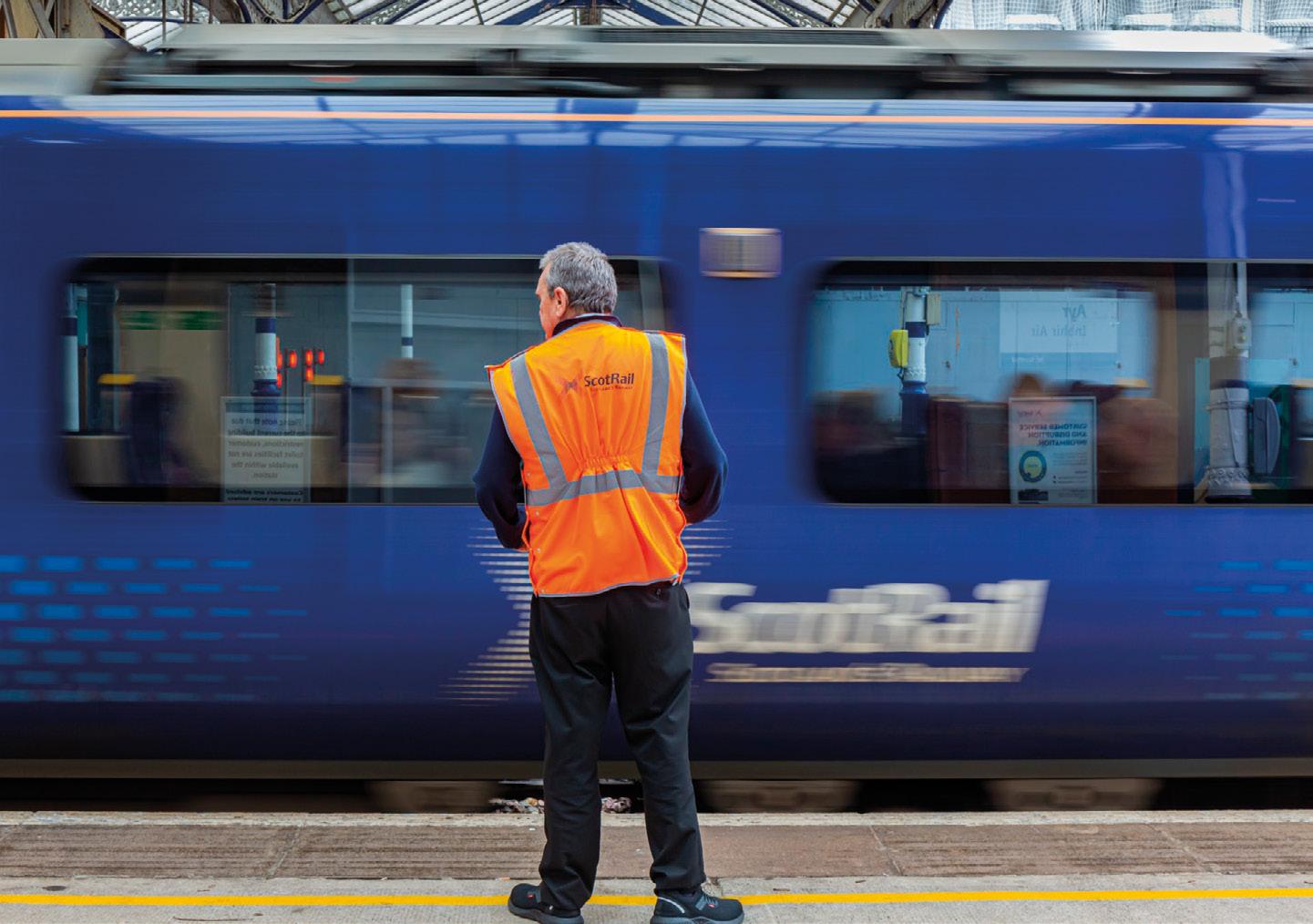
It was a tricky start for Joanne when she joined ScotRail as Chief Operating Officer, with rail union ASLEF describing the appointment of someone with no experience of running the railway as a “huge error”.
“When the comments were made there was a lot of change going on with the pandemic and the transition to public ownership and I think to be fair to the trade unions, here was another change to add to the list,” she said. “I was an unknown at the time, but I am confident that if you asked them now, they would say we have a good relationship.
“We established quickly that we’ve got lots in common and that we want the best railway for our customers and staff, and overall we want a safe railway. Soon after becoming Chief Operating Officer, I met the unions, and they were very open and welcoming. We’ve continued to work hard in our relationships, always coming back to the point that we actually have a lot in common. This has allowed us to build a stable operating environment which has
It’s not me that delivers every day on my own, I can only do it because I’m backed by lots of good, passionate people
TRAIN OPERATORS 7 May 2024

enabled us to be industrial action-free for about the past 18 months.
“Differences are inevitable, but we never let talks break down, keeping lines of dialogue open with a commitment from all parties to keep the conversations going which has allowed us to operate in a more stable environment.”
Being new to the industry has brought a fresh perspective, and Joanne says it has given her more licence to be curious about ways of working, with her admitting to asking ‘why’ quite a lot.
“We’ve got some brilliant technical experts with lots of people who really care about the business and passengers, and they actually don’t get tired of me asking why we do this,” she said. “They are really proud of what we are doing and it never fails to make me humble. Their expertise also gives me and some of my colleagues a licence to lead because we know that the really important aspects of running a railway are being taken care of by the experts who surround us.”
Looking to the future and one area of particular importance is the Alliance Agreement commitment between Transport Scotland, Scottish Rail Holdings, and Network Rail Scotland. It has delivered collaborative working between ScotRail and Network
We’re not going to say we’re perfect or we’re the finished article, but we’re proud of the progress we’ve made, and we’re excited for what comes next
Rail Scotland, and ensures close relationships between track and train. An example of its success is the joint Integrated Control in Springburn, one of the first of its kind in the UK railway.
“We’re really proud of the Alliance Agreement which is seen as quite unique across the country because of how collaboratively we work together,” she said. “At the minute we have teams working together on the delivery of decarbonisation, with Network Rail on the electrification and ScotRail on the acquisition of new electric fleets for where the railway is electrified.
“Where the railway isn’t being electrified, we’re looking at different technologies for new fleet acquisitions, working together on the totality of the network and what new fleet decisions would mean for either party. We’re really proud of the relationships which are a huge part of delivering Scotland’s National Transport Strategy and its climate ambitions.
“The Alliance is something that was driven forward under Alex Hynes’ leadership and it is something that we are absolutely committed to continuing while he is off on his two-year secondment to the Department for Transport. Overall, my simple view is there is no point to either Network Rail or ScotRail without the other. ScotRail can’t run without the tracks and there is no point having the tracks if we’re not running trains, so we need to coexist.”
Another passion of Joanne’s is to continue the train operator’s progress on diversity and ensuring a great working environment. Good progress is being made, with the company earlier this year being recognised as a Top Employer in the UK, the fifth consecutive time it has been recognised with an accolade from the Top Employers Institute programme, which is based on the participation and results of its HR Best Practices Survey.
“We’ve got lots of good work underway and we have ambitious plans to shift the dial not only on gender but on all aspects of diversity across our workforce, and recognition such as the Top Employer in the UK shows we are on the right track,” she said. “It is down to a lot of hard work that we have been doing on our working environment, talent acquisition,
learning, diversity, and equality inclusion.
“We’ve had some great success with initiatives such as being part of the creation of the My Mummy is Train Driver children’s book. To mark International Women’s Day, we gifted copies of that book to Glasgow Women’s Library, in addition to going out and giving it to schools to try and shift mindsets from a younger age that these are careers that are open to all of us. Every copy of the book that we give away actually has a message from a female employee in ScotRail in the book to try and inspire them and to make it real.
“We know there is no quick fix, but we’ve got great plans building on some solid foundations which includes the fact that since 2021 we’ve seen a year-on-year increase in female drivers. From an HR perspective, we’re also changing the shape of the team so we can target and focus on how we diversify our workplace. We’re also targeting schools and young people and expanding our apprenticeship programme. If we’re not representing the broad gambit of diversity in the country, then we can’t actually deliver properly for our customers. You can’t be what you can’t see.”
Overall, Joanne is very pleased with the way things are shaping up for the train operator, and is particularly keen to praise the work of her predecessor Alex Hynes and the rest of the ScotRail team for their ongoing efforts.
“We’re in a good place with passenger numbers on the up, punctuality and reliability is better than it was this time last year, and we’re investing with a significant recruitment drive, using that drive to build and deliver better value for the taxpayer, collecting revenue everywhere possible and making sure the customer experience is as safe and enjoyable as we can,” she said.
“There’s lots to do and improve, such as a challenging sustainability agenda to deliver against both environmentally and financially, but we’re proud of the journey we’ve been on over the past two years, and the improvements that we’ve made. We’re not going to say we’re perfect or we’re the finished article, but we’re proud of the progress we’ve made, and we’re excited for what comes next. Watch this space.”
TRAIN OPERATORS 8 May 2024

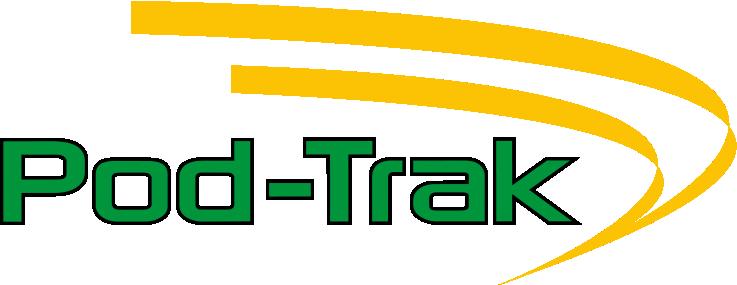
FIRST CLASS IN RAIL
Rail industry specialists: A trusted multi-disciplinary team of rail experts, delivering end-to-end construction and maintenance projects, safely and efficiently, in the UK and Ireland. Electrification Permanent way Civil Engineering Communications SERVINGTHE R AIL INDUSTRY 2007 SINCE POD-TRAK Need help delivering your next project? 0845 450 4190 enquiries@pod-trak.com Offices in the UK and Ireland: Crove House 14 Aintree Road Perivale London UB6 7LA Woodrow Way Thames Trading Estate Irlam Manchester M44 6NN Apex Business Centre 1 Watervole Way Balby Doncaster DN4 5JP 40 Mount Street Upper Dublin D02 XH76 Ireland SCAN ME

Open access rail services are transforming transport connectivity, helping drive economic growth and improving social mobility.
Martijn Gilbert, Managing Director of Lumo and Hull Trains, explains more
Driving passenger numbers and prosperity
TRAIN OPERATORS 10 May 2024
artijn Gilbert passionately believes in what the open access train operating model stands for and what it can deliver. It was what attracted him to the role of FirstGroup’s Managing Director of Open Access Operations, leading Hull Trains and the then newly launched Lumo. Now, more than 20 months later, it is something he feels even more strongly about.
“I inherited two businesses with some really strong foundations and some absolutely great people and since then we’ve not only continued to build and improve that delivery and grow the numbers, but we’ve also been able to demonstrate and build a good solid evidence base around the benefits of the model and the work that we are doing,” he said.
In an industry first, train operator Lumo recently shared data detailing its economic contribution and emissions saved by its all-electric service between London and Edinburgh. The data, shared across two reports, revealed the East Coast Main Line operator saved 60.6 kilotons of CO2 last year – the equivalent of taking 13,475 petrol-powered cars off the road for a year.
Alongside the sustainability credentials, a report by specialist consultancy Arup found that the operator is set to deliver between £470 million and £740 million in economic benefits through its faster journeys, industry employment, and fare savings for customers. With its lower fares alone, it is estimated that passengers saved a collective total of £18 million in the last financial year.
In a similar report for the longer-established Hull Trains, it has been found that since its launch in 2000, the operator is estimated to have delivered £185 million to £300 million of monetised benefits. Taking into account forecasts for the next 10 years, those figures are estimated to grow to a total economic benefits delivery of £325 million to £700 million.
It also highlights how the operator has increased services from one direct train per day in each direction between Hull and London to seven, how seating on rolling stock is now more than double what it was 24 years ago, with an overall capacity reported at a 500 per cent increase, and that passenger demand is now actually higher than pre-COVID levels from 2019. Looking at GVA impact through direct employment between 2000 and 2022, the economic impact associated with employment at Hull Trains is said to have been worth a total of £35 million to £70 million during the period since the launch of services.
“When I took on the job part of the brief was to do things a bit more quirky and different to the rest of the industry because that is what open access is,” he said. “I like that, but equally I want to take the mystery out of it and I want open access to be a mainstream part of the railway that works alongside the rest of the sector. It is absolutely important that we share what we are doing to help educate and inform as well as to celebrate our success.
“These reports highlight how beneficial the open access rail model is, which we should remember is delivered at no cost or risk to the taxpayer. As a result, we are able to keep our services efficient and offer great value fares and greener journeys to customers. We’re dedicated to improving the rail industry through innovative thinking and in playing our part
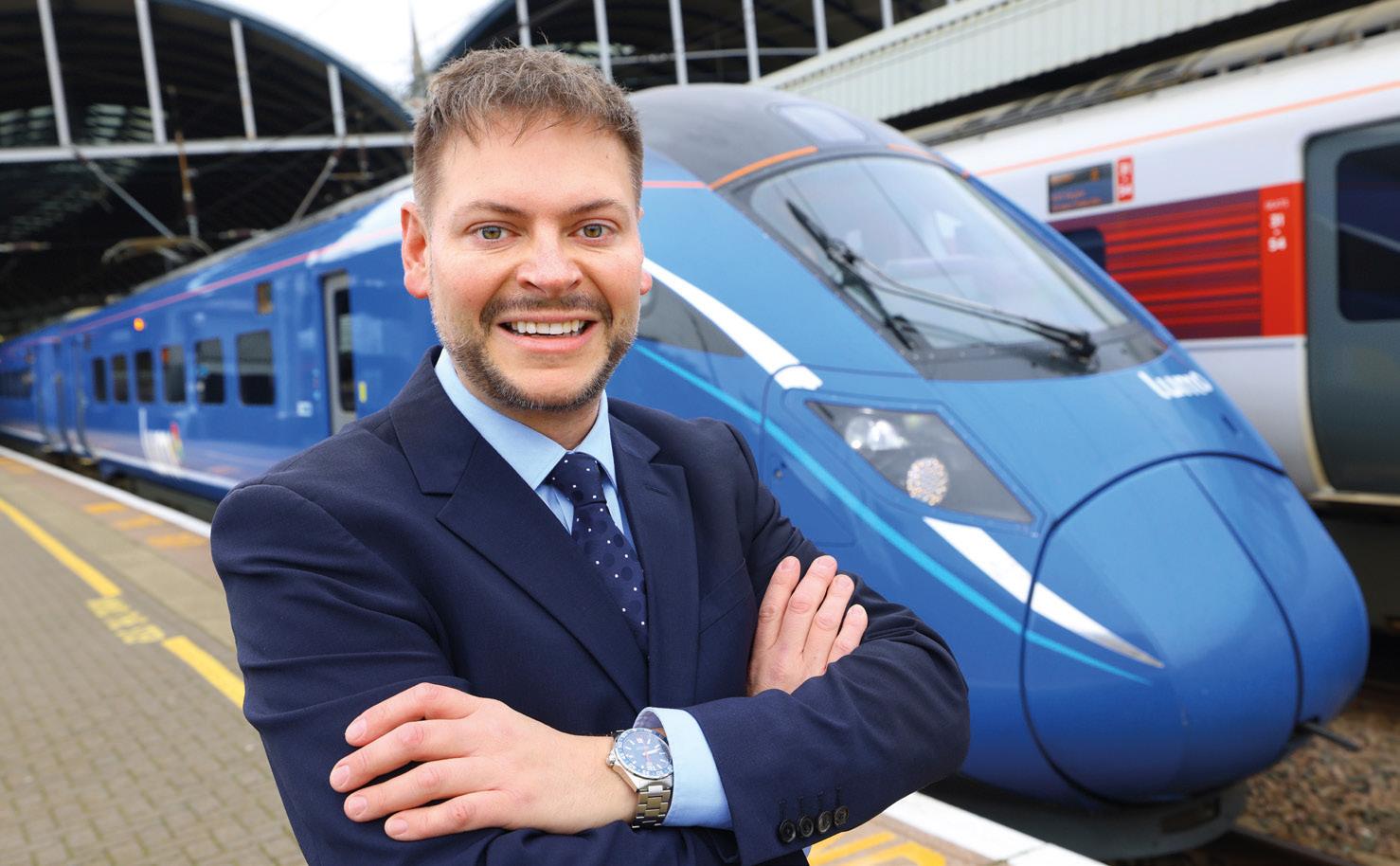
to convert customers from carbon-intensive modes of transport, like planes and cars, to trains, and these reports prove the economic and environmental benefits of doing so.”
Martijn is keen to stress that the success of open access operations is proving beneficial to other operators on the main East Coast Main Line.
“The really powerful thing for me is that you can see when you look at passenger stats that LNER has seen not only a full recovery from pre-pandemic numbers, but is also in growth as well which reiterates the message that open access delivers choice for customers and grows the market for everybody, as well as doing things like job creation,” he said. “In the past, some people would speak about open access operators as abstracting revenue, but we are in a completely different world now in terms of how the flow of revenue works.
“We do something very different to LNER. In its rawest form, open access is about injecting some competition in the market, but actually that is competition with a small ‘c’ because what we are doing is delivering something different that gives choice to customers.
“For Hull Trains we are delivering a service that is completely transforming the connectivity of the communities it serves. For Lumo probably the best comparison is the low-cost airline model, with a strong focus on delivering great value fares and also a good onboard experience. It is not first class, if you want first class, to be able to bring larger amounts of luggage, and a turn-up-and-go timetable then go to LNER. It’s a good product, but what we focus on is a great value fare for a specific timed train, combined with a comfortable journey, and we’re also able to do that with a really sustainable offer as well.
“Open access is complementary to other train operators, and we are increasingly seeing the halo effect which is that this is actually benefitting the wider rail industry because just look at the numbers for the whole long distance operator piece on the East Coast Main Line.”
Martijn spoke to Rail Director as customer satisfaction results revealed 96 per cent overall satisfaction for both Lumo and Hull Trains, something he puts down to his “incredible colleagues”.
I am keen to keep championing the benefits of open access and to make sure that whatever the future of the UK’s railways looks like, there will still be a place for this because it is driving improvements that benefit customers
M
TRAIN OPERATORS 11 May 2024
“Customer satisfaction is a really important part of what we do,” he said. “As an open access operator, we are not supported by any contracts or subsidies, so we live or die by making a success of what we do and that is all about delivering for our customers. They are who we are here for and are how we earn our keep which keeps us very sharp and focused, so it is great to be able to report such high levels of customer satisfaction.
“It shows open access is loved by the people that use it, we know it is loved by its stakeholders, it is hugely beneficial to the communities that it serves, creates new jobs, improves connectivity, helps keep fares low, gives choice for customers, and our colleagues enjoy what we do and working for us. The icing on the cake is that all of this is delivered at zero cost to the taxpayer because we are commercial businesses, what’s not to like about open access.”
The journey ahead
FirstGroup has submitted the first phase of an application for a new open access rail service between London and Sheffield to the Office of Rail and Road as part of its Hull Trains business. The new proposed route will give Sheffield the first regular service from London King’s Cross since 1968 and will also give Worksop in Nottinghamshire the first regular direct trains to the capital in decades.
“Initially we will be looking at two return trips a day, but coming down the East Coast Main Line,” said Martijn. “Currently around three-quarters of the journeys between London and Sheffield are made by road, so there is a huge opportunity to encourage more people onto rail by offering that third tier in the market by way of a price-based value proposition to people.”
It is the potential for those living along the route that is particularly exciting, with an estimated 350,000 people in the Worksop and Woodhouse catchment areas having direct rail access to London under the plans.
“Certain train journeys for those living in Worksop will see journey times halved under our proposals, so I’m really excited about the application,” added Martijn. “We’re at the very early stages of the application process and have got to develop final timetabling and various other elements of the operational plans which will be done as the application process progresses.
“We hope to be able to get that to an approval stage, and then the next stage comes in terms of mobilising the plan, including fleet, recruitment, training, and then marketing, retailing, and getting it up and running.”
In another ongoing development, Lumo announced earlier this year that it is in discussions with Transport Scotland and Network Rail Scotland to extend some of its London-Edinburgh trains to and from Glasgow, having identified opportunities to extend a number of daily journeys to and from Glasgow in the timetables for 2025 and beyond.
“That would add another sizeable city onto Lumo’s map, bringing our very successful, great value fares and sustainability electric train model to Glasgow which has got equally good opportunities in terms of modal shift from air,” said Martijn. “Glasgow to

London is a big air flow route and we think that our price-based offer can really help with that, but also there is a big market for Newcastle to Glasgow which is underserved.”
It is one of several initiatives underway as FirstGroup builds on the recent success of both Lumo and Hull Trains with the companies’ Managing Director saying new uniforms, digital innovation, eradicating plastic bottles from its trains, and enhancing the customer experiences are just some further improvements that are ongoing.
“It is fair to say there is never a dull moment and there is certainly enough to keep us busy,” he said. “Lumo and Hull Trains are small agile businesses that are very close to the detail at all levels of the organisation and that makes it very exciting. It also means we can deliver good solutions that are steeped in the practicalities of the day-to-day reality and deliver them quickly as well.
“We meet all the big railway standards, but we are able to move faster and that enables us to do some of the things that we do, and we are certainly not just sitting back and taking any of that for granted. We are making sure that we deliver for our customers, but we also want to make sure we play our part in delivering for the whole railway and the communities that we serve.”
Great British Railways
Earlier on this year ministers put forward a plan for the future of the railways, publishing a draft bill for pre-legislative scrutiny, which will see the creation of Great British Railways (GBR), which will bring together responsibility for both rail infrastructure and services.
It aims to provide clearer lines of accountability and help build a more modern and financially secure sector and a network that is more adaptable and more efficient, but what will it mean for open access operators?
“There are various references to open access in the draft bill and how open access will work with GBR,” he said. “I am keen to keep championing the benefits of open access and to make sure that whatever the future of the UK’s railways looks like, there will still be a place for this because it is driving improvements that benefit customers.
“We are here to deliver a service for customers and
therefore we must be really careful we don’t let the deeply complicated mechanics of how we may or may not run the GB rail network stifle something that has delivered huge benefits for not just rail customers but also for the communities that they serve.
“This isn’t just about the jobs, this is about the hyper-local focus on our markets, this is about the work with stakeholders, this is about the air quality benefits of driving modal shift and it does keep other people on their toes and it does help drive innovation and keep things sharp and keep that focus out there.”
Martjin refers back to the privatisation of the mid-90s, saying how the UK led the way for two decades on how to liberate rail networks, build customer growth, get private sector investment, and reduce the burden on the taxpayer.
“The UK was leading the way on rail and now, in parts, there are even faster growing open access examples in countries like Spain and Italy,” he said. “It is heartening to see it work in other countries too, and that should amplify why it is really important that this extra tier is kept, embraced and that we support doing more of it. I’m not saying it is the answer to all of the railway’s problems, but where it exists it certainly helps improve things for customers and the communities served.
“For Great British Railways I think as a minimum we need the status quo to be maintained as to go backwards would be truly awful. We need to make sure that there is a fair allocation of capacity. We need to be very clear about whether the railway exists to run passenger trains or does it exist to be a bureaucratic machine that limits the number of trains that can run.
“There are plenty of examples out there that running more trains can improve performance. If we are really serious about moving people by rail, then we need to find ways of running more trains, so it is great to see things like the East Coast Digital Programme getting underway.
“That should have the ability to enhance signal spacing and increase capacity on capacity constrained parts of the railway. We should remain focused on continuing to develop a railway that can accommodate running more and longer trains and that should in turn give rise to their being opportunities for more of these operations to be supplemented by open access.”
TRAIN OPERATORS 12 May 2024
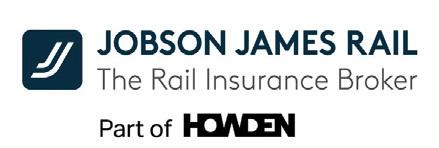
Antoinette
Stevenson, Marketing and Events Manager at Jobson James Rail, explains more about the RIN Events
Creating an essential marketplace for professionals in the rail sector
The Jobson James Rail team created RIN Events (Rail Infrastructure Networking) to provide networking opportunities and commercial support for our clients. These help infrastructure supply chain companies market themselves at a not-for-profit event, showcasing their products and services to major rail buyers at affordable cost.
RIN Events continue to grow from strength to strength and are now the largest dedicated rail infrastructure trade shows in the UK. At RIN London in March 2024, we hosted 134 exhibitors and welcomed 1,298 rail professionals through the door, representing over 800 rail companies. In addition, we organised 94 Meet the Buyer appointments between
exhibitors and heads of procurement from our NR Tier 1 Principal Contractors.
Attention now turns to RIN Derby, the largest RIN event to date, taking place at Derby Arena, on Thursday, 12 September. Exhibitor space sold out some time ago and registered footfall is building.
The final RIN Event of 2024 has moved to an exciting new venue. RIN York is now RIN Harrogate and is on Thursday 7 November at The Yorkshire Events Centre just outside Harrogate and near to the M1. There are more than 150 exhibitors set to showcase their products and services at both superb events.
Antoinette Stevenson, from Jobson James Rail, the organiser of RIN, explained: “We are a railway event run by railway people – our main


business is Jobson James Rail. We are the market-leading rail specialist insurance broker – we do not make a living from running rail events – hence why we have a low exhibitor price because we only look to cover our costs. We want to offer a great event to all the railway supply chain that presents both value and opportunity.
“Whether you are attending as an exhibitor or a visitor, RIN Events are
the best way for any rail infrastructure supply chain company to promote themselves to the wider industry. We have huge support and are very grateful to our major rail buyers who send their procurement managers to our events looking to source new supplier products and services.
“We bring the rail infrastructure industry together in one room for positive and proactive networking, enabling exhibitors and visitors to connect with each other and potential new customers to achieve business growth.”
Visitor tickets to RIN are free, and those attending are encouraged to register in advance to receive their free, printable event badge.
Call Antoinette 07849 835412 or register for your free visitor’s ticket at www.rinevents.co.uk



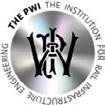



Contact Keven Parker on 07816 283949 | 0121 4528717 keven.parker@jjrail.co.uk WE ARE A RAIL SPECIALIST INSURANCE BROKER (RISQS LINK UP APPROVED) info@jjrail.co.uk www.jjrail.co.uk Why us? • Specialist rail knowledge • NEBOSH/Safety approach producing lower premiums • Contractual liability checking Better technical advice • Specialist rail safety consultancy site audits funded by insurers We insure RRV and Plant Companies • P-Way/S&C, S&T, OLE/Third Rail and Civils contractors • Rolling Stock Turnkey Modifications companies • Manufacturers, Wholesalers and Installers of rail products • ROSCOs and TOCs supply chain Rail Consultants, Surveyors and Design Companies Jobson James Rail is a trading name of Howden UK Brokers Limited, which is authorised and regulated by the Financial Conduct Authority No. 307663. Registered in England and Wales under company registration number 02831010. Registered Office: One Creechurch Place, London, EC3A 5AF. Calls may be monitored and recorded for quality assurance purposes. HUBL-CC-CS-JJR-002-0124 • Key exclusions identified with current liability and works insurances which we negotiated out • Site survey, management interviews and gap analysis conducted • Risk report presented to the insurance market • Fit for purpose cover secured with significant saving from that of previous premium Receiving recommendations from this happy client 52% SAVING RISK REPORT TO INSURERS 30-PAGE £14M TURNOVER SITE VISIT CONDUCTED PUBLIC LIABILITY WORKS AND PLANT DIRECTOR’S LIABILITY MOTOR FLEET £44,000 SAVING ON INSURANCE PREMIUM RAIL SIGNALLING CONTRACTOR£14M TURNOVER ADVERTORIAL 13 May 2024
David Brown, Managing Director UK Trains at Arriva, was appointed Chair of Rail Delivery Group (RDG) earlier this year. He writes about the challenges ahead
“We can create a simpler, more effective rail system”


Ihave now been in post for over four months as Chair of Rail Delivery Group (RDG).

In that relatively short time, a lot of significant events have happened. The draft Rail Reform Bill has been published kicking off parliamentary scrutiny of plans to bring forward much needed reform; Labour has outlined its plans for the railway; Network Rail’s budget for the next five years has been confirmed with significant investment planned to tackle the impact of climate change on rail; and sadly we’ve had continued industrial action that has resulted in disruption for our customers.



I am under no illusion of the challenges that we are facing as an industry, particularly around operational performance of the railway. But RDG’s mission hasn’t changed; we’re here to deliver a simpler, better railway for customers.



As Chair, I want to make sure RDG has clear areas of focus on the issues that matter to customers. As a board comprised of industry leaders, we recently set out eight strategic leadership priorities that are focused on improving the customer experience. This is about collaboration and leadership across the industry, and RDG has an important role in bringing the operators together. This includes significant customer issues such as improving train performance, driving revenue growth through railcards, business travel and campaigns, delivering a better customer experience, co-ordinating industrial relations and workforce reform, moving forward fares and ticketing reform, and enhancing and protecting the industry’s reputation.

















What continues to inspire me is the extraordinary work that happens – often behind the scenes – to keep over 22,000 passenger and freight trains running each day along 20,000 miles of track. All parts of the industry work together, collaborating and innovating to provide a better service to customers.


Seeing what sits behind the words includes such things as improving information to customers during disruption, delivering a coordinated industry response during industrial action, delivering marketing activity to drive overall industry revenue, and maintaining staff morale and the highest possible levels of reliability and punctuality during a sustained period of change.

Whether it’s open access or working via a Government contract, we all share the same ambition of a customer-focused railway with high-quality services at its heart that responds to customers’ needs.

While finances are important, it isn’t just about money



Why have we got these challenges and how are we going to meet them? Our railways have endured a difficult time in recent years, and it’s up to us to work collaboratively, provide leadership and demonstrate the great work that is happening across our industry.



There’s no denying the state of rail finances given rail’s operating subsidy last year (2022/23) was £4.4 billion or around an extra £56 million a week, which is materially larger than the £0.7 billion pre-COVID figure of 2019/2020. That means taxpayers are significantly funding the railway with money that could be spent on other services, like housing, policing, and the NHS. There is also the £2 billion or around 20 per cent drop in revenue from £10.3 billion in 2019/20 to £8.3 billion in the last full financial year.











By bringing forward the biggest rail reform programme in a generation, we can create a simpler, more effective rail system. And that is a journey we all want to take



















PEOPLE 14 May 2024





























































































Transport Benevolent Fund CIO, known as TBF, is a registered charity in England and Wales, 1160901, and Scotland, SC047016. TBF - Here to help and support YOU during times of need £1.25 a week covers you, your live-in partner and dependent children. TBF offers financial and medical benefits, a wide range of complementary and alternative therapies, bereavement grants and welfare advice. Supporting those in the public transport industry during times of need, hardship and distress for less than 20p per day . JOIN ONLINE TODAY www.tbf.org.uk 1923 TO 2023: MORE THAN ONE HUNDRED YEARS OF SUPPORT FOR PUBLIC TRANSPORT WORKERS DURING TIMES OF NEED.

I am under no illusion of the challenges that we are facing as an industry, particularly around operational performance of the railway. But RDG’s mission hasn’t changed; we’re here to deliver a simpler, better railway for customers
Most people in the industry would say our financial position is simply not sustainable. I think any current or future Government of any political persuasion is likely to agree and any industry in this position would need to make changes – given other public priorities in spending, and not forgetting we’re still in the middle of a cost-of-living crisis.
The industry needs to adapt to changing habits
Habits have changed – people are travelling far more for leisure than they were pre-pandemic, and with changed working arrangements, they’re travelling far less for business. Rail needs to adapt and across the sector, we’re trying to do just that.
In the latest quarter (October to December 2023), there were 417 million passenger journeys made in Great Britain. This is a 20 per cent increase on the 348 million journeys in the same quarter in the previous year.
Commuting as a share of the market is at 37 per cent, down from 45 per cent pre-COVID levels. The leisure market makes up around 55 per cent (up from 41 per cent pre-COVID). But passenger journeys are still less than pre-pandemic levels of 461 million in the same quarter four years ago (October to December 2019).
The simple answer is we need to get more people taking the train, more often, and we need to do that at an efficient cost. This has to be about innovating, agile decision making and making the customer a focus.
From the public’s perspective, rail is seen as fragmented and sadly this is having an impact on its reputation. For every positive story out there - and there is some fantastic work going on - the focus is on the negative, particularly around performance.
So, what do we do to get people back to rail? Through digitalisation and decarbonisation, rail can become the spine of a national, efficient, and
integrated system of low-carbon, accessible travel. It is crucial to bring customers back to rail with current schemes such as flexible season tickets and digital ticketing that reflect consumer needs and changing working and leisure patterns.
Moving to digital ticketing is important for Britain’s rail industry as increasing numbers of customers switch from paper tickets. Improved systems that are able to track smart ticket data and transactions will enable operators to monitor passenger journeys and customer behaviour, and to better plan services based on demand.
Making it easier for customers
We know that people still value the ability to travel by rail and want to use our services, however, we need to continue to make it easier for customers to travel and to meet modern expectations, and to offer reasons for people to travel with us. Initiatives like the Great British Rail Sale are a great example of the industry working together to entice more customers to choose rail. But work to improve the day-to-day experience is just as important.
The travelling public understand that sometimes their train is delayed, sometimes for reasons outside the control of either the train company or Network Rail, such as trespassing. But what is important is customers are provided with the most accurate information so they can complete their journey, as well as providing customer service and support to help with alternatives if that is needed. This is part of Smarter Information, Smarter Journeys programme which is delivering better and simpler customer information on all parts of the journey.
The Green Travel Pledge is the industry’s commitment to provide detailed, accurate and reliable data on the carbon emissions of rail journeys so businesses and their travellers are empowered to make more informed choices. The pledge will help encourage businesses to change their mode of transport away from car and plane to stimulate additional business journeys by train.
All these projects taken together are intended to improve our customer’s experience and demonstrate the value of rail. RDG is at the centre of this delivery whether legislation happens or not. There are things we can do now; we can improve the customer experience with comfortable and modern train designs, improved connectivity and onboard services, and real-time information systems for passengers, as well as streamlined ticketing.
By creating these eight priorities, we are getting on with the job and working in collaboration with the industry.
We need to get the railway industry actively thinking about journeys from door to door, rather than from station to station. And there’s a hunger across our members to make that integration happen.
We also need to convince those that fund the railway, the politicians and Government, as well as the private sector that rail has a future and is worth investing in.
By bringing forward the biggest rail reform programme in a generation, we can create a simpler, more effective rail system. And that is a journey we all want to take.
PEOPLE 16 May 2024


Returning to the helm of Spencer Group’s rail division is Managing Director Mike Halliday, a seasoned rail professional
Back in the driver’s seat: Mike Halliday to steer the future direction of rail engineering at Spencer Group

ith more than 27 years of rail industry experience, Mike first joined Spencer Group in 1996, when the promise of a brand-new BMW in his benefits package proved impossible to turn down!
After leaving Spencer Group in 2007, Mike worked in senior roles at other infrastructure contractors, before joining Network Rail in 2017. Serving as a route delivery director for the UK’s infrastructure owner and manager, Mike was responsible for the safe and efficient delivery of infrastructure projects. It was in this role, following the switch from contractor to client, that he developed a greater understanding of client requirements, and the key role contractors play in achieving these.
Following his time at Network Rail, Mike returned to Spencer Group in September 2023, fuelled this time not by the allure of a new BMW, but instead the opportunity to make a meaningful impact on the group’s rail business.
Mike’s leadership comes at a pivotal time for Spencer Group, buoyed by investments in technology and digital engineering.
He’s now leading Spencer Group into a brave new future, in an industry where demand for engineering excellence remains high, as budgets are slashed. As he explained: “As a business Spencer Group’s focus will be on understanding what clients require, in an environment where expectations remain high despite budgets being cut. The key question is ‘how do you strike a balance between what is affordable by the client whilst also meeting specification and output requirements’. This requires early understanding and that’s where our focus needs to be.”
Reshaping the business
As part of his remit, Mike explained that he has led a reshaping of Spencer Group’s project teams to incorporate design, development and delivery into a single entity on rail projects:
“As a contracting organisation, the focus is on the delivery of projects on the ground with the design and development side sitting behind the delivery team. Our aspiration is to move design and development out from underneath delivery to work in partnership with our clients and delivery teams.
Our pre-construction teams, working directly with clients will look to find the right solution at the right cost, within the required timescales. Following this, the delivery team and supply chain come onboard, working transparently with the client. This means what the client sees right from the beginning is what they get.”
Investing in technology
As Spencer Group looks to build on its success, the business is making strategic investments designed to help keep it ahead of the curve as contracting moves through the digital age.
As Mike explained: “We’ve got a fantastic set of systems within the business that allow us to understand where our projects are and help us to meet our clients’ expectations, by being able to forecast costs and identify change, potentially reducing costs. It’s great to see just how far we’ve come since I previously worked here. Having been at Network Rail and worked for a few other organisations.”
Over the past 20 years, Spencer Group has developed two key tools: DataCow and XER Schedule Toolkit.
ADVERTORIAL 18 May 2024
W
DataCow serves as the backbone of the entire organisation, offering secure email, document and design management, as well as HR, commercial, and procurement tools. It fosters connectivity between projects, teams, and data, incorporating powerful AI and machine learning features that automatically organise information and prevent loss of critical data and correspondence.
Supporting DataCow, XER Schedule Toolkit facilitates shared access for viewing, analysing and updating project schedules, thereby refining the planning process and ultimately contributing to the successful delivery of projects within set timelines and budgets.
Embracing digital construction
Amidst the digital revolution, Spencer Group has been enhancing its in-house Building Information Modelling (BIM) capabilities. By driving the production and utilisation of data-rich models across all branches of the company to enhance design drawing production, commercial quantity take-off, site snagging and hand-over. The unified digital twin serves as the primary source of information for the entire project team, including the client.
Chris Grosvenor, Digital Director at Spencer Group stressed the benefits of utilising data rich models “which keep contractors and clients better connected. When used effectively, a high-quality model, with a consistent information structure at its core, enables the client to reap the rewards and realise its true potential throughout the life of the facility, ultimately benefitting both parties by being ‘quicker, smarter, more reliable, and cost-effective’.”
The Importance of Early Contractor involvement
Spencer group looks to harness the benefits of Early Contractor Involvement (ECI) to ensure teams are engaged in projects at the earliest opportunity, often before design stage, to help shape technical development, Mike explained: “We’re always aiming to engage as early as possible, to help us fully understand the requirements. For us, the principle of getting involved and understanding at an early stage allows us to start working out what the right solution is for the project to fit budget and allow interrogation which helps build trust within client relationships.”
Another of the Group’s key strengths is that it employs internal civils, M&E, design and building teams, that can be brought into projects when required: “We are creating partnerships between the different parts of our business. So the whole business is part of the project journey, but the primary responsibility shifts from design and development into delivery at the appropriate time and delivery is always involved in what is being offered to the client to make sure that it is buildable, to the required budget.” Mike explained.
Being agile in an environment wanting change
Looking to the future, Mike said he wants Spencer Group to be seen as “the go-to organisation to find the right solution to deliver on time to the right quality, within budget.”
“We’re here to build projects at the end of the day. There’s a lot of process and contractual things that have crept in to project delivery, which could be addressed with better working relationships and better understanding through the design and development stages of their project.”
“In delivery, I want our clients to see us as selfassuring. This will allow us to start building different relationships that reduce overhead costs.
“I have a fantastic team with the skills and experience to deliver complex projects and I believe our offering makes us very agile in an environment wanting change.”
“We understand the rail environment and the cost pressures within it. We want to take our skills and help the industry address the challenges it has and help meet its aspirations,” he concluded.
For more information visit: thespencergroup.co.uk
I have a fantastic team with the skills and experience to deliver complex projects and I believe our offering makes us very agile in an environment wanting change
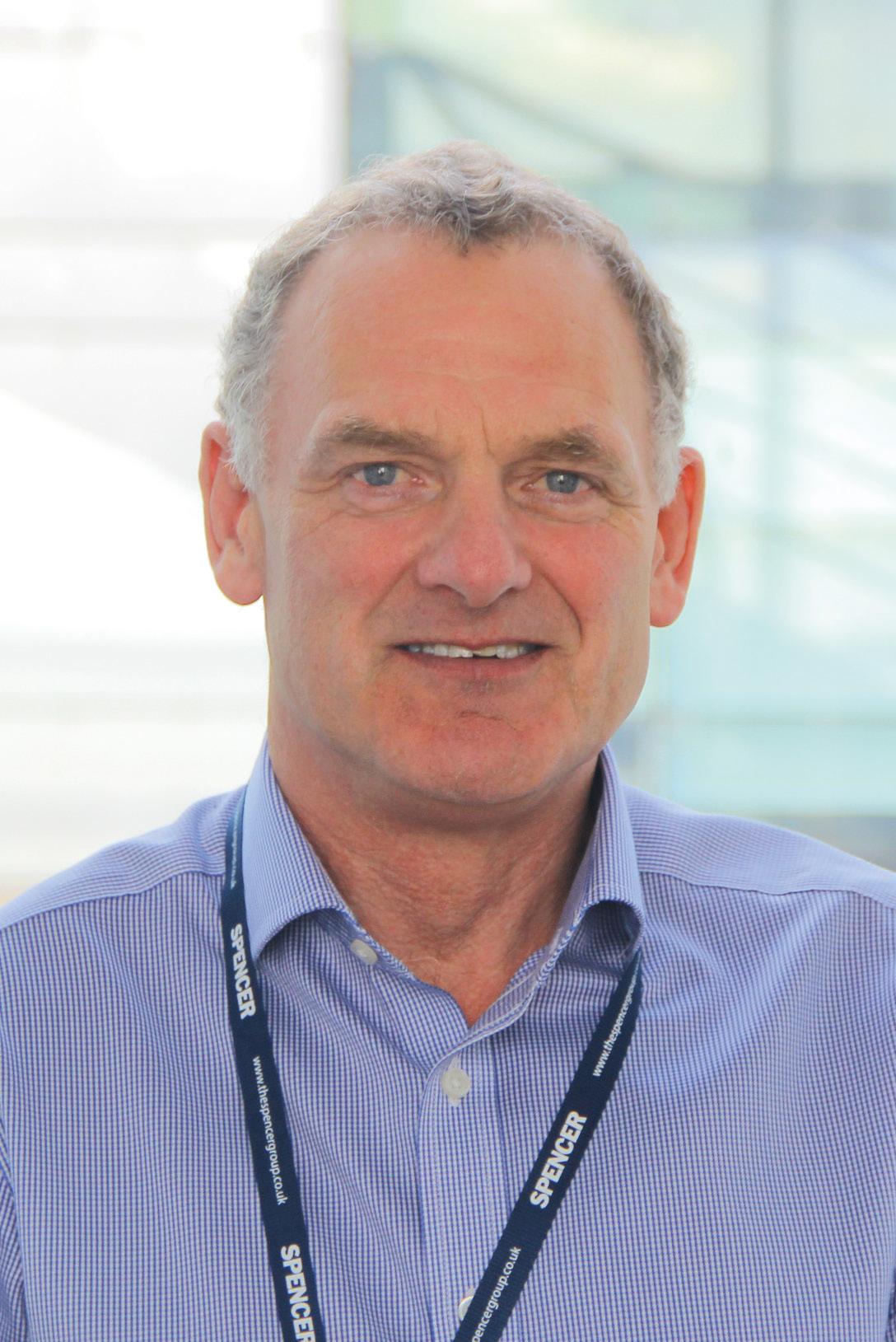
ADVERTORIAL 19 May 2024
Network
Rail’s ambitious target for
2024, aimed at achieving no net loss of biodiversity, underscores the growing need for expert ecological guidance. SEP Ecology has been established to meet this demand, offering robust and cost-effective ecological support to clients across the UK
Meeting the rail industry’s ecological challenges
SEP Ecology joins the SEP Rail Group as its sixth sub-company, reinforcing the Group’s mission to become the UK’s leading multi-disciplinary rail organisation. With over 20,000 miles of track and more than 200 sites of scientific interest. This extensive network is a vital habitat for diverse species such as bats, Great Crested Newts, badgers, various birds, and protected plants, all subject to strict legal protections. Non-compliance with these environmental laws can lead to significant penalties, including custodial sentences.
Addressing ecological concerns is a serious undertaking. In some instances, like the Great Crested Newt, fines for disturbing or destroying habits come with unlimited fines with reports of some exceeding £50,000. Outside of direct financial penalties, the discovery of an unknown habitat can completely de-rail your project, effecting all stakeholders and passengers.
Every minute counts
Having been involved in the rail industry for over two decades, Rikki Morrow, Managing Director at SEP Rail Services is no stranger to the importance of getting ahead of potential ecological problems. Speaking on one of the critical differentiators for SEP Ecology, Rikki stated, “This year, a significant proportion of our work at SEP Rail Services has been responding to emergency works, sometimes within hours of receiving the call.
In those cases, every minute counts, and waiting for a response or information from external agencies can put unnecessary pressure on the team. SEP Ecology has been established with efficiency at its core.”
SEP Ecology offers a comprehensive range of services, including Preliminary Ecological Appraisals (PEA), Emergency Ecological Assessments, Species Licensing, and Planning for Invasive Non-Native Species (INNS). Leading SEP Ecology into CP7 is Jo Bryan. With her extensive background in ecology, Jo brings invaluable insights and a wealth of experience to the industry.
“Fast response times are essential, but open communication is just as crucial. Ensuring clear channels between all stakeholders, not just the SEP Ecology team, but also with the client’s team and external bodies, ensures the right information reaches the right people at the right time.

With teams organised for rapid response, our on-site team performs comprehensive site assessments to identify any ecological concerns whilst our office team simultaneously provides desk-based assessments, reviewing known species, protected habitats, and EPSL considerations.” Jo explained.
This focus on communication helps streamline project planning and reduces the risk of miscommunication that could lead to delays or legal issues.
Drawing
on expertise
SEP Ecology’s integration within the SEP Rail Group brings unique advantages. Clients benefit from seamless in-house support, allowing for collaboration across different disciplines. Rikki Morrow pointed out that “Clients consistently tell us that working with the SEP Rail Group brings peace of mind and reduces delays. If they need assistance, it’s at the other end of the phone.”
The collaborative approach means that SEP Ecology can draw on expertise from other SEP Rail Group companies, ensuring comprehensive solutions for clients’ ecological needs.
A recent project in Bough Beech, Kent, showcases SEP Ecology’s rapid response and collaborative capabilities. Heavy rains had caused the embankment to become saturated, resulting in a landslip and subsequent suspension of services for two weeks.
SEP Ecology was called to the site to provide around-the-clock monitoring of trail cameras, checking for badger activity.
Speaking on the works, Jo commented: “The scale of the works required a coordinated effort, with SEP Rail Services, SEP Rail Design, and SEP Geotech providing assistance across monitoring, setting out, geotechnical design, and ground investigation.
For me, it was the perfect opportunity to see firsthand how well each company works together.”
With efficiency, collaboration, and open communication forming a key part of the culture at SEP Ecology, backed by a team of seasoned industry professionals, the company has entered Control Period 7 in a strong position. As Network Rail and other clients focus on achieving no net loss of biodiversity, SEP Ecology’s role becomes increasingly crucial, not only for the success of the industry’s schemes, but the wildlife and vegetation across the country.
SEP Ecology is hiring SEP Ecology is on the lookout for experienced ecologists to join its teams across Middlesbrough, Liverpool, Bristol, and Dartford. Offering a competitive salary and a work culture that prioritises employee well-being, this is a fantastic opportunity for forward-thinking professionals looking to advance their careers in a rapidly growing sector.
If you’re interested in finding out more, visit www.seprail.co.uk/recruitment.
ADVERTORIAL 20 May 2024
Design Engineer, Jonathan Telesca, joined the enGauged team in 2021. He explains how being a Small Medium Enterprise (SME) brings value that can’t be replicated to the rail industry
Why SMEs bring irreplaceable value to the rail industry
Since I joined enGauged in 2021, originally as an Assistant Design Engineer, I’ve had the opportunity to witness and contribute to the transformative power of SMEs in the rail industry. My journey so far, though challenging, has been incredibly rewarding.
The strength of SMEs: agility and teamwork
At enGauged, our culture lies within close-knit teamwork and agility. The collaborative ethos here is palpable with each team member bringing diverse ideas and solutions to every project.
This approach is particularly beneficial in our industry, where the demand for quality and precision is vital. Our size allows us to be nimble and responsive, adapting quickly to the needs of our clients and the demands of the projects we undertake.
Diverse projects, collective expertise
My role in recent projects, such as the temporary works design for a station and foundation design supporting the electrification of the Midland Mainline, highlight the unique value that SMEs bring to large-scale industry challenges. We manage such complex projects with a level of personalisation and attention to detail that is often difficult for larger organisations to replicate.
From assistant to design engineer: growth in an SME environment
Starting as an Assistant Design Engineer and progressing to Design Engineer, I witnessed firsthand the nurturing environment that SMEs like enGauged offer.
One of my earliest projects involved research into replacing concrete with gravel for the Down-the-Hole Hammer piling technique, which as a result of our research significantly increased efficiency in the use of this method.
Being able to deliver this research in a report demonstrated to me the supportive, knowledgesharing culture at enGauged, where learning and professional growth are highly encouraged.
The value of SMEs in the rail industry SMEs play a crucial role in the rail industry, often driving innovation and bringing specialised expertise to the table.

In an industry that is as established yet continually evolving such as rail, railway infrastructure design practices like enGauged provide the flexibility and creative problem-solving skills that are essential for meeting the complex demands of modern rail infrastructure projects. My career journey at enGauged so far, underscores the pivotal role that SMEs play in the rail industry.
As an SME, we are not just contributing to the
current projects; we are also shaping the future of rail infrastructure through innovative solutions, a collaborative approach and a deep commitment to quality and client satisfaction. My journey is not just about engineering; it’s about being part of a dynamic, responsive and innovative SME that is making a tangible difference in the rail industry.
To find out about enGauged’s rail infrastructure design services visit www.engauged.co.uk
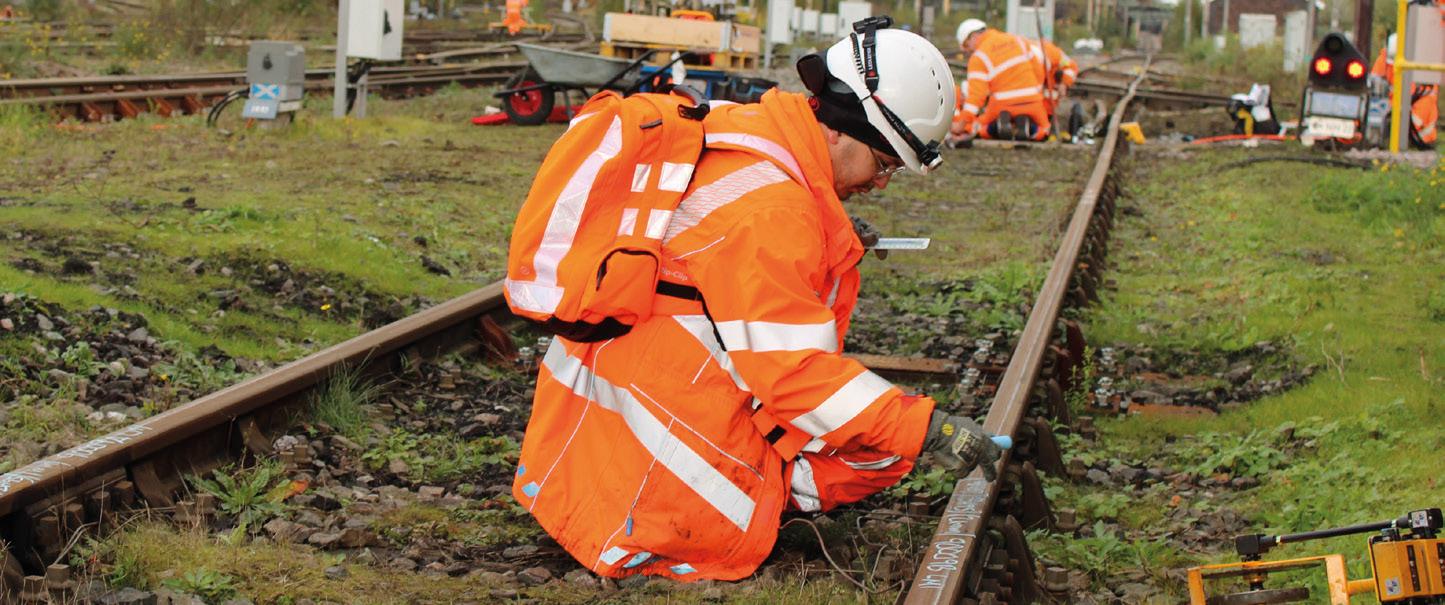
ADVERTORIAL 21 May 2024
Ian McConnell, Managing Director of West Midlands Trains, discusses the recent success of the train operator, and a vision for even greater success in the future
“One of the big success stories”

Ian McConnell is a man who likes a challenge. You could say it has been the story of his journey working in the railways, including in his current role of Managing Director of West Midlands Trains. His previous jobs have included Chief Operating Officer at ScotRail during the handover of the operator to a new public body, and Franchise and Programmes Director at Greater Anglia, as well as other project and leadership roles at ScotRail and London Overground.
“A lot of my previous jobs have all been characterised by having quite big challenges at the time or challenges ahead,” explained Ian, who recently celebrated his second anniversary at the operator. “West Midlands Trains is definitely in that category, having been through some pretty difficult periods with timetables and driver shortages in 2019,
and latterly COVID, which has changed the way the business runs.
“Having come through that, the last two years have seen the organisation transform from a challenged operator to one that is well respected and well performing, and one cited as one of the big success stories of the last few years.”
This position is set to grow even stronger for West Midlands Trains, which operates London Northwestern Railway and West Midlands Railway (WMR), particularly taking into account the ongoing £1 billion investment in new trains and infrastructure. Passengers on Birmingham’s iconic Cross City Line are the latest to benefit from the introduction of the Class 730, the new fleet which when fully rolled out will consist of 48 three-carriage trains, a total of 144 new carriages, carrying a third more passengers.
The investment also includes longer Class 730s,
used on the mainline taking customers between London, Birmingham and Liverpool, which are expected to come into service by early next year; and 26 Class 196’s diesel trains which were introduced on the longer commuter routes into Birmingham, improving capacity by around 25 per cent.
“I’ve thoroughly enjoyed my first two years at West Midlands Trains and I’m looking forward to the future with the exciting opportunities ahead,” he said. “Reflecting on the success of recent years I think this has been down to my fantastic colleagues and perseverance.
“From a practical point of view the business has made good choices in how it has recovered from the challenges, ensuring that we have a timetable that works and having enough train crew, of which a solid platform was set even during the COVID pandemic.”
Discussing the latter in more detail, Ian explained
TRAIN OPERATORS 22 May 2024
how the business came up with a solution during the height of the pandemic when training was hit due to the restrictions of social distancing, a constraint when at least two people need to be in a train driver’s cab during training.
“We developed a solution with our owning group to create bubbles of drivers that could mix which allowed them to continue with the training,” he said. “It ensured that we didn’t fall behind in terms of training and led to us being in a solid position out of COVID. Putting the plans in place during the pandemic has been really important and then subsequently it has been about putting in place the right train plan, the right timetable, and adapting to the new customer demands in terms of travel patterns, particularly around people commuting in different ways and with more leisure travel.
“Alongside this there has been the £1 billion investment, which although challenging when changing the majority of our fleet, has really galvanised the business, and given us something to focus on which we know is going to improve performance and customer experience. Ultimately we’re going to have a much better product and service and something that is going to work much better for customers.
“Not making the headlines is often the best thing you can do because what people want are the basics and if people can travel in more comfortable, modern trains, with information screens and air conditioning then it is going to be a much better experience. It is


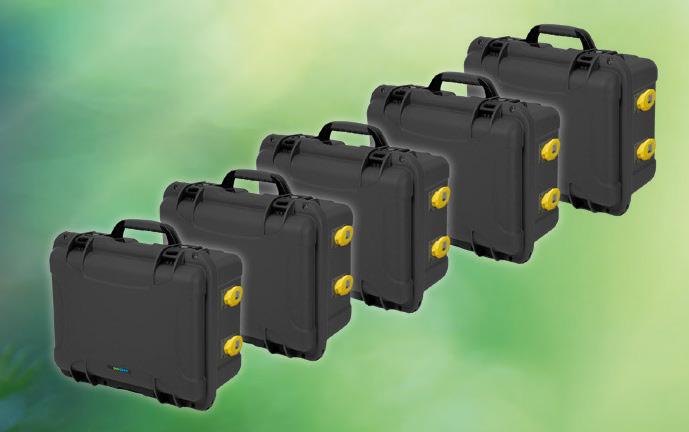















T: sales@nightsearcher.co.uk E: +44 (0)23 9238 9774 W: www.nightsearcher.co.uk BATTERY POWERED GENERATORS PROVIDING CLEAN AC POWER IDEAL FOR TUNNELS, REMOTE LOCATIONS OR WET OUTDOOR USE Free from Noise and Exhaust Fumes REPLACING OLD PETROL + DIESEL GENERATORS 3000+ CYCLES 600W 1500W 3000W MODELS: Optional Expandable Battery Packs • Ultra-Rugged Rugged IP67 Waterproof Case With Lifetime Warranty • Rechargeable LifePO4 Battery • Extendable Handle • RCBO Protection • Fast Charging Multiple Ports • LCD Display • Pure Sinewave BRITISH ENGINEERED DESIGN To find out more: CLEAN ENERGY - ZERO EMISSIONS 240V OR 110V MODELS AVAILABLE IP67 DESIGNED FOR INDUSTRIAL USE Add up to 8x more power 13860Wh Weight: 18kg Each | Size: 429 X 328 X 236mm Capacity (Wh) 1540 Each Increase Capacity 1989-2024
last two years have seen the organisation transform from a challenged operator to one that is well respected and well performing, and one cited as one of the big success stories of the last few years TRAIN OPERATORS 23 May 2024
The
We have an important role to play in driving forward innovation which could benefit not just West Midlands Trains but potentially the wider industry
Below: Another big part of WMT’s investment - the Class 196 - serves major conurbations including Hereford, Worcester and Shrewsbury.
about getting the basics right, but then raising the levels, making the product better and the experience better as well.”
Ian has also praised new owner Transport UK Group (TUK) which little over a year ago took over control following a management buyout from Abellio UK and its Dutch shareholder Nederlandse Spoorwegen.
“The key to the recent success has been the emphasis on getting the basics right, something that has been driven by our owning group, building on the long, successful history of Abellio,” he said. “West Midlands Trains and all of the train operators that TUK run have all benefited from a similar type approach, so there is a commonality there and there’s a real success story and support that’s provided by the owning group in what to get right and what not to focus on at certain times, working in collaboration with other operators to share best practice.”
Turning attention to the future and the short answer from Ian is for West Midlands Trains to continue on the positive trajectory it is on while continuing to improve for customers and getting over the ongoing industrial action.
“Beyond that, we’ve got some ambitious plans that go beyond the current £1 billion investment,” he said. “Given the right tools and support we would like to be

able to implement those plans and I think we could make a massive difference and actually take ourselves from a good place to a great place.”
An example Ian gives is around the Midlands Rail Hub, a £1.5 billion blueprint for faster, better and more frequent connections across the Midlands.
“We are part of that as an operator but we’ve got some really innovative ideas of how we can speed up and deliver some of that change quicker and more cost effectively,” he said. “One of the big initiatives in Midlands Rail Hub is increasing the number of trains on the Cross City Line from four trains an hour to six trains through infrastructure interventions. We think with our ideas we can do that quicker through operational solutions with some infrastructure as well, saving money and bringing those improvements around quicker as well.”
Another area Ian believes West Midlands Trains can offer improvements is around improving connectivity between the North West and the Midlands, something that has taken on extra significance following the Government’s cancellation of the Northern leg of HS2 which was going to improve rail connections between Birmingham and Manchester.
“It’s not to say that what we’re proposing will replace the Northern leg of HS2, but we’ve got ideas that will improve the current connectivity, for example between Birmingham city centre to Manchester Airport and also additional services from London through the Midlands up into Manchester city centre,” he said.
“My ambition is to try and get support to deliver those plans, which are much shorter term, much more immediate and what we’re talking about is using largely existing infrastructure, changing the way the services run to improve the connectivity between the North West and the Midlands. It doesn’t cost much, it just involves a bit of work to get it organised, additional train crew and trains, all of which we have either got already or we can quite easily get. This could happen within a few years. It would be very beneficial for sure.”
There are also ambitions when it comes to future trains.
“What we’re looking at is more innovative trains essentially to replace some of the ones in the future that we’ve currently got,” he said. “That might be hybrid trains which can run for example if they’re travelling through Birmingham. They can switch to diesel for the non-electrified routes as they come into the city centre and then switch to a more green solution like a battery or an electric mode as they come through the city centre.
“That’s the type of thing we’re looking at, some more innovative train solutions that can reduce the carbon footprint and reduce diesel emissions. There is a lot of opportunity around the development of new technology and with partnerships with the University of Birmingham we foresee we will have a role in bringing new technologies to the market.
“We have an important role to play in driving forward innovation which could benefit not just West Midlands Trains but potentially the wider industry, playing an even more vital role in supporting customers, businesses and business growth.”
TRAIN OPERATORS 24 May 2024
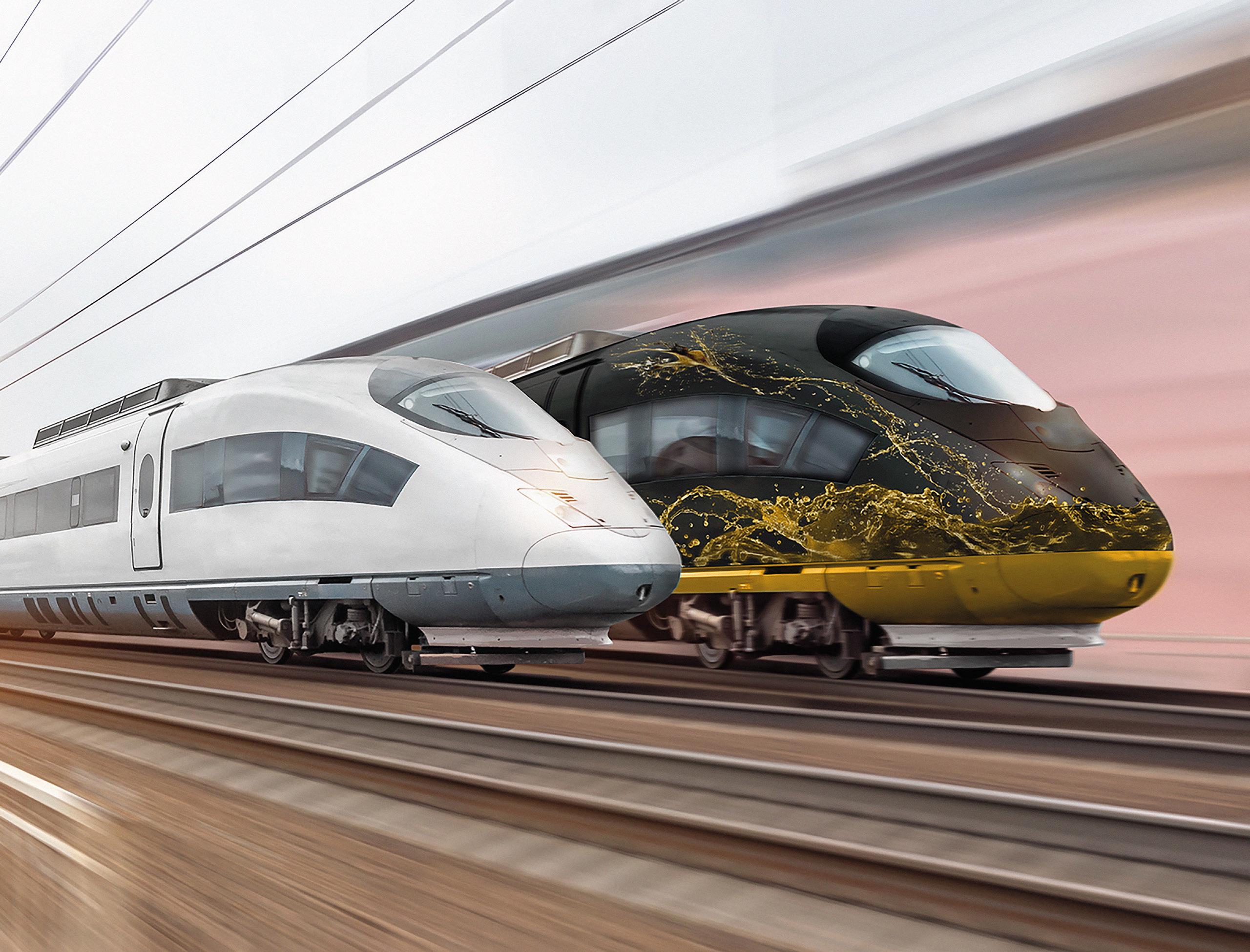

High-performance lubricants for the Rail Industry to ensure your trains run on time in all weather. - Extended maintenance intervals and predictable downtimes - Optimal lubrication schedules - Increased energy efficiency - Reduced CO2 emissions - Less lubricant wastage info@uk.klueber.com www.klueber.com/uk/en Together beyond lubrication SCAN ME
Daniel Edwards, Business Lead and Director at Heathrow Express, explains how an inclusive culture and strong proposition are helping the operator to stand out
Taking Heathrow Express to new heights

Heathrow Express has always been a different kind of train operating company (TOC). Launched in 1998, the non-franchised, non-subsidised airport rail link runs non-stop services from London Paddington to Heathrow terminals two, three, and five. Every day, around 17,000 passengers travel on these services, which take just 15 minutes (to terminals two and three) and 21 minutes (to terminal five) respectively. Today, it operates in partnership with Great Western Railway (GWR).
And, as Business Lead and Director Daniel Edwards told Rail Director, the mold-breaking TOC has never been afraid to innovate. It was the first train company to introduce e-ticketing, and the first to develop a fully functional ticketing app. Passengers now enjoy super-fast 4G on board its services, while children aged 15 and under travel for free with a farepaying adult.
Daniel is particularly proud of this pioneering spirit, citing it as one of the reasons he opted to return to Heathrow Express in 2022 after an initial stint as its Commercial Customer Service Manager between 2018 and 2019.
“I’d always kept one eye on the Business Lead role,” Daniel recalled. “I knew Heathrow Express was a dynamic, innovative, creative environment where you could really make a difference. I missed that big people management, so coming back as Business Lead and Director in October 2022 seemed like the right thing to do.”
A career spanning air and rail
It was the next logical step in a career that has seen Daniel move between aviation and rail. After cutting his teeth as a Pontins Blue Coat (“I thought I was going to be a television presenter!”), he took a cabin crew role with Flybe.
“I quickly became a cabin crew trainer,” Daniel remembered. “I loved aviation, which is an exciting industry, and there was an opportunity to become a manager for British Airways. It was a unique new role, with 80 per cent flying, and 20 per cent on the ground, managing a team and developing our service proposition.”
While Daniel recalls his time at British Airways fondly, he soon realised that his future lay elsewhere –and jumped at the opportunity to join Northern.
He became Hub Station Delivery Manager for the operator in 2016, overseeing five major stations – Manchester Piccadilly, Manchester Oxford Road, Manchester Victoria, Liverpool Lime Street, and Leeds.
“I was working in station operations as someone who didn’t really know about the railway,” he admitted. “But I learned that I was bringing from the aviation industry was a fresh perspective, a new outlook, and some of that sparkle.”
Daniel was promoted to Head of Customer Experience at a “very challenging” time for Northern, which had outsourced its customer relations activities to a third party after franchise changes. It proved to be a valuable learning experience for the young rail professional.
He added: “I found that people who were paying £15,000 for a first class airline ticket weren’t half as passionate about their journey as those who spent £2.50 on a ticket from New Pudsey to Leeds every day.
“I started realising how important rail was, not just for getting people where they need to go, but for connecting communities, and connecting people to
TRAIN OPERATORS 26 May 2024
Images: Heathrow Express
workplaces, friends, and families.”
In 2018, Heathrow Express approached Daniel with a new opportunity.
“The role was Commercial Customer Service Manager, looking after our Turn Up and Go channel,” he explained. “I wanted to prove that I had talents and abilities beyond customer service, and it was great to take on that commercial responsibility.”
A series of roles at Heathrow Airport followed – and, in 2021, he was promoted to its Head of Category - Duty Free, Luxury, Fashion, Media & Commercial Telecoms.
“It involved heading up some of our biggest retail accounts,” he said. “It was all about how we could maximise profitability and deliver new commercial revenue streams through our retail offering, while still providing a great customer experience.
“I learned an awful lot in that part of the business, and it prepared me well to step back into Heathrow Express.”
A dynamic environment
Reflecting on this decision, Daniel explained that Heathrow Express’ agility and willingness to innovate were key factors.
“Despite us proudly being part of the airport, our thinking is different,” he said. “We’re our own business unit, and can innovate and try things out, as long as we’ve risk assessed them properly and they’re safe to do.
“If we see an opportunity, we can deploy tactics

and ideas quite quickly, and one of the things I’m really keen to maintain at Heathrow Express is an environment where people aren’t afraid to fail, test, and learn. If you’ve got an idea, let’s give it a go – and if it doesn’t work, we’ve learned just as much from that.”
These efforts are underpinned by Heathrow Express’ culture of inclusivity, which ensures that employees feel confident and empowered at work.
“I’d probably be the first to say I’m not your typical railway man,” Daniel commented. “In areas of my personal life, I’ve sometimes felt I have to mask or change who I am to fit in, and I want to create an
environment where people can come to work and be authentically themselves.
“They shouldn’t have to hide who they are, whether that be their ethnicity, gender identity or sexuality. It’s about ensuring they can bring their best selves to work – because to run a successful organisation, I need everyone operating on their A game. And I wouldn’t want anyone to feel like they couldn’t operate at their best because they were having to hold part of themselves back.
“We value our differences, and the way that brings diversity to our organisation. Diversity in the way we look at problems, and solve them together,


KIDS 15 AND UNDER TRAVEL FREE HEATHROW TO LONDON FOR JUST £15PP THIS SUMMER* *T&CS APPLY heathrowexpress.com TRAIN OPERATORS 27 May 2024

is really important to me. Turning up and being yourself is the best thing you can bring to a business.”
Valuing diversity
Daniel added that, in practice, this means working closely with employee representation groups and developing the right people policies.
“We work with the airport and our trade union colleagues to make sure we have a fit-for-purpose set of people policies,” he explained. “It’s not the most glamorous aspect of diversity and inclusion, but it’s about putting your money where your mouth is, and showing this is something you really care about as an organisation.”
This commitment extends to Heathrow Express’ customers.
Daniel commented: “It’s also about how we show up as a brand externally. Working in an airport, we set the scene for so many different people coming to this country from around the world – perhaps fleeing from places where they’re not able to be themselves.
“Being an organisation that demonstrates ‘you are in a safe place now’ is important. It might be as simple as wearing a rainbow lanyard, or our frontline teams speaking different languages. We’re proud of the diverse nationalities we represent.”
Daniel is also keen to support local groups, pointing to Heathrow Express’ community outreach work. The operator recently partnered with Pursuing Independent Pathways, a charity for adults with special educational needs.
He explained: “Our team have put together an incredible package of travel familiarisation days, so that adults with special educational needs can come and spend a day with them on the train, experiencing what it’s like to travel.”
Coupled with Heathrow Express’ PR campaigns around diversity and inclusion (last year, the operator welcomed stars of RuPaul’s Drag Race to Paddington station), this work has, Daniel believes, cemented its reputation as an “organisation with a heart.”
He’s also keen that Heathrow Express learn from its frontline teams, adding: “I’ve got a great senior leadership team, but I get some of my most valuable insights from colleagues who are out there working with customers every day. It’s about creating an environment where two-way feedback and ideas generation isn’t something that just happens in the boardroom.

I knew Heathrow Express was a dynamic, innovative, creative environment where you could really make a difference
“There are ideas that we’re implementing now that are coming from frontline colleagues, in terms of our commercial offerings. We’re getting more groups of three travelling together, so we’ve just launched a ‘three together’ ticket that allows colleagues to have the best tools in their armoury and offer great service to customers.”
Challenges ahead
And offering great service will be key if Heathrow Express is to overcome the challenges ahead. Chief amongst them is the industry’s reputation, with some airport users reluctant to put their trust in rail ahead of an all-important flight.
“The biggest challenge we’re facing is probably around the reputation and reliability of rail to get you where you need to be,” he admitted. “We’re pushing Network Rail to understand their investment to improve infrastructure reliability. I’m encouraged to see that the Wales and Western Route has got a strong plan for delivering investment and improvements to performance.”
Asked how Heathrow Express has reacted to the emergence of a new competitor – the popular Elizabeth line – Daniel explained that he considers it a complementary service.
“The Elizabeth line does an incredible job,” he said. “It connects Heathrow to parts of the capital that have never been connected to the airport by heavy rail before. It’s an amazing thing for customers, and it also offers up a whole new world of employment opportunities in terms of people from East London working at the airport.
“We do two completely different things, and I see the two services as complementary rather than competing with one another.”
Built with the airport customer in mind
Daniel added that Heathrow Express is working to appeal to an international audience.
“One thing we need to do is understand that our audience isn’t necessarily a London audience,” he said. “How can we make sure that Heathrow Express is being promoted effectively around the world? Do people know that our service is the way you get to central London in 15 minutes, and that our trains have been built with the airport customer in mind?
“They have additional luggage space, superfast Wi-Fi, and toilets on board - all the extras you would expect from a premium service. But crucially, we also have colleagues on hand to help throughout your journey to and from the airport. This is important, whether customers are by themselves, travelling with children, or don’t speak English as a first language. I’d never underestimate the power of people as one of our USPs.”
Daniel added that, post-COVID, the airport customer has changed, with Heathrow welcoming more leisure travellers than ever before. For the UK’s largest airport, 2024 looks set to be busier than 2019 – news he called “fantastic.”
“Now, we need to ensure that Heathrow Express feels relevant and attracts people who maybe haven’t travelled with us previously.” he added. “It’s not about waiting for business travellers to come back. It’s a case of how we can actively demonstrate Heathrow Express has a great proposition for young families, or the costconscious traveller. You can always buy a cheaper ticket online, while children under 15 travel free.”
And tailoring its commercial offering is enabling Heathrow Express to stand out in what Daniel calls a “crowded environment”.
“One of our biggest competitors is ride-hailing apps,” he said. “But our trains offer something different. People can use that 15-minute journey to catch up on emails, have an important conversation, or just sit back and watch the world go by. You’d be surprised how many people have business meetings on Heathrow Express – something you can’t necessarily do in the back of a cab. We believe heavy rail is the way to go.”
Indeed, Heathrow Express’ Business Lead and Director is optimistic about the future.
“We’ve got a great proposition,” he concluded. “We just need to ensure it’s landing in the hearts and minds of the people travelling through the airport.”
TRAIN OPERATORS 28 May 2024
Complex rail project?

Panel Lifter
Our patented system that removes and replaces rail panels swiftly and safely.

TCT
Specially designed to effectively lift, transport, and dispense cable from pre-wound reels.

TRT™
The industry’s safest and most efficient way to move and install lengths of rail and iron work.

MMPV
Self-mounting, self-propelled, self-loading vehicle that can complete a variety of tasks.


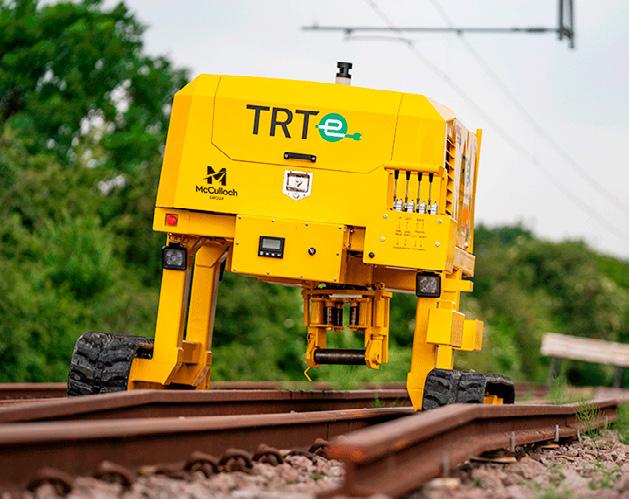
TRTe
Our all-electric solution to move and install lengths of rail and iron work.

MTS
Our McCulloch Turnout Solution is the perfect solution to move and replace S&C.
It’s time to try ‘the McCulloch way’.
NEW Find out more at mccullochgroup.com
The Railway Industry Association will be holding its Trailblazers Summer Networking Reception next month at the KIA Oval in London. Keynote speaker Dr Mark McBride-Wright MBE shares his own journey and the importance of initiatives like Trailblazers
Bringing together young and experienced professionals from across the industry

Dr Mark McBride-Wright MBE, CEng, FEI is a distinguished leader in diversity and inclusion, passionate about creating inclusive environments where everyone has the opportunity to succeed. His efforts haven’t gone unrecognised, having received the prestigious Rooke Award from the Royal Academy of Engineering in 2022 and an MBE a year later for services to diversity, equity, and inclusion.
Next month he will be drawing on his own experiences, which include founding and being Chief Executive Officer of EqualEngineers, and emphasising the importance of leadership that prioritises safety, inclusivity, and empowerment when he speaks at the Railway Industry Association’s (RIA) Trailblazers Summer Networking Reception on June 13 at the KIA Oval in London from 5.30pm to 8pm. EqualEngineers has been instrumental in connecting over 10,000 diverse job seekers with more than 100 inclusive employers through more than 50 engineering and technology career fairs since 2017.
“It is truly an honour to be involved in the Trailblazers initiative,” he said. “This programme plays a crucial role in bridging the gap between generations within the rail industry, fostering an environment where knowledge and experience can be shared freely. The opportunity for young professionals to learn directly from seasoned experts is invaluable, and vice versa.

“Additionally, it creates a platform for new connections and collaboration, which is essential for cultivating a vibrant and diverse workforce. Celebrating this diversity is not just about recognising the differences but also about valuing the unique perspectives that each individual brings to the table. As an entrepreneur and engineer, seeing such initiatives flourish reaffirms my belief in the power of collective growth and development.”
The Trailblazers initiative brings together young and experienced professionals from across the industry, to enable them to learn from each other, make new connections, and celebrate a vibrant and diverse rail workforce. Previous years have seen more than 200 people from across the industry attend this networking reception, which supports the vision of the Equality, Diversity, and Inclusion (EDI) Charter launched by RIA and Women in Rail.
Attendees to next month’s event are being encouraged to bring a plus one, with a senior professional encouraged to bring a junior colleague or mentee; and a more junior professional bring a senior colleague, although this is not compulsory.
“Initiatives like Trailblazers are pivotal in driving forward the agenda of EDI within the rail industry,” added Mark. “The EDI Charter’s growing list of signatories demonstrates a strong, united front among organisations committed to these values. However, to truly embed these principles across the industry and beyond, we must continue
to actively promote and communicate the benefits of EDI to wider audiences.
“This can be achieved through outreach programmes, partnerships with educational institutions, and by highlighting success stories of diverse teams and inclusive cultures. Engaging with media and leveraging social platforms to share these narratives can also help attract individuals from various backgrounds who may not have previously considered a career in rail.
“At EqualEngineers, we focus on attracting, developing, and retaining talent in engineering by showcasing the potential for a fulfilling career in a supportive and inclusive environment. I also believe how we frame EDI to involve majority groups is critical and I cover this in my new book, The SAFE Leader, which delves into the critical aspects of leadership in high-stakes environments, particularly within engineering and technology sectors. The book explores the concept of safety from multiple angles— physical, psychological, and emotional. It provides insights and strategies for leaders to create safe, inclusive, and productive workspaces, with the aim of inspiring leaders to adopt practices that not only enhance safety but also drive organisational success and innovation.”
Visit www.riagb.org.uk/TRAIL24 for more details about theTrailblazers Summer Networking Reception and www.equalengineers.com for details about EqualEngineers.
RAILWAY INDUSTRY ASSOCIATION 30 May 2024
Train operations
Freight safety
Public behaviour
Passenger operations
Health and wellbeing
Passenger and staff assaults
Occupational health and safety
Level crossings
Fatigue
Safety and health: Asset integrity
We’re with you every step of the way

Leading joined-up thinking to support safer, smarter rail
Britain’s rail network originates from an industry with a uniquely collaborative culture – and every inch is underpinned by dedication to safety and health. But the network’s complexity means we can only get the full benefits of everyone’s safety when we join up the different areas of collaboration, to see the whole system. This lets rail direct its resources to where they’ll do the most good.
T he new Rail Health and Safety Strategy will lead us in this direction. Drawn on detailed consultation across the industry, and led by industry risk groups, it has been designed by industry, for industry.
Discover RSSB’s role in unlocking whole-system solutions. Read the new Rail Health and Safety Strategy: www.rssb.co.uk/thestrategy

Britain’s rail industry is a vital part of its economy and society. It provides essential transport for passengers and goods. It also has a great safety record, but we cannot become complacent as explained by the Rail Safety and Standards Board (RSSB)

Balancing safety, health, and affordability: the key goals of the new Rail Health and Safety Strategy
As an industry, we continue to face new challenges. The impact of climate change and meeting changing customer needs are among them. As we work with Government to put in place new structures and ways of working, we must be vigilant in assuring the health and safety of those using the network and those working on it. At the same time, we need to keep embracing the opportunities that new technology brings. And we must operate within the bounds of affordability.
Building on previous successful strategies, we have now published a new five-year Rail Health and Safety Strategy. It was developed through extensive industry consultation and is grounded in class-leading risk analysis and underpinning data.
It seeks to deliver the healthiest and safest affordable railway in the world. This vision was created by the industry for the industry. And underpinning it are three key principles:
Making rail more attractive
We want to improve performance and accessibility so that rail is a practical and attractive option for everyone.
Enhancing safety management
We’re looking for better, more effective ways to manage existing and emerging safety risks.
Prioritising workforce wellbeing
We want to make sure staff are safe and healthy so that more people want to work in rail.
The strategy covers five key risks:
Public behaviour.
Health and wellbeing.
Operations.
Occupational health and safety.
Asset management.
For each risk area, it sets out key activities to improve the health, safety, and wellbeing of our workforce and the safety of all others who interact with the railway. The strategy also lays out the opportunities that offer the greatest benefit and value from working together.
The result is a set of strategic road maps. In each
HEALTH AND SAFETY 32 May 2024
Images: RSSB
case, there are clear intents and proposals to deliver practical outcomes. The areas interlink, so the whole strategy needs to be implemented to shift the safety performance and safety culture of the industry.
The strategy also sets out activities that will help progress health and wellbeing management to the same level as safety. For example, it identifies ways to embed practices that manage fatigue risk effectively across the industry. All rail colleagues should have a safer, healthier, and better working environment.
It looks to address the key issues of over-speeding, signals passed at danger (SPADs), and overruns. It strives to improve safety performance and accessibility around our stations and on our trains. This, in turn, supports rail’s sustainability goals, as do the actions that support freight sector growth.
The strategy also identifies collaborative activities to ensure we have a safe, high-performing, and costeffective asset base. The assets are there to provide value, and that value comes from their ability to support rail services. We must ensure that railway assets continue to perform as a whole system, effectively, safely, and at an acceptable cost. To do this, we must share intelligence and apply consistent approaches to managing risk.
Trespass and suicide remain a concern. The strategy will support the industry to deliver a continuous and sustainable reduction in these events. Level crossing risk needs to be managed systematically. Work-related violence must be also reduced so that it is no longer a key risk for the industry.
We need to work together to deliver this vision. This means going beyond our duty to cooperate to proactively collaborate. The Rail Health and Safety Strategy provides the framework to encourage organisations to collaborate. The benefits of doing so are worth spelling out:
The railway is a complex system with many interacting parts. Many problems are not solvable in isolation.
Collaboration makes the most of available resources. Addressing problems alone can be costly, so coming together as a collective brings considerable cost savings.
Working together can allow for innovative problem solving, expanding the boundaries of what is possible.
Collaborative working can provide assurance. It is an enabler to achieving higher levels of maturity, as set out in the Office of Rail and Road’s Rail Management Maturity Model. It allows organisations to learn from each other.
Better, whole-system solutions can be identified when problems are tackled together. All parties need to work together, facilitated at the national level by the cross-industry health and safety groups aided by RSSB.
This strategy is all about collaboration—industry taking action, sharing good quality data, and
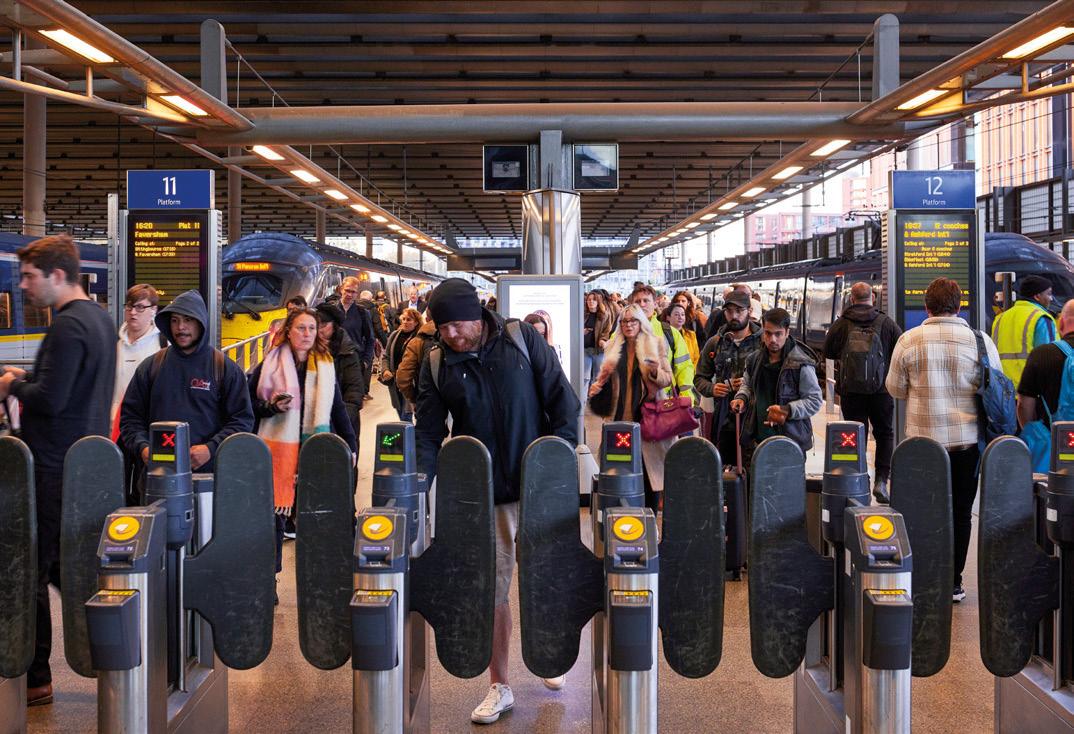

measuring progress. By implementing this strategy, the rail industry will demonstrate its leadership and excellence in safety and health management. It will also contribute to the social and economic wellbeing of the UK. Collaboration will provide a path to delivering the healthiest and safest affordable railway in the world.
Visit www.rssb.co.uk/safety-and-health for more details.
This strategy is all about collaboration— industry taking action, sharing good quality data, and measuring progress


HEALTH AND SAFETY 33 May 2024
One Big Circle explains more about using predictive maintenance to combat climate change
Combating climate change


With the industry facing increasing challenges due to the effects of climate change, Network Rail, operators and the rail supply chain have to work together to build climate resilience, using a range of tools that advance the predictive maintenance of the railway’s critical national infrastructure.
Automated Intelligent Video Review (AIVR) is one such tool in this battle. A system that helps engineers understand change and impact in more detail, one where software and rail engineers work closely together to detect and monitor faults over time on the railway, covering track, electrification systems and high-risk flood areas, caused by today’s extreme weather. This knowledge, built to combine and integrate with wider insight and work management tools, enables maintenance teams to be quickly dispatched to rectify faults that could endanger the UK railway’s critical national infrastructure, putting safety, and performance reliability, at risk.
Remote monitoring of track condition
AIVR assists engineers in monitoring the status of the track condition and other lineside assets. Through ongoing collaboration with multiple teams and disciplines, sharing their rail expertise and challenges, and alongside other experts in the supply chain, much progress is being made in detecting a range of track faults, often caused by weather, such as wet beds, voiding, low ballast, and the rail itself.
With ever-increasing heavy rain, the ballast under and around the track sometimes fails to drain due to blockages in between the individual ballast stones, often caused by contamination. The resulting build-up of water in the ballast, known as a ‘wet bed’ can cause localised track geometry deterioration and, in severe cases, necessitate the imposition of temporary speed restrictions. The only solution is an intrusive intervention such as ballast replacement or track renewal.
Even when well-drained ballast can pack down in service, meaning it no longer adequately supports the sleepers and track. Low ballast levels can cause issues with track stability and drainage and, in severe cases, lead to track movement and the formation of wet beds. An extreme form of low ballast is voiding, when a gap is created underneath the sleepers. This allows the track to move vertically when a train passes over it, damaging the track and giving passengers an uncomfortable ride. The phenomenon can also contribute to rail breakage and damage to switches and crossings.
Having worked closely with Eastern route on this challenge, AIVR now helps identify and monitor these issues and feeds into the remedial planning based upon the severity of the problem, without the need for ‘boots on ballast’ and the associated risks of an in-person inspection on a live railway.
The steel rails themselves are also remotely monitored. As good conductors of heat, steel rails expand and contract as their temperature rises and falls, which can result in the track growing and buckling in the middle, as they are restrained at both ends. This can result in the derailment of trains, which has huge safety implications, alongside operational challenges. There are several measures in place to prevent this
ADVERTORIAL 34 May 2024
Wet Bed/Voiding Detection Scrap
Rail Detection
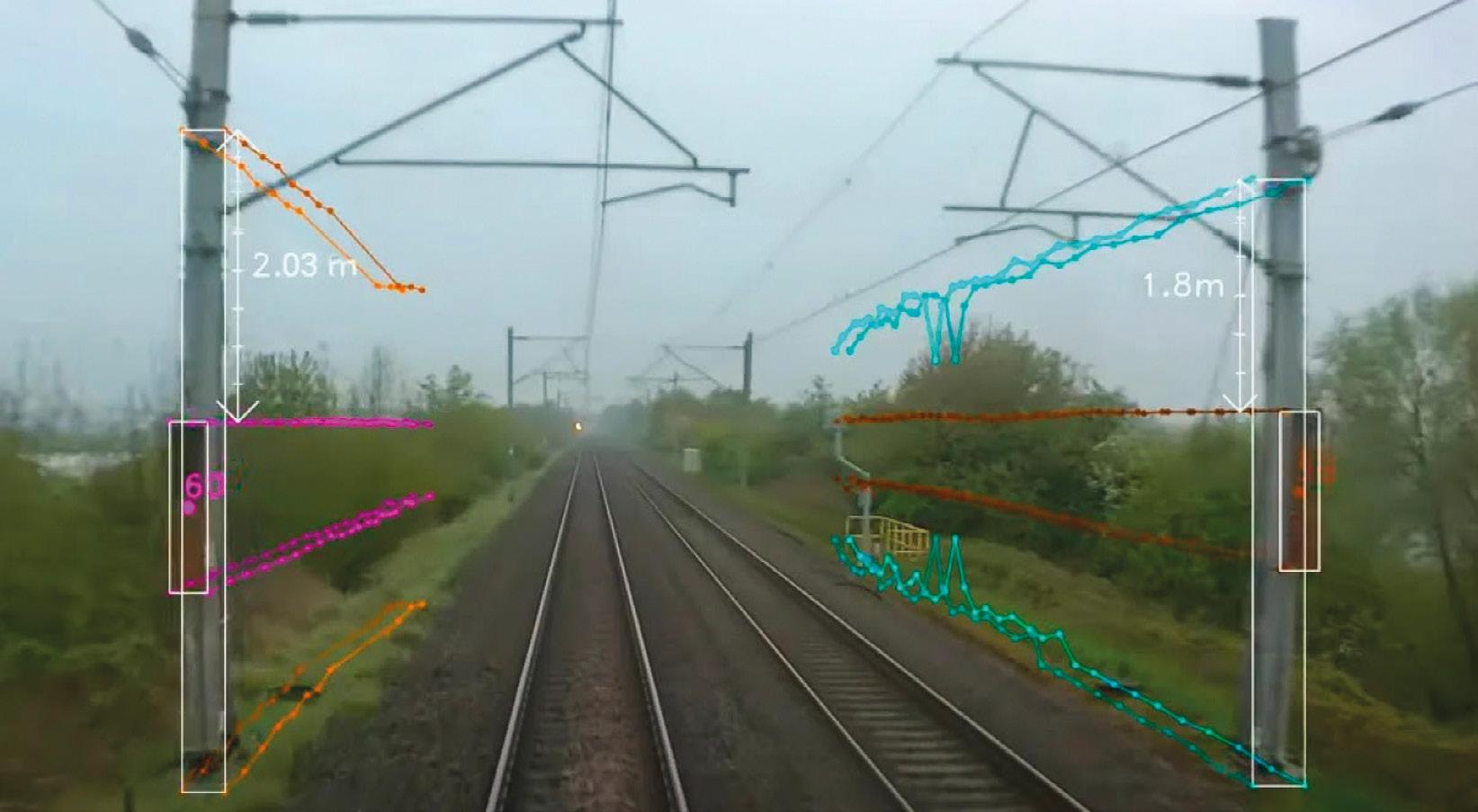
in the UK, including the use of expansion joints and prestressed rail. Expansion joints allow the rails to increase in length without buckling, and prestressed rail means the track is stretched as they are installed so that any expansion due to temperature merely reduces the prestress rather than increases the length of the rail. In the UK, rails are prestressed to 27°C, meaning that the rail has to reach that temperature before it starts to expand. However, with global warming, the maximum temperature in the UK in September was significantly over 27°C at 33°C at its peak. Therefore, expansion joints must be inspected regularly to ensure they are working properly.
Through the data capture and online platform, expansion joints, switches and crossings, and track components such as rail clips and fishplates can be checked with defects flagged instantly.
Increasing weather temperatures also affect scrap rail left next to the track, as expansion causes the rail to move, and puts it at risk of impinging on the railway safe cess. Having worked closely with Kent and Wessex routes on tackling this challenge, incidences of scrap rail can be monitored and mapped across regions so that maintenance teams are aware of their locations to collect them. AIVR’s safe-cess tool also allows users to visually assess whether objects, including scrap rail, are encroaching in the safe cess.
Remote monitoring of electrification systems
The UK employs two forms of electrification that supply traction power to trains on the move: conductor rail (aka third rail) and overhead line equipment (OLE). Third rails, installed close to and outside of one of the running rails, supply 750V direct current electricity to trains - a system used in the Southern region. Elsewhere, overhead wires supply 25kV alternating current. Both forms have their advantages, and today’s increasingly wild climate can cause problems for both.
Just as running rails expand in hot weather, so does conductive steel on the third rail, which can cause isolated sections of electrified rail to creep dangerously close to each other. The AIVR Focus CRVS system provides high-definition detailed
As extreme hot and cold weather becomes more common, managing railway assets becomes increasingly challenging
photography of the conductor rail, and detects key track components such as fishplates, electrical cables, joints, welds, and other critical points of interest, and highlights them for future maintenance. It is also able to detect the gap left between joints in the rail or the condition of fishplates affected by increasingly extreme weather conditions.
This remote infrastructure monitoring of the track is enhanced by the use of AIVR Thermal cameras which monitor the temperature of the track and detect anomalies or ‘hot spots’, which is increasingly common in extreme hot weather and can indicate faulty equipment.
The overhead electrification equipment is also prone to weather-related problems, as it too expands in high temperatures. The conductor cables are made largely from copper alloy, which as a result grows quicker than steel rails. To keep the cables taut, they are kept in a constant state of tension either by hanging weights from the ends of each cable or by using a spring system. As the cable expands with increasing temperatures, the weights drop, which can cause issues with tensions. At an extreme, the system can completely collapse and the OLE dewire, generating an array of safety risks and unforeseen maintenance costs.
AIVR’s forward-facing cameras and machine learning can tackle weather-induced railway failures by automatically identifying and measuring the

height and descent of balance weights along the trackside. This predictive monitoring of the overhead wires, pioneered with North West and Central routes, helps to prevent slackened lines in extreme weather and averts the potential associated safety risks.
Extreme weather conditions
Extensive rainfall is the weather-related event that causes the most damage to the railway. Floods and risks of landslips have become frequent issues as a result of the increasing number of storms in the UK, which put extreme pressure on our drainage systems. The ability to ascertain the volume and dynamic movement of flood water is vital to operational decision-making, including the closure of railway lines, while landslips can block lines and pose a very real threat of derailment.
In collaboration with Wales, flood monitoring cameras across the route are now integrated with AIVR, which ingests regular snapshots of areas at risk of flooding to remotely monitor water levels. The data is made securely available online where a range of users can analyse changes in flooding over time, working collaboratively with Transport for Wales for trainborne data, to give multiple viewpoints of the affected areas.
Weather information imported from the Met Office has also been made available, giving accurate context about the weather conditions to give the users a complete picture when assessing asset conditions. For example, ambient temperature can guide decision-making on the gap in an expansion rail joint or the height of an overhead electrification tensioner, whilst rainfall predictions can assist in deciding whether conditions are likely to deteriorate still further.
Continuous progress
As extreme hot and cold weather becomes more common, managing railway assets becomes increasingly challenging. One Big Circle continues to work closely alongside industry experts and suppliers to understand how intelligent video can overcome or help with these challenges, and how that data can be most effectively used and managed.
Visit www.onebigcircle.co.uk/ for more details.
Balance Weight Detection
ADVERTORIAL 35 May 2024
Joint Gap Detection
Andrea Rossi, Chief Executive Officer at DB Cargo (UK), has put to bed rumours about the company leaving the UK, revealing details of its transformation plan
DB Cargo: Here to stay in the UK
B Cargo is not being sold and we’re here to stay for the UK market.”
That is the message from Andrea Rossi, CEO of DB Cargo (UK). “We’re part of the European business and it will stay a European business and I have the backing from the group for my exciting transformation plan which is a sign of the confidence in the business and the management team in the business.”
Rumours started circulating following the sale of Deutsche Bahn’s Arriva Group to I Squared which was confirmed last year, and with DB Schenker being put up for sale in December.
“The rumours have been unhelpful for both us as a business and the industry generally, it just diverts attention, focus and efforts,” he added. “It is unsettling for customers at a time when we need to work together as an industry to get more freight on rail full stop, rather than creating uncertainty about the future of rail freight.”
Getting more freight on rail is something the UK’s largest freight company operating trains (which transports everything from cars to steels, biomass, and petroleum) is trying to do with its new
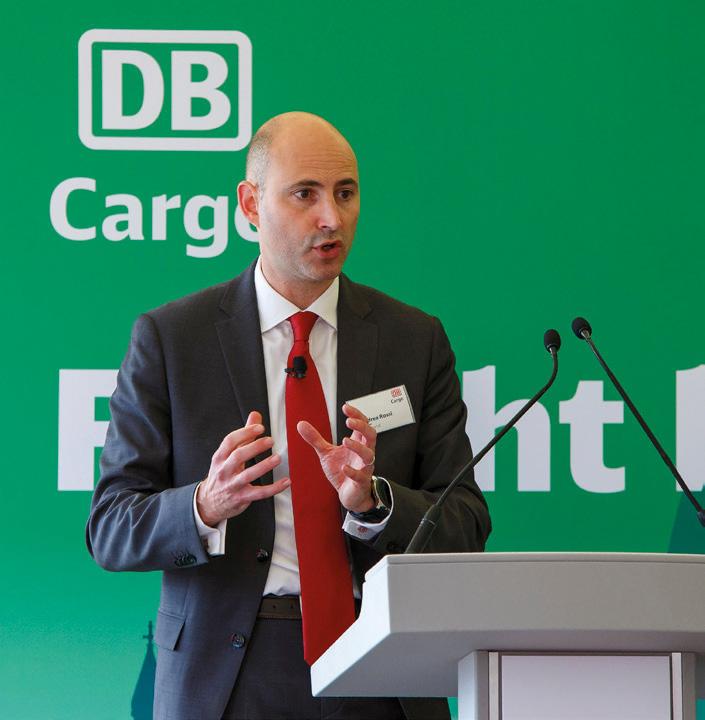
transformation plan. “In a nutshell, the plan is to make us fit for the future in essence, and sustainably profitable,” said Andrea, who joined DB Cargo (UK) from Deutsche Bahn as Chief Financial Officer more than a decade ago, taking over as CEO in 2020.
“We’ve seen a whole lot of challenges since I arrived in the UK and things haven’t really settled down, with
the demise of coal, BREXIT, COVID, and now the economic recession.
“We’ve taken the time now, while the markets are low, to pull together a transformation plan which will get us ready for the future, while also looking at legacy liabilities and legacy assets that are not necessarily fit for purpose.”
The three key pillars
The transformation plan centres around three key pillars, with the first around loss-making contracts, particularly the longer-term ones which have been locked in for many years. Andrea has said the organisation comes to these conversations in a strong position with happy customers and high-quality performance.
“Although there were some issues just after COVID around reliability, we are now constantly delivering very high levels of reliability and deliveries on time which puts us in a stronger position in having the more difficult conversations around the broader terms and conditions and pricing,” he said.
The second pillar is to optimise the locomotive and wagon fleet, getting rid of surplus assets which have

FREIGHT 36 May 2024
“D
been with the company for a long time, a lot of which aren’t operational. The DB Cargo (UK) locomotive strategy centres on the Class 66s for domestic traffic and the Class 92s for international traffic for the Channel Tunnel.
“We’ve still got a few Class 67s contracted out for certain customers, but that is about it,” he said. “So we’re phasing out the Class 90s, Class 60s, and in terms of the wagons we’re taking out all of the wagons that are surplus, and off-hiring ones that we don’t need.”
This isn’t about just cutting assets to save money, but the organisation is also investing in its locomotives and wagons. An example is a pilot project on the Class 92s which will see them almost rebuilt from scratch to improve reliability. Another instance is the introduction of the Class 66 High Tractive Effort (HTE), the first of which was on the network being tested and commissioned when Andrea spoke to Rail Director.
“A Class 66 HTE will not have the same tractive effort as the Class 60, but having discussed with customers they are happy to trade a slightly lower payload for the increased reliability,” he said. “The Class 66s are a less expensive locomotive to maintain and will provide us with increased maintenance efficiency through a rationalised loco fleet.
“We are also converting some of our wagons to future proof the business as well as be ready for potential new transports with customers. We’ve got great expertise in maintenance with three big workshops in Crewe, Toton, and Stoke and in-house expertise in designing, engineering, and fitting, which gives us a really great starting position for our customers to engineer in-house solutions which are much more cost-effective and quicker for our customers.”
The third pillar is around the company’s IT and technological platform, with digitalising the company a particular passion for Andrea and one that he thinks will bring the business and the industry forward.
“We need to digitalise our assets, we need to digitalise our processes, and we need to be able to become much more efficient. We can do that through an end-to-end operating system, where we can follow our products from customer enquiry right through to invoicing. We can then make better use of our data and artificial intelligence to become much more efficient,” he said.
“That is my vision in terms of digitalisation. It is going to take us a while to get there but this whole transformation package and plan has been supported by the group which fills me with a lot of confidence in regards to the future and cements the message that DB Cargo (UK) is here to stay.”
On track for a bright future
Andrea takes a lot of confidence in the Department for Transport’s rail freight growth target of 75 per cent in net freight tonne kilometres by 2050, although he stresses the target should be seen as a floor rather than a ceiling. Helping to spread the message of the industry, DB Cargo (UK) also launched a ‘Freight Belongs on Rail’ campaign, and has spent several years lobbying politicians and civil servants about the significant economic and environmental benefits
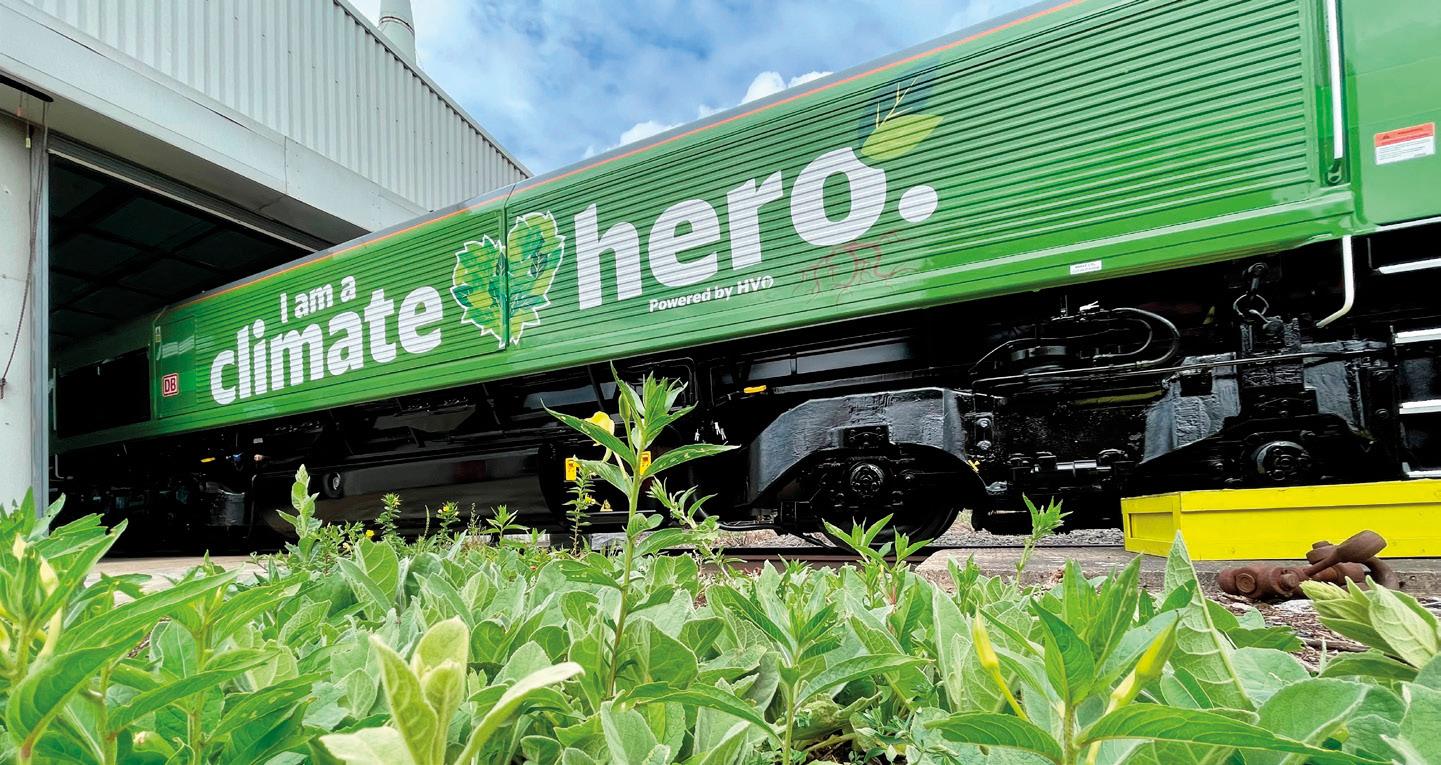
of rail freight over road haulage.
“We’ve got a good platform and while I do see a lot of backing and understanding from industry and politicians, there is still a lot of headwind in terms of the real competitor, which is not the other freight operating companies, but is actually road,” he said. “While we’ve got a rail freight growth target, the difference between road costs and rail costs is widening further and further and this needs to be addressed urgently.
“We are being confronted with ever-increasing prices including the inflationary pressures, track access costs going up even more than the Consumer Prices Index, and port charges increasing substantially with lifting and handling charges applying to freight but not to road hauliers.”
Those making changes are reaping the benefits. Last month DP World Southampton announced that the share of freight units being moved by rail instead of road had increased from September to February from 21 per cent to 35 per cent. Its customers and supply chain partners have saved approximately 4,500 additional tonnes of carbon dioxide by choosing rail over road.
Customers are currently being offered an £80 financial incentive per shipping container if they move import-laden containers via rail to a railhead within 140 miles of the logistics hub.
“There is definitely a bright future for the industry and we are a key part of transport decarbonisation, but we do need to address these cost issues,” he said. “We are looking to push customers to use more hydrotreated vegetable oil (HVO) and we have some exciting developments on that front.
“As a group, DB Cargo is pushing HVO in all its diesel locomotives across Europe. Obviously, we are still in the infancy of it in terms of utilisation given its high cost. I don’t think HVO is the only answer to lowcarbon traction, it is a bridging fuel until we have a firm commitment to electrification of key routes and corridors. The more we utilise it as an industry, the more the prices will come down and hopefully, that will incentivise more customers wanting to use it on their flows.”
Andrea is excited about the journey ahead. As well as the transformation plan and rail freight growth target, DB Cargo is also at the heart of the East Coast Digital Programme (ECDP) to transform the East
We have an even bigger role to play in the future than we do now, and we are looking ahead and forward, focusing on investment in the right things which shows we are definitely here to stay
Coast Main Line by replacing traditional lineside signals with the European Train Control System (ETCS).
“I am seeing how the company is evolving to be able to be fit for the future and I’m incredibly proud of how we are at the forefront of contributing to digitalise the network with the ECDP on the East Coast Main Line,” he said. “We are providing the first in class 66 and 67 locomotives to be retrofitted with ETCS and that is something I am personally very much involved in and wanting to deliver. This is probably the biggest transformation of the rail industry since the invention of the steam engine, so being part of this is a really proud moment for me.
“We’ve got a great pool of talent in the business, a lot of experience, and a lot of people passionate about what they do. We have an even bigger role to play in the future than we do now, and we are looking ahead and forward, focusing on investment in the right things which shows we are definitely here to stay!”
Visit www.uk.dbcargo.com/ for more details.
FREIGHT 37 May 2024
Alicia Andrews, Commercial Director of Southeastern, discusses delivering for the communities its services run in
Meeting the changing needs of passengers
“We can be a really important force for good and play an important role for people and communities and I’m excited for what the future holds. We have to avoid doom and gloom as an industry and think about what we can do, not what we can’t.”
That’s the message from Alicia Andrews, Commercial Director of train operator Southeastern, who is very much seeing the challenges facing the railways in a positive light as opportunities.
Speaking to Rail Director, she is enthused by the success of Southeastern’s work with The Prince’s Trust. As part of this work, the operator has taken on a cohort of 20 people not in education or training, some suffering from very low self-esteem and struggling with a lack of jobs skills, on a three-week programme.
“Between 85 and 95 per cent of them have got permanent jobs, isn’t that brilliant?” she said. “The railway has got a recruitment challenge, people are out there and at Southeastern, we’ve just become part of The Purpose Coalition working to enable greater social mobility and social inclusion.
“It’s all part of that journey in thinking about how the railway is a force for good, and how it is enormously important to ensure that people in the communities we serve see the railways as not just a means of travel, but supporting economic
investment, unlocking growth and prosperity, and providing access to employment, education and training opportunities for millions of people.”
This commitment has been cemented by the

recent release of a report by Southeastern and The Purpose Coalition which highlights the role that the rail industry can play in boosting social mobility, believed to be the first of its kind released by a UK train operator.
The Social Mobility Action Plan charts Southeastern’s activities to boost social mobility against the framework of the Purpose Goals which map out 14 barriers to opportunity, which includes various life stages alongside wider issues such as good health and wellbeing alongside sustainable communities.
“Despite the South East having one of the lowest proportions of the country’s social mobility ‘cold spots’ at just eight per cent, it is a region that is also home to areas of severe deprivation,” added Alicia. “As a company, Southeastern is deeply committed to the wellbeing of its employees, customers and the communities it serves, and the report showcases the range of work it is already undertaking to support them.”
It is little over four years since Alicia joined Southeastern, having previously worked in a number of senior commercial roles, most recently as Transformation Director at Arriva Rail London (ARL).
Prior to her appointment at ARL, she worked as Commercial Director at Condor Ferries, where she was accountable for passenger ticket and on-board revenue. She was also instrumental in the introduction of a new type of ‘fast ferry’ unique to northern Europe - refitted and brought into service in just six months from purchase to the first passenger service.
As Commercial
TRAIN OPERATORS 38 May 2024
Building strong foundations
While the demand is always there for new staff,
Director at Southeastern Alicia is responsible from the perspective of the customer and revenue, covering all the customer functions from a strategy perspective, including insight and experience, which includes accessibility and accessible customer experience, as well as retail and revenue and digital.
With a keen eye on the future, Kieran recognised there was a gap in SEP Geotech’s offering:
“What SEP Geotech does ties together perfectly with piling. The purpose of our investigation forms the basis of the pile design, and our sister company, SEP Rail Design, designs the piles; now we will install them.”
Alicia, who began her career at the Financial Times (FT), said: “I am really excited about being Commercial Director at such a significant time for the industry. Transformational change has been a theme in my career even before I joined rail. I got into the digital sphere in 1994 from being in print media at the FT, where I was part of the team that built the first FT.com. I’m delighted to be able to play a part as Commercial Director at such a time of change.”
Piling, in engineering terms, involves the installation of foundations driven or bored into the ground to transfer loads to deeper, more stable soil. These structural elements are essential when the natural bearing capacity of the soil is insufficient for supporting heavy construction loads.
Kieran’s extensive engineering experience, developed since his teenage years, has been centred around piling. He explained:
One change at Southeastern that has proved a success has been Flexi Season tickets, where Southeastern has tested a consistent customer proposition meaning that it always offers value for money to hybrid commuters.
“This is a critical moment for the piling and foundations industry. Exciting innovations within pile design and installations are allowing for improved project turnaround times and more technically demanding programmes.
“By leveraging our team’s experience, alongside utilising the wider SEP Rail Group’s capabilities, SEP Geotech is in a perfect position to deliver projects from feasibility to design through to completion.”
“It has been so transformative since being launched just over a year ago,” she said. “We’ve come up with a proposition in which if you commute three times a week on the Southeastern network it will always be the best value season ticket, despite the uneven historic fare multipliers.
Prioritising growth and expertise

designed for safe work on embankments, slopes, and even over water. This innovation eliminates the need for traditional rope access, streamlining our processes even further.”
“If you are in the M25 belt it was always best value three times a week, if you got a bit further out at the likes of Maidstone, Medway and Tonbridge it was not so much, and if you got all the way down to the south and east coast of our patch it wasn’t.
Investing in the professional development of the current team is also not just a priority; it’s a key part of SEP Geotech’s vision for the future.
“What we’ve done in the trial is absolutely fascinating because for customers furthest away the Flexi Season cost has gone down by as much as 25-30 per cent and yet we’ve still made more money than we would have done had we just left the prices as they were according to independent economic analysis and comparison with similar flows on other train operating companies. This has come
As SEP Geotech continues to evolve and expand its offerings, one thing is clear: Kieran Moran’s experience, dedication, and vision will remain at the forefront, driving the company to even greater heights in the geotechnical engineering industry.
out of innovation and a small-scale trial in which we assembled a coalition of people, including Great British Railways Transition Team and Department for Transport (DfT), to test it and beyond that I hope other train operators will be able to benefit from what has been achieved. The next stage is to discuss those learnings with other train operators.” It is one of several major changes implemented
RAILWAY LIFTING JACKS RAISING STANDARDS
With 40 years’ experience in heavy duty lifting solutions, Totalkare combines world class products with industry leading support to facilitate effective maintenance and repair, keeping you on track for success.



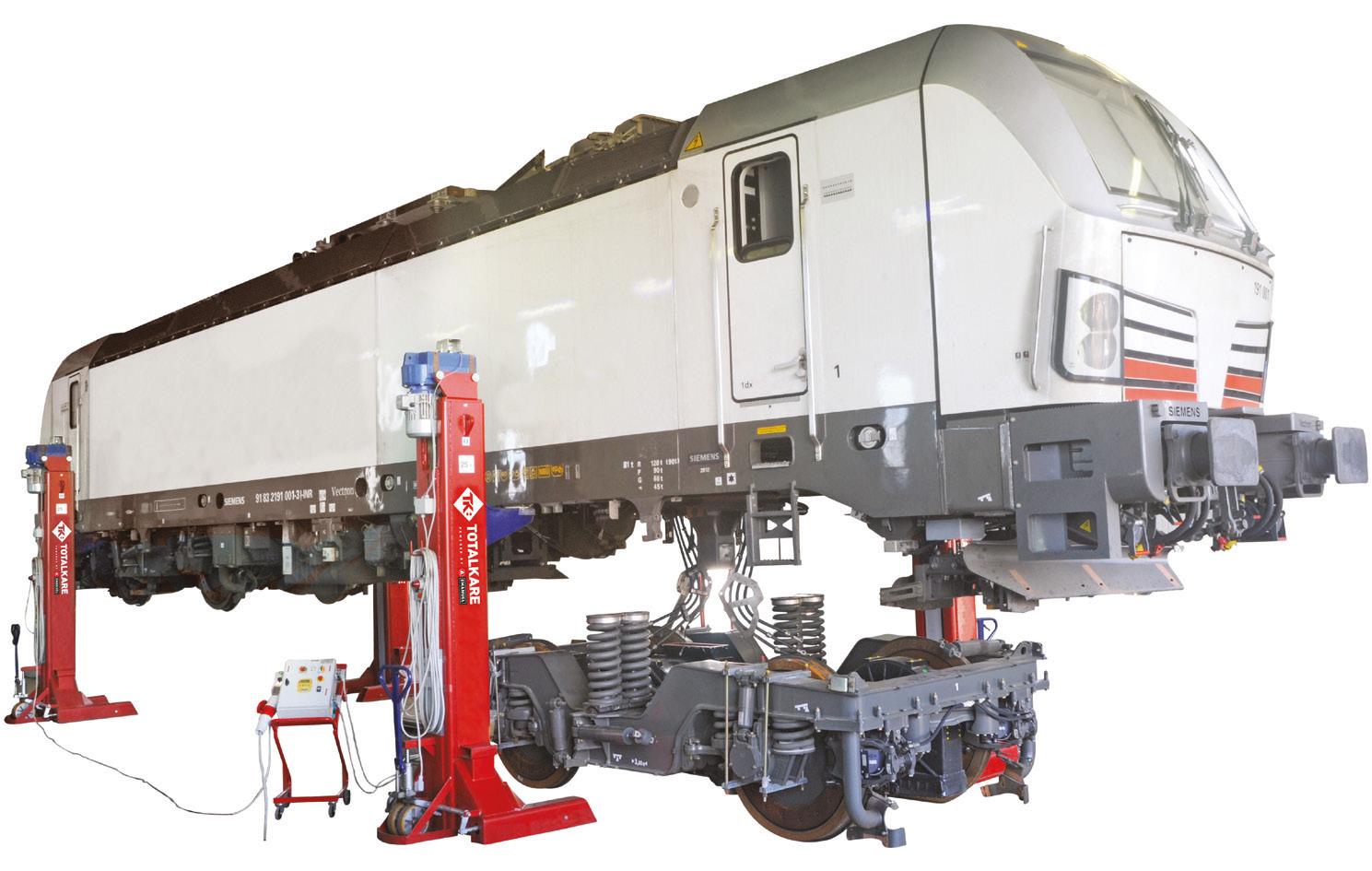

CALL 0121 585 2724 VISIT WWW.TOTALKARE.CO.UK
This is a ADVERTORIAL 20 November 2023 Untitled-9 4 16/01/2024 11:56 TRAIN OPERATORS 39 May 2024

As a company, Southeastern is deeply committed to the wellbeing of its employees, customers and the communities it serves, and the report showcases the range of work it is already undertaking to support them
by the rail operator in recent years. Around two and a half years ago the Government took control of Southeastern services as part of the DfT’s operator of last resort (DOHL – Department for Transport Operator of Last Resort Holdings Limited).
Speaking with Rail Director earlier on this year, Managing Director Steve White said they had summarised over 100 things that the team had done in the first 24 months, including transformational items such as the removal of first class to create four million extra seats a year, station improvements, and flexible ticketing and new technology to ensure journeys are as comfortable and convenient as possible.
Alicia said: “Flexi Season tickets is a really good example of what we’ve done. We’ve also built a step free journey planner in our app, which we believe is a first for the UK railway.
“We’ve also looked at the twin challenges of how you digitise ticketing, digitalise retail, and support customers with accessibility needs – not just people in wheelchairs, but people with buggies, luggage, and bikes, and once you have done that, how does it support the broader recovery.
“Overall, it is about having an eye to what policy priorities are, the north star in terms of what you need to do for the customer, and then joining all of those up into a broader picture.”
A big challenge facing all operators is commercial viability following the decimation of passenger figures during the COVID pandemic. Even now, according to statistics from the Rail Delivery Group, taxpayers are contributing around an extra £54 million a week to keep rail services running up and down the country.
However, in more positive news, passenger numbers are increasing, and recent research by consultancy Steer for the Railway Industry Association has found that rail passenger numbers
could double by 2050.
Speaking specifically about what Southeastern is doing, Alicia said: “We are renewing our focus on some of our ancillary revenue schemes, and we are working very collaboratively with the rest of DOHL group, which is quite interesting as we are the only Southern train operator in the group."
Alicia says the organisation is very mindful that customers are very cost conscious at the moment and has welcomed being involved with the likes of the recent Great British Rail Sale, offering discounted tickets earlier this year.
“We were really pleased that we came out fourth ahead of some of the long-distance train operators by volume and value in the recent Great British Rail Sale,” she said. “I think that is partly a testament to the way we have invested, particularly in our digital sales channels, and also in the way we have invested in the way that we talk to customers.
“We have an open relationship with customers and an approach to revenue which might seem counterintuitive, which is that we will tell customers the best value fare wherever we can.
“One of our biggest campaigns, which finished recently, was ‘Beat the Price Rise Campaign’. We went out to people to buy your season ticket before the price increased – logically that means everyone baking in the lower price, but hopefully we are building in our customers a view that says we are on your side, we understand that times are tough, and we are going to be a trusted retailer.
“We are taking the same approach now with the London Mayor’s off-peak Friday trial. We’ve worked with Transport for London and worked with customers, to build that trust and to attract them back onto the railway. Overall, now is a time of great change for the railways and I’m excited about the journey ahead for Southeastern.”
TRAIN OPERATORS 40 May 2024
4 Designed in collaboration with Rail people, for Rail people and critical Rail operations: #fit-for-purpose
4 Carbon measured, custom manufacture at our state-of-the-art UK facility with UK sourced materials wherever possible, via proactively managed supply chains, resulting in a lower carbon footprint
4 Multi-use – The same Powercube base REB design can be deployed to support many applications. SER’s, ESR’s,TMR’s, DataCentres, PoPs

4 Powercubes extended REB life-span, supports longevity of operation and potential for multiple re-deployment Battling
4 Scalability - a containerised solution supports the requirements without overkill and can be easily scaled up (or down) as required
4 Integration of Smart Cooling and Heat Recovery and Reuse Systems to support greater operational efficiencies
4 Integration of Bio Solar, Green / Blue Roof systems - assist cooling, provides power, reduces and controls rainwater runoff and promotes biodiversity
4 Uniformity in the base Powercube REB design, enables greater manufacturing and post deployment maintenance efficiency
ALL
CREATED EQUAL...
NOT
MODULAR REBs ARE
Powercube Infrastructure Solutions can help you achieve sustainability targets T: 0845 612 1155 . E: contact@mavin.global . www.mavin.global *Metric Data obtained/calculated from TfL, Gov.uk and Accelar with thanks. Related to recent Powercube/TfL project. 8 13 126 5719 kg CO2 eq. 2 550,000 8936 kg CO2 eq. 5 1,400,000 90,073 kg CO2 eq. 36 1,400,000 Carbon Emissions (kg CO2 eq.) Construction Vehicle Site Visits On-site Build Time (Weeks) SER Solution Cost (£) POWERCUBE SER SOLUTION OTHER MODULAR SOLUTION TRADITIONAL BRICKS AND MORTAR SOLUTION VEHICLE SITE VISITS COMPARISON 61% 88% 51% RECENT POWERCUBE RAIL REB PROJECTS HAVE DELIVERED:
the Carbon Monster? Mavin



Richard Broughton, Head of Pump Services at GAP Group, explains why the rail industry should plan ahead for regular fl
ooding events
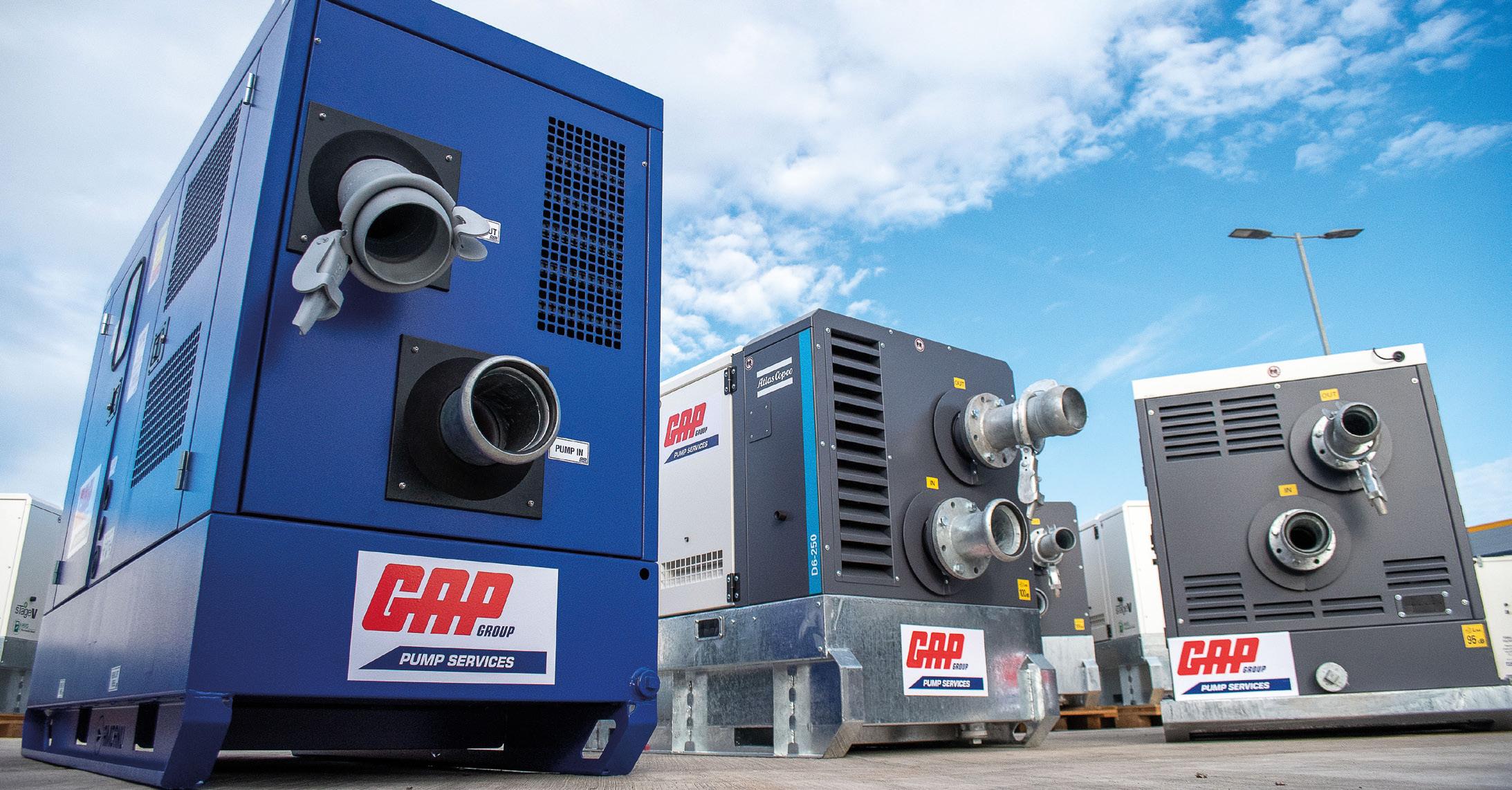
Planning for a rainy day
The effects of climate change are being felt across Britain’s rail network.
In its recently released five-year improvement plan, Network Rail vowed to deliver a more weather-resilient railway – adding that, over the last year, extreme weather events had “taken a toll” on infrastructure.
It’s something Richard Broughton, Head of Pump Services at GAP Group, feels strongly about. Speaking to Rail Director, he explained that flooding is becoming a more regular occurrence in some regions - and stressed that the industry must plan ahead to prevent disruption.
“Climate change is not going away. Flooding is not going away,” Richard warned. “So the question is, how do you prevent downtime from flooding incidents? That comes through contingency planning for the ‘what ifs’.”
Helping the industry respond to flooding incidents
Richard added that GAP Group – an independent
equipment hire company with 10 complementary divisions – is well-placed to support rail organisations as they prepare for these ‘what ifs’.
Richard joined the group to head up its Pump Services division, which supplies electric, diesel, and hydraulic pumps for fluid movement. Today, it boasts the largest and most modern fleet of Stage V pumps on the market.
And his team specialises not just in pumping solutions, but power generation and environmental product services, working 24/7 to ensure that flood water is discharged safely, efficiently, and compliantly.
“We provide pumping and associated product services to deal with flooding incidents,” he explained. “That might include power generation for our electric submersibles, or chemical treatment systems if you’re dealing with oily or hydrocarbon water.”
Discharging flood water safely
Indeed, removing water after a flooding incident is only half the battle. Richard explained that
organisations must consider where they discharge this water, ensuring that they comply with the latest regulations – and, if necessary, seek ‘discharge consent’ from the Environment Agency.
“We’ve now had a legislation tighten-up on discharge consent,” he added. “After a flooding incident, the first question is often ‘where can I get pumps?’ In fact, it should be ‘where are we going to discharge the water to?’
“We might need to set up storage tanks at a nearby roadside and pump the water to them, before getting tankers to take it away. There will be different solutions, depending on the problem.”
And, with an extensive product portfolio that includes Tanker Services, GAP Group is well-placed to develop and deliver these end-to-end solutions. Its environmental specialists work closely with clients, helping them to establish how water should be treated and disposed of.
Richard added: “We have a lab in Swadlincote, and can test water to see if it has hydrocarbons in it –because, in that case, a different treatment process is
ADVERTORIAL 42 May 2024
Images: GAP Group
required, either on site or at a hazardous waste centre. It’s an end-to-end process, which we look after.”
If water is discharged incorrectly, the consequences can be devastating – both for the environment, and the organisations involved.
“If you fail to control settlement on site and it goes into a river, you could face a fine of £5,000,000,” he explained. “And then there’s the commercial and reputational damage.”
Round-the-clock support
Luckily, GAP Group’s 100-strong pump division is always on hand to help, providing emergency flood response services - most recently, as part of a major contract in the North West of England.
“It’s going to involve the supply of pumps and installation services on an emergency basis, covering the client for flooding incidents on railway lines,” Richard said. “Flooding can lead to line closures, and as part of this contract, we must respond to callouts within four hours.
“We have shift working, keep minimum stock levels, and have one of the largest fleets of equipment in the UK. Our technical and engineering teams are also on call. But the challenge with response tends to be transport, which is why we operate a 24-hour transport service.”
The importance of planning
And, with delays often leading to disruption for passengers, a timely response is key. Richard believes that rail can learn from other sectors, planning ahead for regular flooding events.
“When it comes to reducing downtime due to flooding, contingency planning is crucial,” he commented. “A lot of people aren’t aware of the products and services available, and lose time trying to figure out how to deal with the situation.
“Instead, they should be thinking, ‘I get flooded every two years at this site, so I’ll get a contingency plan in place.’ That would probably reduce downtime by three to six hours.”
GAP Group’s team can create these contingency plans for clients, conducting site surveys to ensure that the right equipment is deployed.
“The biggest things that go wrong in an emergency are issues being missed and responsibilities not being clear. We draw out a clear path for the
client, including what we need to order, and what we expect of one another,” Richard added. “We work this way quite a lot in the utility sector; if there’s an event, we have a contingency plan, often including the route to site and what equipment is required.”
This measured approach ensures that, when a flooding incident does occur, downtime is kept to a minimum. And, if clients require additional equipment – including welfare units and plant – GAP Group’s other divisions can assist.
Eco-friendly power solutions
The firm also provides power equipment, acting as the sole point of contact for clients during a flooding emergency. Richard explained that this simplifies an often-fraught process.
And, as the rail industry works towards its own ambitious net zero targets, GAP Group is offering more eco-friendly power alternatives.
“Some of our market-leading products are designed to counteract climate change,” he said. “We run off diesel, but our equipment can also run on HVO fuel, which produces 90 per cent less carbon emissions.
“Our products have been designed specifically for drainage, which means we can reduce the engine size by 50 per cent. In turn, this can generate anything up to 1,200-litres of fuel reduction a week. Some of our customers are saving around £1,600 a week.”
In addition, GAP Group recently launched the UK’s first battery-powered suction pump, which enables clients to reduce ambient noise on site.
“Anything that ensures less disruption to lineside neighbours is going to benefit the industry,” Richard commented.
And supporting the rail industry is a priority for GAP Group’s Head of Pump Services. The firm recently opened three new locations as part of an ambitious growth plan – which, Richard explained, will enable it to respond more quickly to emergency callouts.
“The plan is to be no more than two hours away from any location in the UK, so we’re able to provide emergency services in a short space of time,” he concluded. “That’s our ambition.”
Visit www.gap-group.co.uk/ for more information.
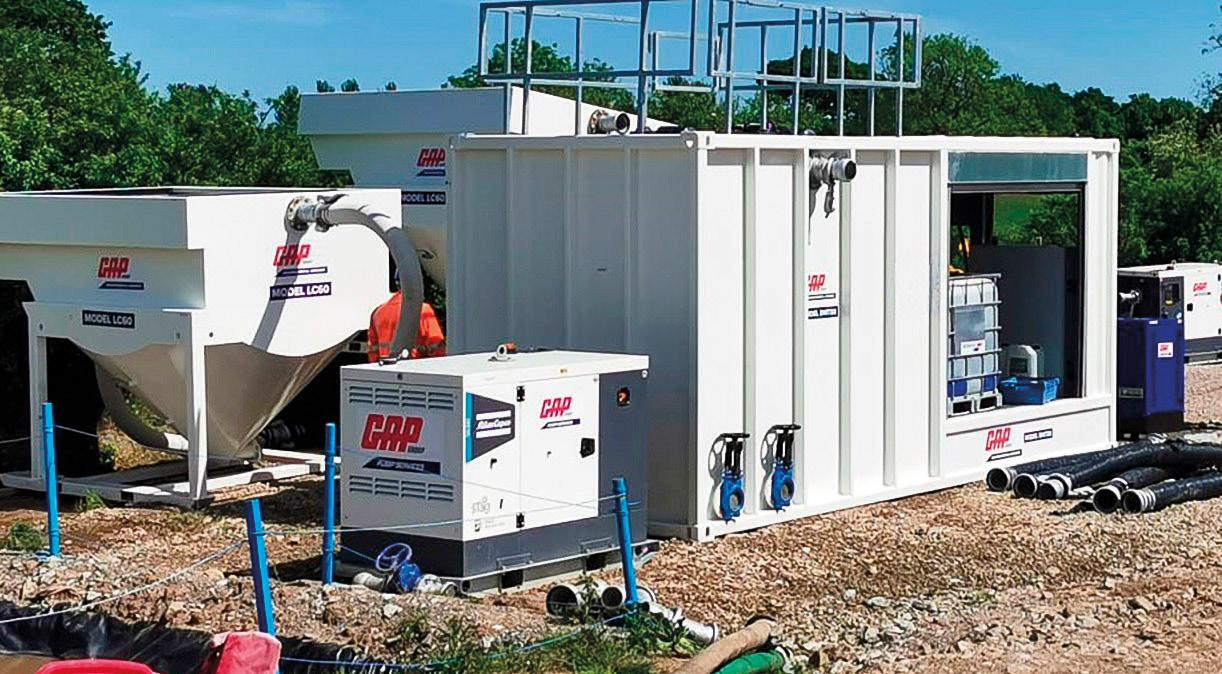

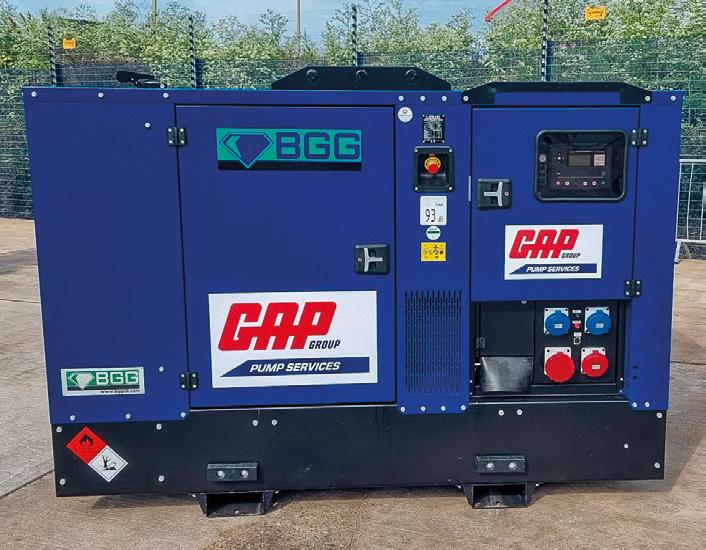
The question is, how do you prevent downtime from flooding incidents? That comes through contingency planning for the ‘what ifs’
ADVERTORIAL 43 May 2024
The Rail Academy has become an independent ORR-registered Train Driver Training and Examination Centre. Managing Director Cath Bellamy explains how it is another string in its bow of supporting the industry with safety critical, operating roles
A brand new choice in how to train drivers
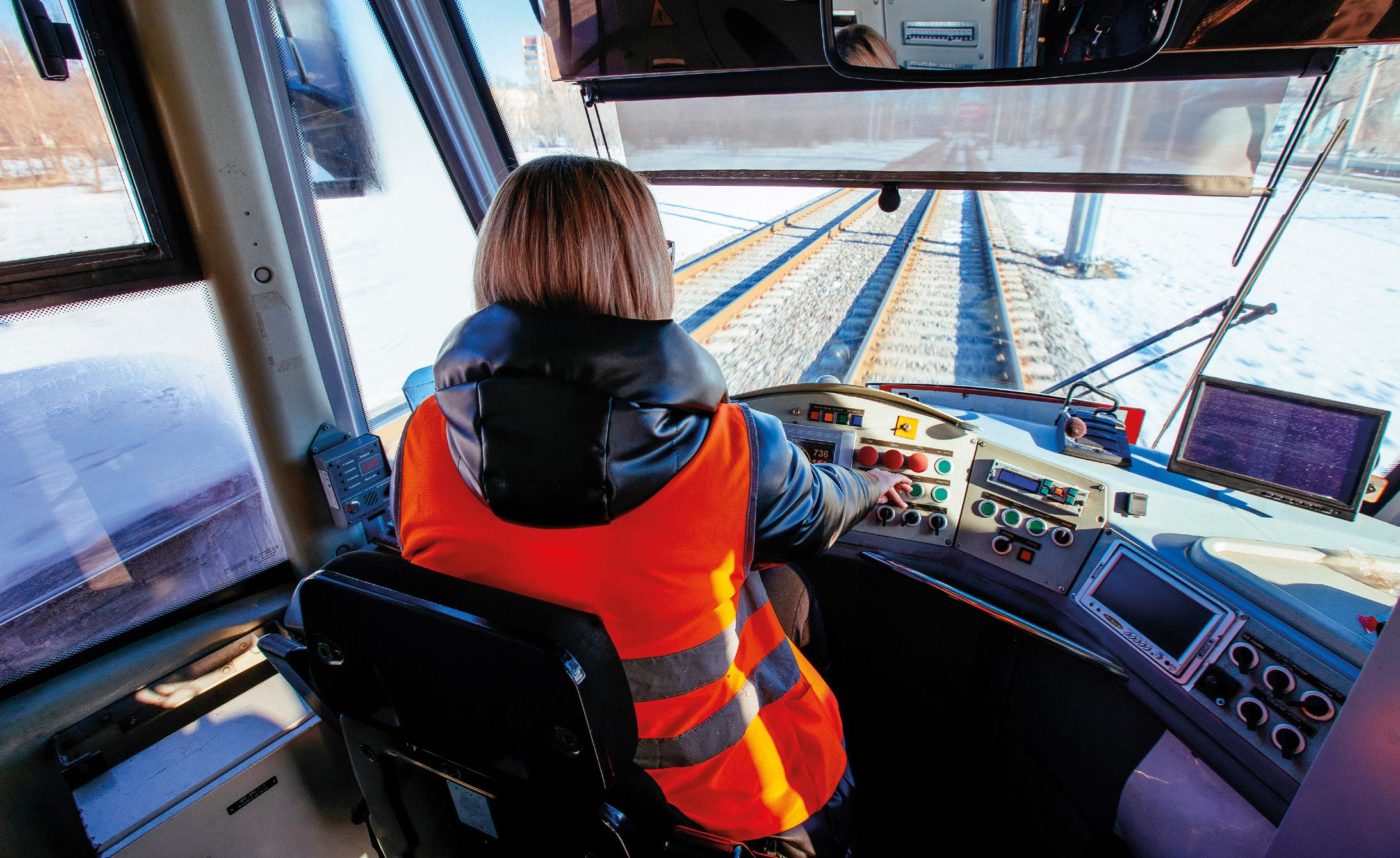
The Rail Academy is on a journey to revolutionise safety critical operator training in the railway industry. It is a vision being led by the organisation’s Managing Director Cath Bellamy.
“Train driving and operating roles in the industry and the environment in which they are being done has changed across the country, but the approach to training for frontline operators has not evolved consistently and I don’t think we’ve really challenged ourselves as to whether or not the way we’re doing it now is still the right way,” said Cath.
“Safety critical jobs in other industries are well ahead of the railways in the way technology such as online availability, digital tools, simulation, and AI has been adopted to train people. We shouldn’t just modernise for the sake of it, but we need to have that honest debate. If we don’t, we are not continually improving and we are letting down the very people
doing these, sometimes potentially dangerous, jobs.
“For example, if a safety critical role in one part of the country is trained with cutting-edge technology or with an approach that is best in class, it must surely be the case that the same role in another part of the country needs the same approach. Otherwise, how are we moving forward together as an industry towards a gold, safe standard? The Rail Academy wants to help bridge the gap and bring fantastic training and development support and consistent professional assessment to all frontline operators.”
The organisation was established in 2020, as part of SLC Operations Ltd, with an aspiration to be the leading, independent provider of rail operations End Point Assessments and NonApprenticeship Training in the UK, specialising in supporting safety critical, operating roles including train drivers. Since 2022, it has operated as a separate limited company.
The Rail Academy means business. It is one of four companies approved by OFQUAL to carry out specialist Train Driver Apprentice End Point Assessments and last month it was successful in its application to become an ORR-registered Train Driver Training and Examination Centre.
It is now also able to:
Train and assess train drivers in all areas of general professional knowledge, rolling stock and routes. Provide this training and independent assessment to train drivers employed by themselves and others.
Support new driver’s licence applications.
Prepare and deliver train driver training materials, compliant with the required regulations.
Register train driver assessors, competent to train and assess train drivers.
ADVERTORIAL 44 May 2024
Image:
Shutterstock
Cath said: “I am absolutely delighted to receive this recognition. Training train drivers is necessarily tightly regulated, and it must be done properly by people who are experienced, qualified, and capable. We have a fantastic team at The Rail Academy, and we have now demonstrated to the industry regulator we can be trusted with this important task.
“As one of the UK’s only independent ORRapproved centres on the register, we offer the rail industry a brand new choice in how it trains its drivers. So many operators have restricted training and assessment resources and are struggling to cope with the demand. We can now help them deal with that challenge and look forward to getting started.”
Cath has also revealed that the organisation is in talks with City & Guilds about being an accredited centre. That would enable it to introduce nationally accredited qualifications into the industry, helping trainers and assessors already working in the industry to accredit the work they are already doing and offering transferable qualifications to grades of staff who currently don’t have them.
And characteristically, Cath is designing services focused on customers and quality.
“We have a great team of assessors and have designed our EPA service to make it as easy and cost effective for employers as possible, with assessments carried out remotely Monday to Friday between 7am and 5pm,” said Cath. “We are the only provider to offer that convenience. And in a turbulent resourcing environment, we also offer the most flexible cancellation or appointment change terms, again to help customers. The service has started with just train drivers, but we intend to expand the number of apprenticeships that currently exist in the rail industry to support.
“What we’ve found is many of the apprenticeships that already exist in the industry either don’t have organisations in place which are suitably qualified to carry out End Point Assessments or they are carried out by organisations which don’t have their roots in the industry which can lead to the industry suffering.
“So we’re looking to support and fill that gap and have already had requests to look at other apprenticeships.”
The Rail Academy also hires train driver assessors and trainers, vital at present with the industry struggling to keep up with the demand that is required to fill its current vacancy gap for train drivers and other safety critical roles through current recruitment practices.
“Employers and people who are trying to recruit, select and train staff are completely overwhelmed by the challenge,” said Cath. “We can help in every area. Last month for example we put a team of three trainers into a major passenger operator to deliver 12 weeks of train driver training. And we can do that for other operators using their materials or ours, at our facilities or theirs – whatever works best for them.
“What we’re looking to do in the future is to widen that and to start looking at how we can help with the recruitment cycles and how we can make it quicker, convenient and easier for employers to access really good quality appropriate resources in a different way than offered at the moment, and a multiple range of other things.”
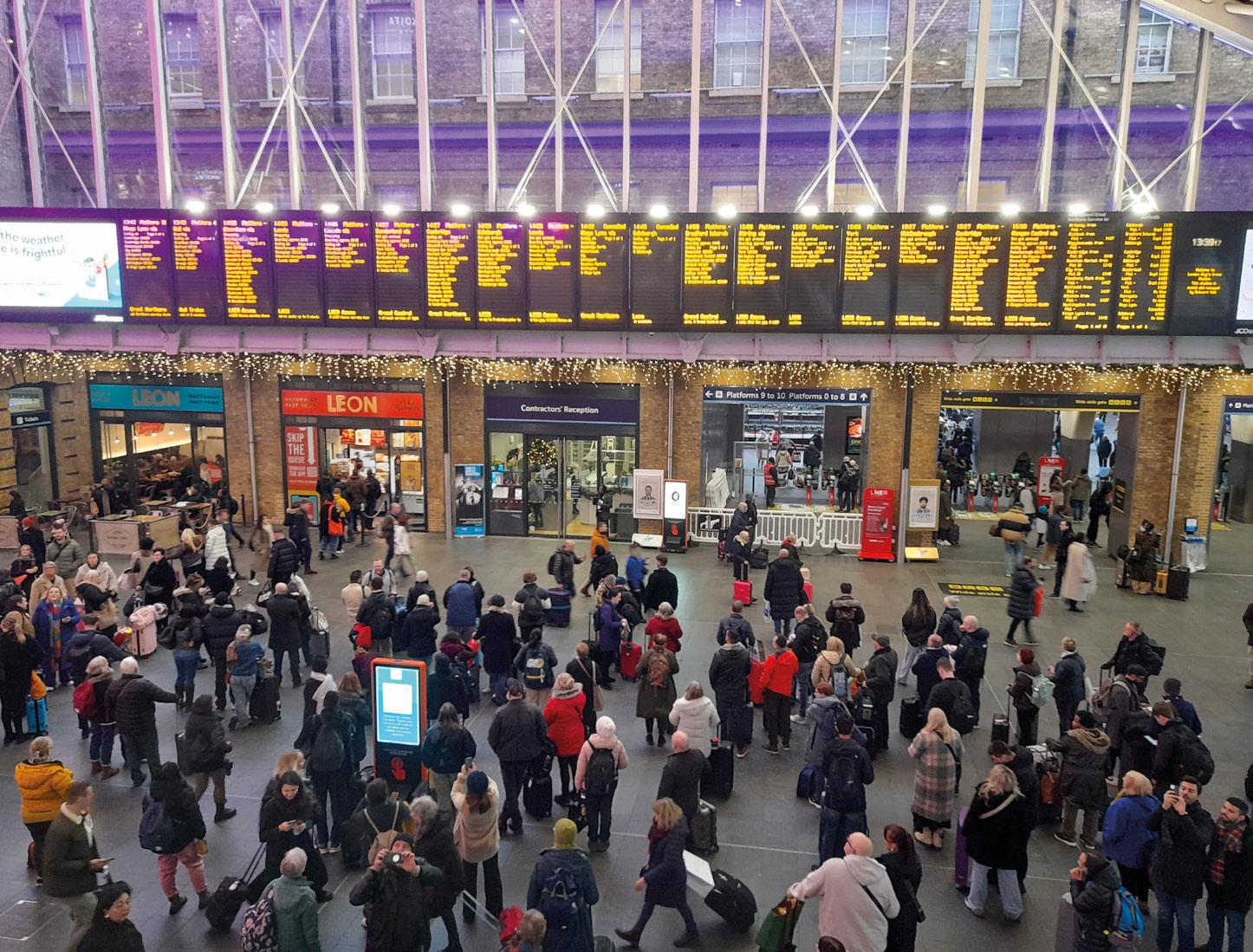
Overall, the future looks very bright for The Rail Academy, a journey being driven by Cath’s passion for an industry she’s been involved in for 32 years. As a former Managing Director of Chiltern Railways, Hull Trains and SLC Operations, as well as leading various large commercial projects for the Department for Transport, Cath understands the challenges facing the UK rail industry better than most and is driven to put the sector on the right track to overcome them.
“I come at the industry as a friend, and I believe there is a huge opportunity to really revolutionise the way that we recruit, select and train our safety critical staff which ultimately will give a better service to customers and users of the railway; provide staff who are safer and more competent; and save time and money for overstretched operators.
“This whole area is one of those balls that gets kicked into the long grass over and over and over again because it isn’t easy to do and there are all sorts of politics involved, but the industry is at a crunch point.
“We’re putting our head above the parapet, and we want to be part of the solution. This is how we’re starting, and this is how we plan to go on. But talk to us and invite us to the party and we’ll see what we can do to help.”
Visit www.therailacademy.com/ for more details.

We’re putting our head above the parapet, and we want to be part of the solution. This is how we’re starting, and this is how we plan to go on
Image: Shutterstock ADVERTORIAL 45 May 2024
Dardan Llabjani discusses how ancillary civils and E&P specialist
PACE Infrastructure Solutions (PACE) is doing things differently for the good of the railway

Changing how things are done in the railways
PACE Infrastructure Solutions (PACE) has two business streams, design and build project delivery in the ancillary civils & E&P markets and the supply of safety critical skilled labour. It prides itself on the quality of the work it undertakes for its clients and its innovative approach and commitment to investing in its people, as it works to build the next generation of workers for the railway. It is a way of thinking that has led to PACE building a strong reputation in a short period of time.
“We pride ourselves on being an independent and dedicated service-led company that can focus on what matters to our clients: safe delivery of the project, on time, to budget and to the highest quality standard,” said Dardan Llabjani, Managing Director. “Our team thrives on being challenged and our can-do attitude, along with our flexible collaborative approach has already earned PACE a reputation that is industry leading.”
Established in 2019, PACE is an SME that undertakes projects as small as £20,000 and as large as £5 million and has a proven track record of delivering repeat work with Tier 1 and Tier 2 clients.
“We want to do things differently, thinking more innovatively, working collaboratively, and being a driving force in bringing new talent into the industry,” said Dardan, the Managing Director of a senior management team that has extensive knowledge and experience working for both Network Rail and Transport for London.
“When it comes to labour supply, we have an
excellent safety record. This has been achieved by prioritising the safety of our staff and those of the clients we work with and via an embedded safety culture and robust way of working. This ensures that we always send out a workforce to major civils and renewals works who know what they are doing and have the tools and knowledge to be safe at all times.
“Project wise, we have an internal design house and prefer to engage with clients from project inception. We routinely value engineer activities, bringing design and construction together to come up with a solution that is safe to deliver, cost-effective, and meets our clients’ objectives”.
Investing in people
PACE knows that its biggest asset is its people. It has a mix of experienced rail workers, graduates and apprentices. With the support of the UK Government, PACE has built a range of both short and longterm international agreements with countries in the Western Balkans. This has allowed PACE to supplement its UK workforce by bringing significant numbers of skilled staff into the UK for training on the railway, before being deployed as needed by clients. These arrangements were created to respond to a shortage of available workers post-Brexit and COVID.
The company’s passion for investment in people and its desire to develop the next generation of workers is driven by Dardan and co-founder and Operations Director Damien Kilcoyne’s personal experiences as their careers developed on the railway.
“I am where I am now because of my experiences, which is why our company is keen to give graduates and apprentices the same opportunities, to learn everything required to have a long and productive career on the railway,” he said, explaining that a significant percentage of PACE’s management team are young graduates.
“Having the right people and the right culture is important. The new people we bring in are the ones that can bring new ideas and challenge how we do things and that, alongside the experience we already have, is proving a winning combination.”
The journey ahead
PACE is looking to double in size over the next three years, although Dardan was clear that the company must achieve this whilst retaining and improving on all the good things that have already made it successful.
It will soon be rolling out new software, developed internally, which will streamline business processes to, for example, help workers on site collate project information in support of the hand back process.
“We want to create long-term relationships with our clients,” said Dardan. “We are all about doing what we commit to, with integrity and trust in a collaborative environment. That’s why we have come so far in such a short time.
“Every project that we deliver, we deliver successfully. We are profitable, which is clearly critical to allowing us to continue to invest in the growth of the business and our people.”
Visit www.pace-is.co.uk/about.html.
ADVERTORIAL 46 May 2024














IMAGINE THE JOURNEY
IMAGINE THE JOURNEY



SIGNALLING CONTROL
SIGNALLING CONTROL








MANAGEMENT














Operations wide, results focused, digital management; improving performance and increasing capacity.
Operations wide, results focused, digital management; improving performance and increasing capacity.



Digital platform with automated movement authorities. Integrates with all interlockings and any TMS; reducing the cost of operations and infrastructure renewals.
Digital platform with automated movement authorities. Integrates with all interlockings and any TMS; reducing the cost of operations and infrastructure renewals.
Real time, disruption management. Plan optimum stock and crew utilisation; improving service resilience and customer satisfaction.
Real time, disruption management. Plan optimum stock and crew utilisation; improving service resilience and customer satisfaction.
Customer communication, data gathering and analytics; delivering personalised engagement and informed journeys.
Customer communication, data gathering and analytics; delivering personalised engagement and informed journeys.
www.resonate.tech
TRAFFIC MANAGEMENT
CUSTOMER XPERIENCE
OPERATIONS MANAGEMENT
www.resonate.tech
TRAFFIC MANAGEMENT
CUSTOMER XPERIENCE OPERATIONS
Dan Piner, Senior Design and Innovation Manager at South Western Railway, explains how train operators are coming together to innovate

Working together to unlock innovation
The UK rail industry is seen as notoriously slow when it comes to embracing innovation, but that is changing. It is a track change being led by train operating companies cooperating more closely by sharing challenges between themselves and their suppliers and getting their own staff involved in the evolution.
“Innovation is something to easily get excited about,” said Dan Piner, Senior Design and Innovation Manager at South Western Railway (SWR). “Everyone in SWR is key to the innovation process. Frontline colleagues and senior managers need to be part of the journey, sharing ideas or problems.
“It is important that ideas are trialled and tested quicker so we come out of the other side with something that is feasible, viable and has a positive
impact on the customer.”
Dan arrived at the organisation two years ago passionate to bring a fresh exciting approach to innovation, driven in part by his previous experiences.
At Innovate UK, he managed the rail innovation programme and, prior to that, he worked in the applied research unit in the Transport Strategy Centre at the Imperial College London.
He sits within the wider customer strategy team, working in the delivery of new ideas, new products, and new processes inside the organisation, but also looking externally for funding opportunities and collaboration opportunities.
“My background has always been in rail, but South Western Railway has been my first time on the delivery side of it,” he said. “When I was at Innovate UK, I was aware of lots of hurdles and barriers
that the supply chain faced in introducing their innovations into the industry. It’s hard to do things in rail because of existing processes such as safety and product acceptance.”
Dan is trying to do things to help smooth out that process, which among other initiatives has included being heavily involved in setting up a train operating company innovation community. The group involves a dozen train operating companies coming together on a regular basis to share ideas and learnings.
It has also helped secure innovation funding opportunities, such as the Department for Transport and Innovate UK First of a Kind competition, forming a unified voice, a shop window, and a one-stop shop for the supply chain to come to them.
“Rather than the supply chain having to knock on the doors of a dozen different train operators to say,
INNOVATION 48 May 2024
‘I’ve got a fabulous idea what do you think of it?’ they can instead do that once,” he said.
“It means that between us we can decide if this is a good thing for the industry and if this is something we can support. That helps them to get funding and helps at the end of the innovation project when it comes to commercialisation.
“We’re then in a much better position to get over that valley of death (getting innovation from idea to implementation) because there’s already industry support for it. It’s good for the industry as a whole because it avoids unknown duplication, sharing lessons and unnecessary spending.”
Despite the appetite for innovation, Dan admits the implementation of innovation can sometimes be far too slow. A recent example has been the introduction of putting QR codes on trains so that customers can get real time information, something that took seven months to get approval.
“That’s clearly a barrier because you can’t move quickly, you can’t be agile. At the same time, some of the funding opportunities, such as First of a Kind, aid the process because they say that you have to complete the project within a certain timescale,” he said. “Clear milestones force the hand within the industry for quicker decisions.
“A lot is about relationships, looking at some innovation and questioning whether it needs to take so long, then finding a way to ensure it doesn’t. This might involve receiving permission to do something on a small scale before building the business case to do something bigger. That’s the effort I’m trying to push internally and externally.
“Let’s do something as a proof of concept or minimum viable product as small as possible to prove what we want to do on a wider scale and that gives us the buy-in internally with stakeholders, it gives us the data that we need as well to decide whether it is worth pursuing.”
The collaboration goes beyond the rail industry. Dan spoke with Rail Director at the recent Connected Places Summit, an annual showcase of innovation in places, transport, and cities. During the two-day event, experts from various industries spoke to delegates and networked, discussing best practice and new innovations.
“One of the reasons why I’m at events like this, which are not purely railway focused, is because it is cross modes, cross industry,” he said. “I think that’s important, but also with the train operating company innovation community that we’ve set up, one of our objectives is to actually show that we are an innovative industry.
“I don’t think we get the positive recognition we always deserve for being innovative and delivering some quite good stuff across the industry. It is seen as very archaic, but you can find lots of pockets of innovation, I think we’re not just necessarily good at promoting it.”
SWR has made some good strides in delivery. Among the projects include the previously mentioned QR code project with Whoosh enabling passengers to access real-time journey information and report faults, which is currently being rolled out.
The train operator is also working with Atmo Technology Ltd on the introduction of a smart depot

concept, which involves integrating existing datasets with real-time information collected from a network of Internet of Things sensors, which gather data such as energy consumption, GPS coordinates, machinery vibration, air quality, and noise levels.
Another exciting development has been the trial of a Pluvo air-purifying totem at Salisbury station. The Pluvo Column monitors and removes harmful pollutants from the air using its advanced air filtration technology to create a cleaner and healthier environment for customers.
“We’re about three months into that trial, but the early signs are really promising with about 15 per cent improvement in the air quality around the column,” said Dan. “It is important to always be pushing those boundaries a little bit as to what is possible. There is obviously a risk attached as well, but you’ve got to put your head above the parapet.
“There will be some cases when innovations won’t make it if there are too many hurdles and challenges, but that is the whole point of doing trials and doing the testing and then sharing the results with other operators. Doing it on a small scale, if it doesn’t work it doesn’t work.”
Looking to the future and Dan is excited about what innovation can bring.
“For me it is about continuing to push the industry forward and continuing to progress, continuing to innovate and continuing to improve the customer experience,” he said. “Ultimately, we want to continue delivering for our customers and that should always be the end aspiration, working internally at South Western Railway and closely with our research and insight team.
“It is about turning the dial on the key drivers of customer satisfaction. Personally, it is exciting to see all these exciting and interesting ideas we are bringing to the rail industry to try and move it forward.
“It is a great industry to work in and although there are challenges, it is a nice opportunity to try and break these down and improve as an industry. We feel very passionate about what we’re doing at South Western Railway and I feel very confident about what we’re doing from an innovation point of view so hopefully, we can continue to innovate and collaborate.”
Everyone in SWR is key to the innovation process. Frontline colleagues and senior managers need to be part of the journey, sharing ideas or problems
INNOVATION 49 May 2024
A total of 15 train operating companies attended along with police services, charitable organisations, campaign groups, local authorities, and local community leaders, as well as Network Rail and the Department for Transport
South Western Railway hosts the rail industry’s first national safeguarding conference

“By sharing ideas and best practice from all parts of the country, we will be in a better position to tackle shared challenges and make the railway a safer place for everyone.” That is the message from South Western Railway’s (SWR) Dan O’Riordan.
The Head of Security and Safety Assurance was speaking after the train operator hosted the railway’s first national safeguarding conference, dedicated to exploring and enhancing the protection of colleagues and customers on the rail network.
Representatives from 15 train operators alongside other key industry partners attended the Lloyd’s of London headquarters for a day of presentations aimed at developing capable guardianship.
Dan said: “The railway industry has a duty of care to keep all our customers and colleagues safe,
whenever they are on the network.
“Safeguarding is everyone’s responsibility, which is why I’m so pleased that we have hosted the railway’s first national safeguarding conference, bringing together people from across the industry and its key partners.
“I’m grateful to all the colleagues and partners who attended the event and I hope other train operators will take up our call to host future conferences.”
The conference offered a holistic insight into the various aspects of safeguarding, including the British Transport Police (BTP) Safeguarding on Rail scheme, trauma risk management, tackling abuse against colleagues, suicide prevention, and protecting vulnerable young people.
Rail and HS2 Minister, Huw Merriman MP, said: “It’s great to see South Western Railway host the
first of what I hope becomes a regular conference, bringing together key players from the rail industry all with a shared goal of improving safety for both rail passengers and workers.
“Events like these are not only important for sharing best practices across the sector but should ultimately lead to better and safer journeys across our rail network too.”
Earlier this year, SWR revealed it had received the highest possible score of 100 per cent for its SRS reaccreditation, demonstrating an exceptional commitment to protecting its customers and colleagues.
Following the successful reaccreditation, SWR announced its intention to host the conference, cementing its national leadership on safeguarding issues.
50 May 2024 SAFEGUARDING
Image left to right: Dan O’Riordan (Head of Security and Safety Assurance, SWR), Penny Bond (Internal Communications Manager, LNER), Andy McCullough (Safeguarding on Rail, BTP), Jacqui Turner (Workforce Safeguarding Co-ordinator, SWR), Agnieszka Morille (Rail Community Officer Manager, SWR), Gaynor Little (Programme Manager — Youth Practice, Railway Children), Ruby Dempsey (Crime & Security Administrator, SWR), Matt Smith (Senior Crime and Security Manager, SWR), Grant Robey (Senior Network Crime and Security Manager) and Jane Lupson (Safety and Security Director, SWR). Image: South Western Railway

The Digital equivalent of the electro-mechanical standard
A replacement for the existing Block Controller for single line track.
Our fully digital version of key token equipment communicates digitally through IP based systems, including provision for TPWS and section signal release.
The DiBloC features:
• IP connectivity with two redundant connections
• Physical key compatibility with existing key token machine equipment such as ground frame locks
• Ability to work in sets of 2-6 units
• Ability to operate TPWS and/or single throw/starting signals
• No on-board equipment – compatibility with all rolling stock


Design Develop Integrate Investigate a Unipar t Company a Unipar t Company
Knight Architects is an extraordinary architectural practice specialising in the design of bridges and civil infrastructure. Directors Tom Osborne and Bart Halaczek discuss finding clarity in complex rail schemes
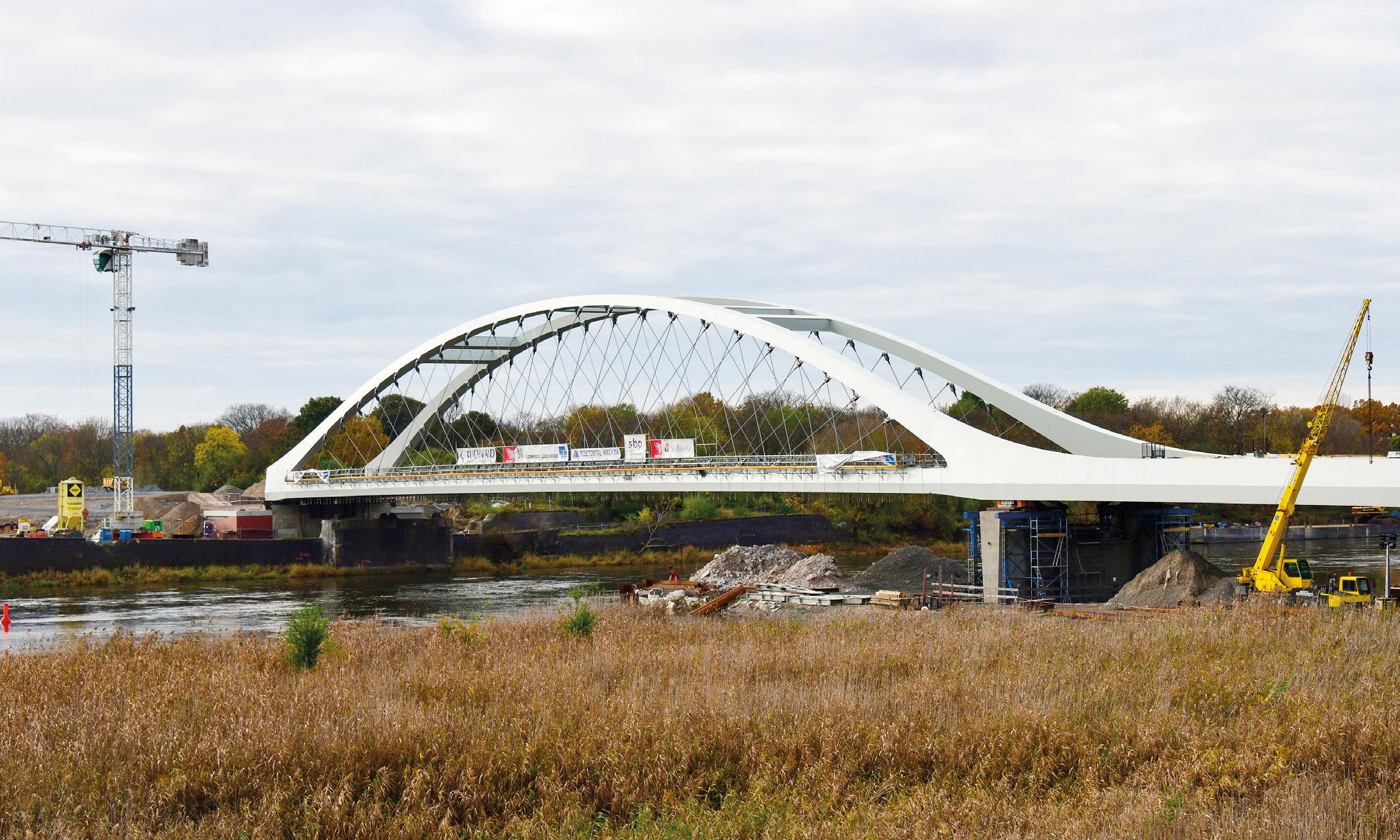
Bridge design that connects with clients and communities
Knight Architects feel an enormous sense of responsibility when designing bridges, and a huge sense of pride when the structures are finished.
“It’s a very special job and I do feel in a position of privilege that we are lucky to do what we do, knowing the influence bridges have on people and the planet,” said Director Tom Osborne.
Knight Architects has brought architectural excellence and design creativity to infrastructure all over the world since 2006, generating value for communities and recognition for its clients.
Bart Halaczek, Director, said: “You build a personal connection with the projects you work on, especially when you’ve been on some for a decade or longer. Each project becomes very special, and you develop strong bonds with the people you work with, both inside and outside the company.
“Nothing beats the day of the opening of the bridge. We always design with empathy, thinking about how the bridge will be perceived and how it is
going to be experienced from the user perspective. Once the ribbon is cut, you can see a great number of people really enjoying their new bridge. It is an experience which is priceless and really rewarding for all the years and energy that you’ve put into it.”
The practice’s creative team combines architecture, design, engagement, and communication expertise to help deliver transport projects on time and on budget through proactive collaboration and strategic design.
“We create memorable and distinctive bridges: landmarks as well as understated structures,” said Tom. “We are rewriting how transport corridor infrastructure – which of course includes rail - is designed in sensitive environments: to reflect the unique characteristics of the landscape and provide dynamic experiences for users.”
Knight Architects’ holistic design approach reduces risk to budgets, projects, and reputations by bridging the technical gaps between specialists and local communities. It weaves together people
and landscapes, from concept to delivery. This creates positive perceptions of engineering projects, enhancing stakeholder buy-in through communityfocused design, and reducing risks to programme delivery.
“We are a diverse company featuring a great number of different backgrounds which comes through in the bridges that we design,” said Tom. “We don’t have a company style, instead we have company values; most of our bridges look different to one another because we believe good design is a unique response to people and to place.
“We’re also very passionate about net zero and sustainability, which is central to what we do now, not just in the embodied carbon of our bridges, but in what they do, the future behaviours that they can activate, how they help people move around, and improve lives.”
Key to finding clarity in complexity is addressing the key questions: “Why is this project needed?” and “Who will it affect?” as well as the more familiar,
Image: Knight Architects
ADVERTORIAL 52 May 2024
“What is the technically feasible solution?” and “How will it be built?”.
Going with the flow Innovation is an important aspect of the way the team at Knight Architects works.
“For us, innovation means trying to optimise what we do, not being afraid to challenge things that we don’t think are right, and being able to think differently and laterally around solutions,” said Tom. “The definition of insanity is doing the same thing over and over again and expecting different results, and so innovation is a vital part of addressing the demands of the climate emergency.
“It does seem crazy to expect procurement processes that were established long before a climate emergency was ever declared to all of a sudden create fundamentally lower carbon solutions. So I think innovation for us is recognising that we may need to do things differently to live up to our declares.”
Knight Architects did just that when appointed by Network Rail to develop an innovative new standard footbridge design as part of the drive to improve safety at level crossings. The brief sought to find an alternative to the heavy steel standard footbridge used across the railway. The solution was its FLOW bridge, with FLOW standing for fibre-reinforced polymer (FRP), lower cost, optimised design, working bridge, but the name also underpins its striking and modular design.
The first location to benefit from the prototype was a rural crossing in the Shropshire hills last year, with the 21-metre long bridge, designed to save time and money, said to cost around 40 per cent less than traditional steel structures. No concrete was used in the foundations, reducing the carbon footprint, and it also weighs half of a traditional steel bridge, meaning lower transportation and installation costs.
“FLOW bridge has been a really significant part of our work for several years, and has a strong focus on doing things differently. The integrated team want to demonstrate that standardised design can be excellent design, to unlock the benefits of FRP not just on one site, but system-wide,” said Tom.
“The brief was quite innovative in its own right and we were able to work with Network Rail’s research and development team which allowed us certain freedoms. We also worked directly with the fabricators who knew the material very well and they were part of the project from day one, so it was a very integrated team structure. It wasn’t just the object that we built, but how we did it that I feel had a lot of innovation around it.
“Overall, FRP can be much more cost effective at this scale than steel, and also lower carbon. But we also wanted to put the user at the heart of the design to demonstrate that these bridges can be more than just crossings of the railway. We wanted to build outward-looking assets that communities can be proud of. These solutions haven’t just solved a technical problem, they have demonstrated that standardised design can be excellent design.”
Ahead of the curve
An example Bart gives is from 15 years ago, when the team designed a mass timber bridge crossing a road
and tram lines in mainland Europe which introduced the idea of a carbon sink before the concept of a carbon sink was developed. The bridge was never built at the time, but the system was taken on by other fabricators and is now being built all over Germany.
Another mainland European project of note is a new rail crossing that will provide a vital link across the Polish-German border in Kostyrzyn/ Küstrin. The crossing revives the once famous BerlinKönigsberg-Eydtkuhnen rail line, breathing new life to an important pre-Cold-War trade corridor. The 266-metre-long main crossing replaces a derelict, pre-WW2 single-track truss with a distinctive 130m network arch spanning the River Oder.
“The steel arch is positioned with its crown directly above the demarcation line of the border. It is a landmark that reflects the significance of the location, and welcomes travellers between the two countries,” said Bart.
“It is a network arch, very material-efficient, and the inclination of the hangers allows the overall structure to act as a hybrid between an arch and a truss. This combination allows a reduction of material both in the chords as well as in the diagonal members. In this particular case, the hangers, which are typically made of steel, have been replaced by carbon-fibre hangers. This allows for a further reduction in weight, but more importantly, helps to deal with material fatigue and therefore reduces maintenance costs. It is the first time such a structural system has been implemented in a rail bridge, and the credit goes to the engineering specialists at Schlaich Berger und Partner in Berlin.”
Looking to the future, Knight Architects’ approach to design will be driven more than ever by the need to respect the environment.
“Bridges can be more efficient, lower carbon, lower cost, and more valuable assets if you allow time to design at the right moment in the process and you are asking the right questions. FLOW bridge demonstrates that,” said Tom. “In the future, we want to do more to tackle the climate emergency because we feel that infrastructure has the opportunity to influence people and the planet in a meaningful way.
“There is a lot of learning that needs to be done to make sure we are using this position of influence as positively as we can. Finding clarity in complexity requires us to work with clients to set the right brief, set clear metrics so that costs and climate are aligned, and ensure that the time needed to design is valued.
“We need to shift our focus from objects to outcomes and recognise the influence infrastructure has in promoting a modal shift. This is especially powerful when rail is paired with active-mobility modes, and its effect can clearly be seen on schemes like our Kruunusillat project in Helsinki”.
Bart added: “We know that building more roads is not the answer for the future, so we should invest in the renaissance of the rail as this is what will contribute to removing cars and freight from the road network. Rail infrastructure needs to be more efficient, it needs to be done better and this is something we are passionate about improving. Wherever we see the possibility, this is where we innovate.”
Most of our bridges look different to one another because we believe good design is a unique response to people and to places


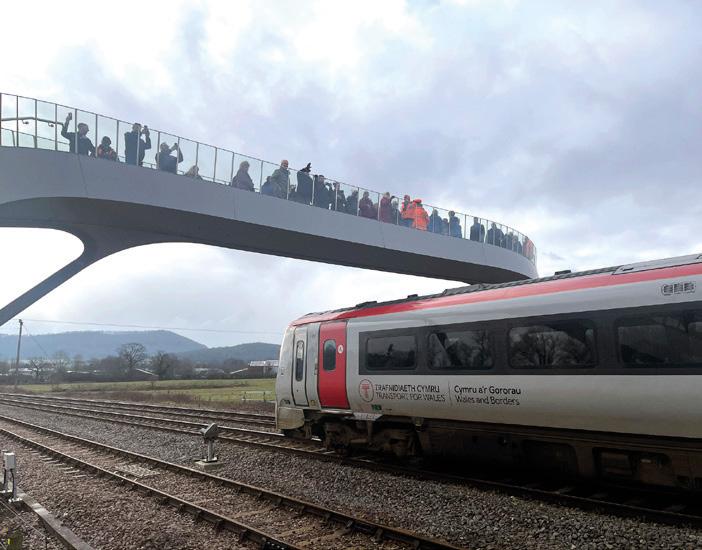
Visit www.connect.knightarchitects.co.uk/ for more details. ADVERTORIAL 53 May 2024
Images: Knight Architects
Worldline UK&I is creating a workplace where diversity is celebrated, and everyone feels valued, respected, and empowered to reach their full potential. Julie Hillman explains more.
Leading light around gender equality and social mobility
Identifying and understanding the gaps is the first step towards creating a fairer and more inclusive workplace. It is something at the heart of multinational company Worldline, which offers a comprehensive array of solutions to the rail sector, including secure payments, transactional services, operational systems, and customer information systems.
“The collective experience of a diverse team can shape what an organisation looks like and does in the future,” said Julie Hillman, Transformation Director at Worldline UK&I. “By drawing from those experiences, we’re able to offer a better service and a better product, so it is crucial that we remove any potential barriers that get in the way of an individual’s ability to fulfil their potential.”
While she is a key player on Worldline UK&I’s leadership team, Julie is driven in ensuring everybody has a chance and dedicates time to guide and mentor other team members. It is this kind of spirit that helped Worldline UK&I secure a place in The Times’ list of Top 50 Employers for Gender Equality for two years running, while also earning a ‘Great Place to Work’ certification.
More recently, the company was shortlisted in the ‘Employer of the Year’ category at the Women in Rail Awards, with Julie picking up the ‘Inspirational Woman of the Year’ award.
“I really appreciate and am humbled about my experience at the Women in Rail Awards, but I didn’t get to where I am by myself,” said Julie. “There are so many people that have contributed to my career and personal journey and without whom there’s no way I would be sitting here having this conversation.”
Despite Julie’s modesty, there’s no denying her career journey supporting the broader rail industry is inspirational. She left school at 15 with no GCSE/O Level qualifications and joined a Youth-Training Scheme (YTS). While working full-time and raising a family she undertook professional qualifications, culminating in an MBA at Loughborough University. From initially working at British Rail Business Systems (BRBS) she has progressed to Transformation Director UK&I.
“I think a big driver for me during the early part of my career was to prove people wrong, especially the ones who believed I wouldn’t achieve anything,” she

The collective experience of a diverse team can shape what an organisation looks like and does in the future
said. “Now the drive on a day-to-day basis is to inspire people to pursue a meaningful career, providing them with those key stepping stones along the way.”
Among just the few successful initiatives Julie has led at the company include mentoring, being executive sponsor for one-to-one and group coaching led by Head of EDI, and contributing to monthly WISE Women forums discussing topics including menopause, imposter syndrome and first aid. What she is particularly proud of is setting up the
organisation’s apprentice programme, and applying for Business in The Community (BITC) Opening Doors campaign commitments to give all a chance.
“It is a passion of mine as I started off on an apprenticeship scheme that gave me my lucky break,” said Julie, who has run the last two cohorts of the apprenticeship scheme at Worldline UK&I. “When running an apprenticeship scheme, I don’t only look for qualifications, what I truly value in an individual is a desire to learn and grow.”
Since 2021, Worldline has onboarded more than 70 apprentices. Last year the company won the East Midlands Regional Apprenticeships Award for Large Employer 2023, which celebrates employers who fire up their business with apprenticeships, outstanding apprentices, and individuals who champion apprenticeships with passion.
“30 years ago, an apprenticeship was the only career route available to a 15-year-old with no qualifications and we had to be in some form of work,” she said. “The Youth Training Scheme was the lightbulb moment for me. Getting into work and having that responsibility, that accountability and that recognition as an adult instead of being a number on a register at school supercharged my ambition.”
And the company’s support to current and future employees is set to continue. In its latest Gender and Ethnicity Pay Gap Report, the company has produced a set of future actions which are aligned around three pillars: engage systemic change, embrace societal change, and empower cultural change.
“The key is about leading from the top,” said Julie. “It’s alright putting together a policy or a plan, but you need to be able to walk the walk. Encouragingly, Worldline has a good track record at championing female leaders, such as Caroline Jéséquel, Head of MTS Global Business Line, and Worldline UK&I’s Sales Director, Asiya Jelani, who is doing some inspiring work with Women in Transport.
“Worldline has the potential to be a leading light around gender equality and social mobility within the rail industry. We are very fortunate to have people from such diverse backgrounds in the organisation who are exceptionally knowledgeable and passionate around the same topics and the same subjects.”
Visit www.worldline.com/uk for more details.
ADVERTORIAL 54 May 2024



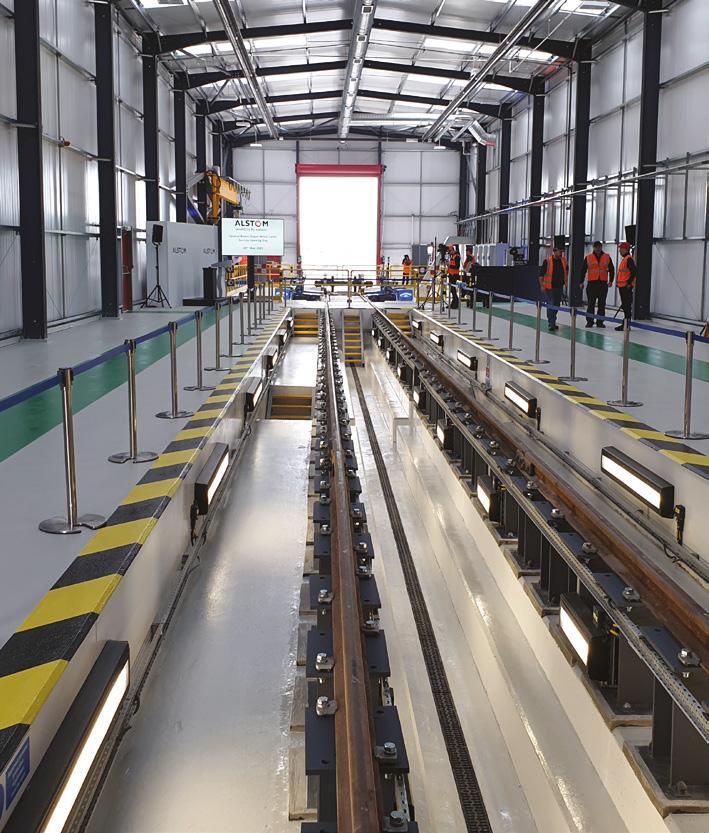












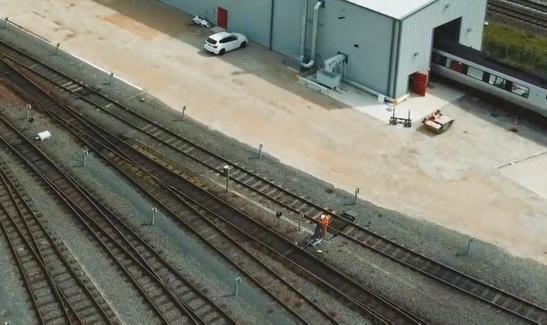









Capabilities & Experience Get in touch 0113 284 2415 Cairn Cross, 1 Cadman Court, Morley, Leeds, LS27 0RX www.cairncross.uk.com Info: info@cairncross.uk.com Careers: careers@cairncross.uk.com Plus much more Carriage Washes CET, Fuelling & AdBlue Fume Extraction Inspection Pits P-way Maintenance facilities OLE Steel Superstructures Wheel lathes to learn more We are a design and build specialist main contractor for rail depots and bespoke Capabilities & Experience Get in touch 0113 284 2415 Cairn Cross, 1 Cadman Court, Morley, Leeds, LS27 0RX www.cairncross.uk.com Info: info@cairncross.uk.com Careers: careers@cairncross.uk.com Plus much more Carriage Washes CET, Fuelling & AdBlue Fume Extraction Inspection Pits P-way Maintenance facilities OLE Steel Superstructures Wheel lathes to learn more We are a design and build specialist main contractor for rail depots and bespoke Capabilities & Experience Get in touch 0113 284 2415 Cairn Cross, 1 Cadman Court, Morley, Leeds, LS27 0RX www.cairncross.uk.com Info: info@cairncross.uk.com Careers: careers@cairncross.uk.com Plus much more Carriage Washes CET, Fuelling & AdBlue Fume Extraction Inspection Pits P-way Maintenance facilities OLE Steel Superstructures Wheel lathes to learn more We are a design and build specialist main contractor for rail depots and bespoke Capabilities & Experience Get in touch 0113 284 2415 Cairn Cross, 1 Cadman Court, Morley, Leeds, LS27 0RX www.cairncross.uk.com Info: info@cairncross.uk.com Careers: careers@cairncross.uk.com Plus much more Carriage Washes CET, Fuelling & AdBlue Fume Extraction Inspection Pits P-way Maintenance facilities OLE Steel Superstructures Wheel lathes QR Code to learn more We are a design and build specialist main contractor for rail depots and bespoke Capabilities & Experience Carriage Washes CET, Fuelling & AdBlue Fume Extraction Inspection Pits P-way Maintenance facilities OLE Steel Superstructures Wheel lathes Scan the QR Code to learn more Railway Infrastructure We are a design and build specialist main contractor for rail depots and bespoke projects
RIA Senior Marketing and Events Manager, Grace Smithen, has praised all the award entries and those who have been shortlisted
Shortlist revealed for the Railway Industry Association’s prestigious RISE Awards

The Railway Industry Association (RIA) has revealed the shortlist for this year’s Railway Supplier Excellence Awards (RISE).
The awards celebrate excellence and achievements in the UK rail supply community, with the winners announced at the prestigious RIA Dinner and RISE Awards at the Landmark Hotel in London on Thursday, June 27.
Dozens of entries were submitted by RIA members for the categories, which have then been carefully considered by a high level panel of railway leaders, before shortlisting.
RIA Senior Marketing and Events Manager, Grace Smithen, said: “We would like to congratulate all of the individuals and suppliers shortlisted for the RIA RISE Awards and express our thanks to the expert judging panel of industry figures who took the time to review the entries. We’d also like to extend our appreciation to those who took the time to submit entries and showcase their achievements.
“The awards showcase the very best practice among rail suppliers, and we look forward to celebrating with those shortlisted and the winners at the event on 27 June. The evening is always a great occasion with networking opportunities and live entertainment for attendees. The dinner is open to all who work in the rail supply industry, and we advise booking a table now to avoid disappointment.”
Attention now turns to the Dinner and RISE Awards where the winners will be announced and there will be a keynote speech from Rail and HS2 Minister Huw Merriman.
Visit www.riagb.org.uk/ for more details.
The shortlist
Application of Digital Technology Award
Cognizant and Network Rail
EAO
IHF
Rail Delivery Group
Southeastern and Teleperformance
Transmission Dynamics
Client of the Year
Alex Hynes
Anit Chandarana
Eoin O’Neill
Nick Millington MBE
Equality, Diversity & Inclusion (EDI) Award
Ampetronic
GoodMaps
Hitachi
i-glo
Transreport
Employee of the Year Award
Fitzroy Martin
Mandana Kazem
Steven Hart
Employer of the Year Award
AEGIS
AtkinsRéalis
Environmental, Social & Governance (ESG) Award
Q sustain Ltd
Arcadis
Innovation Award
Dura Composites
Enable My Team
Gripple
Network Rail (Partnered with Kilborn Consulting, Kier, POISE, AtkinsRealis)
Network Rail (Partnered with One Big Circle, Merseyrail, Merseytravel, and Angel Trains)
NGE
Purple Transform
Q Sustain Ltd
Rail Delivery Group - Rail
Data Marketplace
Universal Signalling Ltd
Partnership Award
CBRE
Costain Ltd (Partnered with Network Rail, Govia Thameslink Railway, Gatwick Airport, Systra, Kilnbridge and Prater)
One Big Circle (Partnered with Angel Trains Ltd)
Rail Electrification Alliance (REAL) (Partnered with Network Rail, Siemens Mobility, J Murphy and Sons, VolkerRail, Systra, Jacobs, Distribution Network Operators – Northern Power Grid, National Grid, UKPN, National Grid Electricity Distribution, National Grid Electricity Transmission, Western Power and Northern Power Grid)
Scott Parnell Ltd (Partnered with Anchor Systems Ltd)
Transmission Dynamics (Partnered with Network Rail, Angel Trains and West Midlands Train)
Unipart Rail (Partnered with Thomson Engineering Design Ltd)
UK Power Networks Services (Partnered with HS1 Ltd)
Rising Star Award
Mario Ramos Garcia
Chaim Harris
Larisa Timofte
Daniel Rickford
Abi Wetton
Madeleine Osei-Baffoe
Jamie Henwood
Safety Award
Cleshar Contract Services
Hitachi Rail
i-glo
Network Rail (Partnered with Loccioni)
Network Rail (Partnered with One Big Circle)
SWGR
SME Growth in Rail
The Adey Steel Group
Forte Engineering
The Hub – Transport Advisory
Wakatipu Consulting Ltd
Wellbeing Award
AtkinsRéalis
Hitachi
Infinitive Group
SWGR
EVENTS 56 May 2024
Photograph from last year’s RIA Dinner and RISE Awards. Image: RIA

AC MOTOR SERVICES
■ Standard Overhaul /Maintenance
■ Full Stator Rewind
■ New Rotor Manufacture
■ New Shaft Manufacture


For more information or to arrange a visit, call us on +353 1 4520033
Associated Rewinds are the leading European company for the Maintenance, Repair and Rewinding of AC & DC Traction Motors for all types of Trains, Trams, and Metro systems.

Chair of Women in Rail, Marie Daly, has praised all the nominated individuals and companies, describing them as “all truly inspirational in their own right”
Rail industry celebrates the Women in Rail Awards

This year’s Women in Rail Awards has been described as one of the hardest ever to judge, with more than 380 entries received and 81 shortlisted nominations.
The seventh awards took place earlier this month at the Roundhouse, Camden in London, with 13 awards being presented across team and individual categories, and a further 10 Highly Commended and Judge’s Special Mention awards presented to exceptional shortlisted nominees.
Delivered by Nimble Media, the event was attended by over 780 individuals from across the rail industry. They came together to celebrate colleagues, teams, and companies who work hard to support others and to help create a more gender-balanced, diverse, and inclusive work culture in our industry.
Following the Champagne Reception, guests were serenaded to their seats by the Southeastern TRAX
The 2024 winners are proof that UK rail is driving the EDI agenda forward
Choir. A welcome address from Chair of Women in Rail, Marie Daly, followed by a keynote address from Nia Mellor, Detective Chief Inspector for the British Transport Police, marked the opening of the ceremony, which was hosted by Kate Bottley – vicar, journalist, media presenter and reality television star.
Marie Daly, who is also Chief Customer & Culture Officer at Transport for Wales, said: “I would like

to take this opportunity to thank and celebrate all the nominated individuals and companies – all truly inspirational in their own right – whose passion and determination will continue to drive forward the progress and changes needed to improve the gender balance and EDI across the sector.
“Thanks must also go to our 2024 sponsors, the Women in Rail members, volunteers, trustees and regional teams for their collective contributions - and of course, to everyone who attended the event.”
Ian Watson of TransPennine Express was presented with the Adeline Ginn Unsung Hero Award.
A tragic event whilst driving a train changed Ian’s life forever and he is now a key advocate for mental health at both TransPennine Express and in local communities. Ian helped to launch ‘Chatty Benches’ and his work with men’s suicide prevention charity ‘Andy’s Man Club’ led to extensive media coverage.
AWARDS 58 May 2024
Images: Women in Rail/ Jack Boskett Media
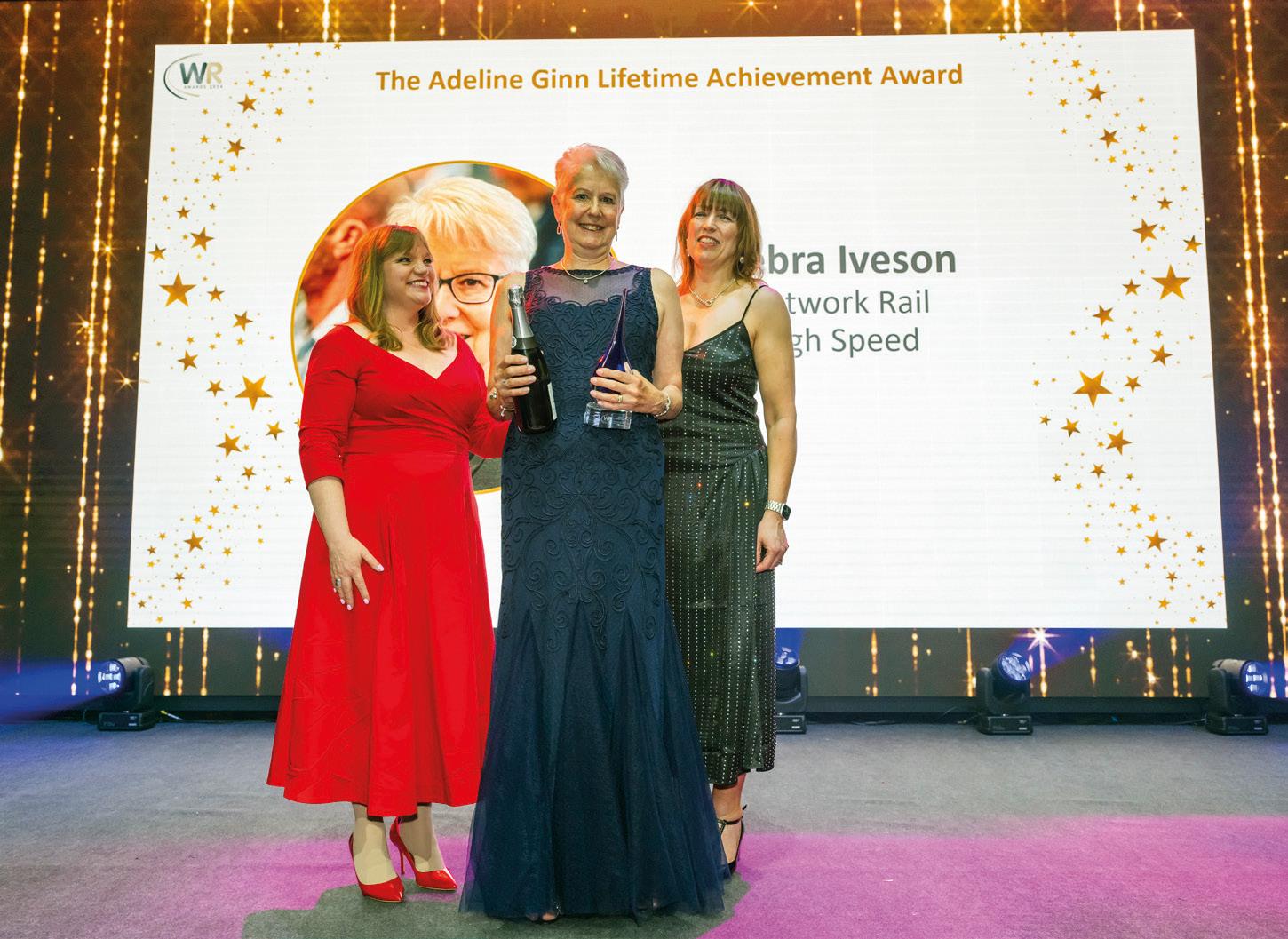

Charity work, local community engagement, and peer support were just some of the outstanding feats mentioned in the nomination for the 2024 Adeline Ginn Lifetime Achievement Award recipient - Debra Iveson of Network Rail High Speed. Her passion, selflessness, and dedication are described by colleagues as “truly unparalleled” - as is her willingness to take on challenges beyond the job description, tackling extra projects with unmatched enthusiasm, and displaying a true passion for work that goes far beyond mere duty. This has included becoming a Mental Health First Aider to enable Debra to better support her peers; raising money for breast cancer charities through walking challenges and collecting bras (which not only helps raise vital funds for pioneering breast cancer research but also offers a new lease of life to bras in developing countries); and organising school assembly sessions
in her local area - personally visiting schools to engage children in discussions about the risks associated with trespassing on the railway.
Marie added: “I am proud to be carrying on the journey started by visionary, Adeline Ginn MBE, who established the Women in Rail charity over a decade ago to improve sector diversity by supporting women across the industry. Unquestionably, more companies are recognising and committing to addressing gender imbalance, encouraging females to join the industry, and embracing the business benefits of having a more diverse workforce.
“This year’s awards has provided further evidence to support this – with over 380 entries received and 81 shortlisted nominations - in a year described by one judge as ‘the hardest year to judge yet’. The 2024 winners are proof that UK rail is driving the EDI agenda forward.”
Women in Rail Awards 2024 winners
Best Training or Development Programme Award
Talent and Development Team – HS2 Ltd
Social Value Award Alstom
Employer of the Year Award AtkinsRéalis
The Equality, Diversity and Inclusion Team Award Alstom
The Equality, Diversity and Inclusion
Individual Award
Rose Merchant, Talent Attraction Manager at Greater Anglia
Female Apprentice of the Year Award
Paige Palmer, Assistant Engineering Technician at Arup
Male Apprentice of the Year Award
Michael Perrett, Manufacturing Engineer at CAF Rolling Stock UK
Female Rising Star of the Year Award
Jane Wright, Environment & Sustainability Engineer at Transport for London
Male Rising Star of the Year Award
Luke Ryan Martin, Supply Chain Activation Manager at CAF Rolling Stock UK
Inspirational Woman of the Year Award
Julie Hillman, Transformation Director at Worldline
Inspirational Man of the Year Award
Jonathan James, Head of Industry Coordination at MTR Elizabeth line
The Adeline Ginn Unsung Hero Award
Ian Watson, Driver Manager at TransPennine Express
The Adeline Ginne Lifetime Achievement Award
Debra Iveson, Asset Protection Coordinator at Network Rail High Speed
AWARDS 59 May 2024
Bruce Spencer, Strategic Lead at MTMS, explains how rail organisations need to work together to attract service personnel past and present into the industry
Forces into railways
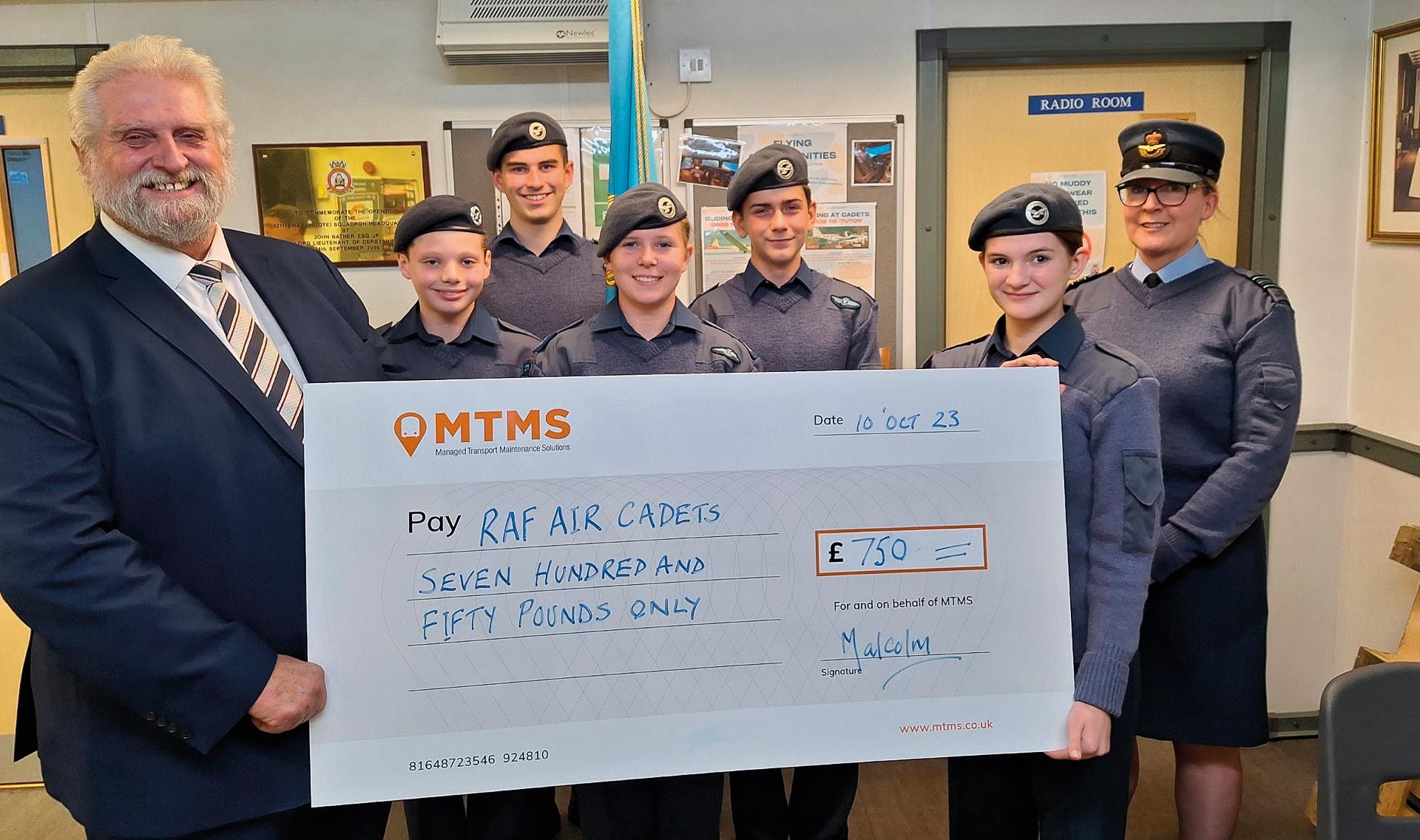
Rail organisations are being urged to come together to showcase the industry as the place to come to for those leaving the Armed Forces.
The sector is being asked to take inspiration from other industries such as the NHS and teaching, which have created specific campaigns aimed at service personnel, seeing the huge potential of transferable skills.
“In a veteran, you’ve got someone who’s gone through a structured organisation, and if they’ve come out as a captain, warrant officer or a sergeant major, or a chief petty officer or flight lieutenant, then they’ve obviously done something right. If you look across the military leadership schools as well –those things refine people,” said army veteran Bruce Spencer, who last year joined MTMS, which services and maintains rail depot specialist equipment and carries out routine infrastructure tasks at depots.
“Veterans who have been on operation have done a degree in seeing ‘someone else’s panic’ and I feel the rail industry is missing a great opportunity to have this skill in the sector. What we need to look at is a platform between rail and defence because it is a valuable source of people. In return, those organisations will
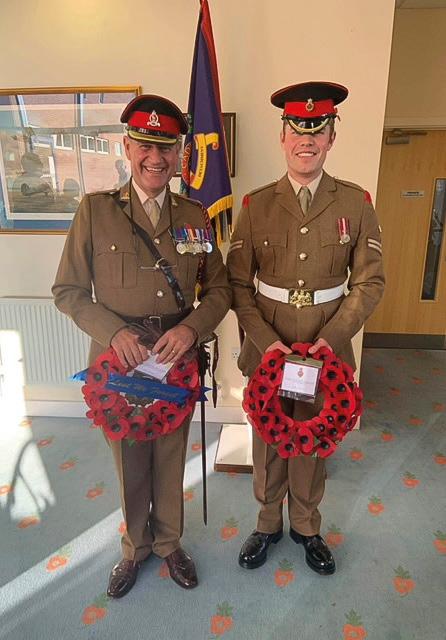
have highly-skilled and dedicated workers who can think quickly on their feet and work under pressure.”
Bruce himself is an army veteran who has dedicated most of his working career to the service as both a regular and reserve officer. He travelled the world for 38 years after first being commissioned into the Worcester and Sherwood Foresters. During his army career, he served in Iraq, Afghanistan and Bosnia to name just a few. He transferred to the Adjutant General’s Corps in the 90s where one of his roles included Military Attache in Kathmandu, Nepal.
“There is something very similar about working in the railways as there is to the army, navy or air force,” he said. “There is the structure of getting something done in time for a particular effect and of course, there are the safety critical aspects.
“There are half a dozen veterans and a few Cadet Force adult volunteers working at MTMS. We want people who can if needed work unsupervised, know the limits of their authority and act independently. Being in the Armed Forces not only reinforces structure, but also reinforces confidence in their own individual autonomy and that is absolutely key.”
It is an opportunity that other industries have tapped into. In 2018 the Government unveiled
PEOPLE 60 May 2024
Bruce laying a wreath with his son Corporal of Horse Edward Spencer, Lifeguards, at Remembrance in 2018 in Mickleover.











Although individual companies have initiatives, I don’t think as an industry we’ve drawn together to say ‘here’s a way into rail for veterans like some other industries have done’
a £40,000 bursary for ex-service personnel to retrain as a teacher. The incentive was the help ex-servicemen and women – who have spent their careers honing the discipline, motivation and unique skills needed to become great teachers – make the transition to the classroom where they can share their expertise with the next generation.
Meanwhile, through the Step into Health initiative, members of the Armed Forces community have been able to connect to NHS organisations to set up training opportunities, clinical and general work placements, insight days, and receive application support. More recently there has been a campaign as part of the NHS’ new Long Term Workforce Plan.
“Although individual companies have initiatives, I don’t think as an industry we’ve drawn together to say, ‘here’s a way into rail for veterans like some other industries have done’,” said Bruce. “What we don’t say to someone is ‘if you’ve driven a Challenger tank or Commando inshore raiding boat you might have pretty good hand-eye coordination and you might be ok in the front of a Type 93 driving up the West Coast.’
“We need a cohort – something we can do here to suck these very valuable people in. I don’t just put it just down to veterans. If you look at the reserve forces – after 20 years of service, they have many of the same qualities as a regular soldier, airmen etc. What they can do is take those standards, those skills, and move them across to a new role.
“Some people’s ideas of what the services look like sometimes come from the likes of Blackadder and Dad’s Army, and you couldn’t be further from the truth and the professionalism is far, far greater.
“Look at the Royal Engineers who built the many Nightingale Hospitals (during COVID) overnight across a week or so. It is also the reserves who are called upon for national and international emergencies. On the latter that was because not only did they have the qualifications, but they had employers that said, ‘go now and help the nation.’”
That is something MTMS has implemented, last year increasing the amount of leave it gives to staff who are serving with the Armed Forces to free them up to serve King and country.
It has now pledged to give 15 days’ paid leave for any reservists working at the firm, six days’ paid leave

for Cadet Force adult volunteers, and two days’ leave for any spouses of serving personnel.
The promise was made in November when it hosted an Armed Forces Covenant event at its headquarters, where three UK firms signed up to the Defence Employer Recognition Scheme, a Government-backed incentive which encourages firms to support veterans, reservists and local cadets.
“We are a Silver Award holder of the MOD employer recognition scheme,” said Bruce. “It is important to support reservists and Cadet Force adult volunteers paid time away as support because they do things on our behalf and as a consequence, we give a little bit to make their life a bit easier.
“It means reserves don’t have to choose between duty and family and as an employer showing that commitment you are attracting people into the business that you want and at the same time supporting defence which is part of the corporate social responsibility piece.”
Speaking to Bruce, who outside work dedicates time to the Chesterfield Sea Cadets and the Mickleover branch of the Royal British Legion, is particularly poignant given next month’s commemoration of the 80th anniversary of the Normandy Landings on 6 June 1944 - something he was keen to mention to conclude the interview.
D-Day was the historic operation that saw Allied forces mount a large-scale invasion of Nazi-occupied France that ultimately tipped the course of the Second World War in the Allies’ favour.
“We are talking about thousands of men landing on the beach,” he said. “It will have taken a huge effort to get that enormous sea landing generating and then pushing onto the beaches of Northern France. Now, 80 years on is probably the last moment we will get to remember with the veterans who were there because of the age of those people it involved.
“The railways reflect society, but also the railways are full of veterans, full of reservists, full of Cadet Force adult volunteers and that is the reflected effect that you get from what is a structured organisation reflecting a national moment.”
It is particularly important to Bruce, reflecting on a story his father shared.
“My father lived in West London and the day before D-Day they had an entire Canadian battalion billeted on the road – about 500 soldiers and very few made it back,” he said. “My father tells another story that on the 3 June paratroopers, probably from UK’s 3rd Parachute Brigade were all given their four days of tinned rations to exist with once they were dropped behind enemy lines.
“One of the guys saw my father, who was then aged eight, and his brother aged six, and one of the last things they did was to give them the bars of chocolate out of their rations because they said they were not going to see their children again.
“We all do some fairly extraordinary things in our life, but I don’t think we’ve seen such an extraordinary effort from across the globe as we saw in June 1944. The importance of ‘doing remembrance’ is if we fail to remember it can happen again. This year will be particularly poignant as it will be the last time we are going to celebrate a very special population of people.”
PEOPLE 62 May 2024


power up your journey



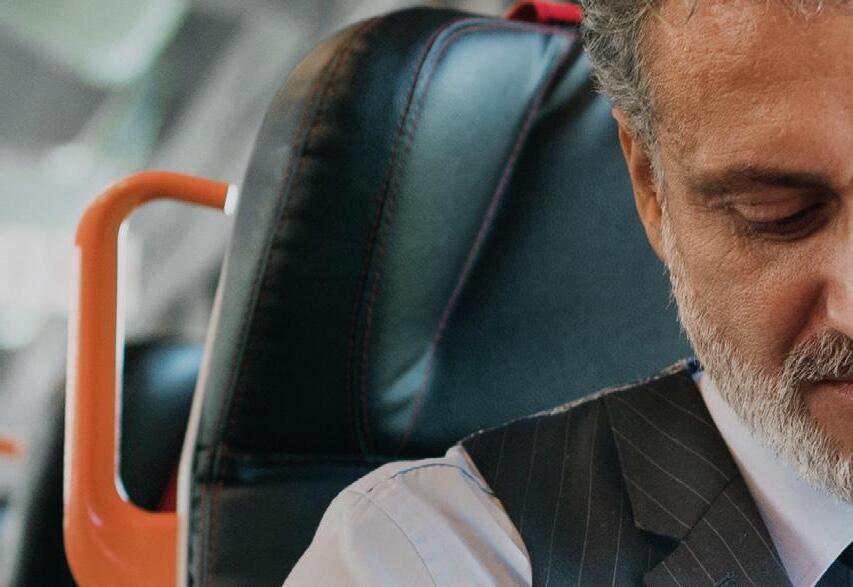



REPLACE USB MODULES ON-SITE, IN MINUTES //
OE’s patented, replaceable TUF-R USB modules are designed to be easily repaired when they incur damage or swiftly upgraded as technology advances.
With our proprietary TUF removal tool and exchangeable modules, you can replace TUF-R USBs on-site without need for an electrician or turning the power o .
FIND OUT MORE: transport.oeelectrics.co.uk

















Railway Approvals company a DB

Arcadis has announced its strategy for the next three years. Helen Murphy, Managing Director for Rail, discusses how the plan will provide a solid platform for the challenges facing the industry
Accelerating a planet positive future
Global sustainable design and engineering consultancy Arcadis has released its latest three-year strategy titled ‘Accelerating a Planet Positive Future’ and focusing on addressing clients’ needs as they pursue their objectives. These include decarbonisation, electrification, and the transition towards renewable energy resources, the onshoring of advanced industrial facilities, and the need to replace and upgrade existing infrastructure while moving to smarter, cleaner, more efficient modes of transportation.
It is very much in keeping with Network Rail’s Control Period 7 (CP7), the five-year rail improvement plan which started in April, and which is looking at delivering a simpler, better, greener railway that provides the best level of train performance and that’s more geared up than ever before to cope with the extremes of climate change.
“There are four key challenges really,” explained Helen Murphy, Managing Director for Rail at Arcadis. “The first is around tackling climate change and being able to make the transport network more resilient, the second is around urbanisation and helping people to move more efficiently within cities, the third is around the supply chain and working with a much wider and more diverse group of companies to provide services and solutions, and the fourth is around infrastructure investment and that being increasingly constrained, particularly in the transport sector.”
The leading global design and consultancy organisation is ideally positioned to make a difference and building on its strong 2021-2023 foundation is confident its next three-year strategy will accelerate a planet positive future through the delivery of three strategic priorities: sustainable project choices, digital and human innovation and powered by people.
“An example of sustainable project choices is the study done by Deloitte that looked at the size and scale of the EV market in the UK. That’s £15 billion over the life of our strategy, so we certainly want to

ADVERTORIAL 64 May 2024
be one of the organisations that gets a share of the investment and that changes and accelerates change within the EV market,” said Helen. “There’s also a £90 billion investment in the freight industry and so we are looking at how we can continue to help our clients and the rail industry as whole to provide opportunities for freight to be carried more sustainably.
“The first strategic priority is about looking at where we want to work in the market and how we position ourselves to pick up the right kinds of projects, through to making and embedding sustainable choices in what we’re doing day-to-day. We have also developed a sustainable design guide that all of our engineers use in their project work to make sustainable choices and to help our clients to embed that in their decisions and their investments in new infrastructure.”
Touching on the powered by people priority, Arcadis, which features more than 36,000 people in over 30 countries, has committed to developing and investing in its people by creating a skills powered organisation that will provide its people the skills to address future client needs and deliver improved workforce efficiency.
This is particularly important to Helen, who is passionate about the working environment and increasing the number of female engineers (a 40 per cent target has been set over the three years) and enhancing people development and career paths through prioritising continuous learning, expertise, and adaptability among staff.
“We’re a global business, so one of the keys to making that successful is enabling our people to work on projects anywhere in the world,” she said. “That doesn’t mean asking people to travel or to relocate, but actually being able to pick the right experts from the right county around the world to solve client solutions.
“We’ve got a couple of really good examples of that right now actually, where we’ve got one big project in North America and are helping to resource them from the UK. We’ve just been successful on the Hudson Gateway project in New York, which is a massive scheme connecting the railway under New York and under the Hudson River. One of the senior team for that joint venture has come from the UK business and is managing that.”
The third point is around Arcadis’ commitment to build on its digital leadership, including through its intelligence global business area, providing innovative technology-enabled solutions and products across the entire asset lifecycle. It will continue to invest in new digital products and expand its offering to provide event greater value to clients through asset optimisation and efficiency. Internally, Arcadis has said it will accelerate implementation of digitalisation, standardisation and automation of operating procedures, reducing non-billable hours and driving efficiencies.
It is this area that is going to be particularly useful for the challenges facing the rail industry when it comes to climate resilience.
“I think we have a fundamental role to play during CP7 both in terms of delivering the work bank with our

contractor partners, and helping to shape how the renewals and investment in the industry can be more efficient. By that, I mean having a greater impact for the amount of money we spend,” said Helen.
“Network Rail’s focus is on making sure that climate resilience is at the heart of all of their enhancements, maintenance and renewals in the future and that is where we’re really positioning ourselves in helping clients find the right sustainable solutions for their projects and to build the most resilient transport network that we can. Working with all of the supply chain as part of CP7 we can really start to make a big impact on making the network more resilient, ensuring we can reopen as quickly as possible, but also providing really good information about alternatives to people that need to travel.”
As one example, Helen mentions trialling technology around bank stabilisation and monitoring, where the industry has seen an increasing number of landslips that have affected routes and services.
“We’re using a series of monitoring sensors that have been used to predict avalanches in ski resorts in Europe, and we’re using the same sensor technologies that can be remotely monitored to look at changes in embankments on the railway,” she said. “It is a good example of how we’re bringing some of our global expertise to the UK, slightly repurposing it for the conditions we have here, but it should have a really good impact on being able to minimise disruption and any potential risks on the infrastructure.”
In another example, Arcadis has done some work with Birmingham City Council around testing all sorts of different policy and investment interventions in the transport network as a whole, helping policy makers make decisions about what the impact of different investments in different types of transport would be. With the Transport Strategy Optimiser they are then able to come up with a series of decisions around which investment helps them to deliver their policies with best effect.
“That’s a really good example of where we’re helping decision makers to actually think about how they can look across all of the investment in the sector and prioritise to meet their policy objectives,” said Helen.
Over the next three years, Arcadis targets a midhigh single-digit organic annualised net revenue growth for 2024– 26 and aims to further improve its operating EBITA margin to at least 12.5 per cent in 2026. Other initiatives include developing new client methodologies and tools to measure sustainability across five core themes - Carbon, Nature, Water, Circularity and Social Impact. The next strategy cycle will also see the company commit to a 70 per cent reduction in Scope 1 and 2 GHG emissions by 2026 and a 45 per cent reduction in Scope 3 GHG emissions by 2029.
Helen, who joined the company in March last year, having previously been Director of Commercial Consulting and International Operations at Transport for London, said: “I feel like my first year was bedding in and understanding the business, making a few changes but getting to know the clients and projects.
I think we have a fundamental role to play during CP7 both in terms of delivering the work bank with our contractor partners, and helping to shape how the renewals and investment in the industry can be more efficient
“This new strategy gives me the chance to really grow and develop within the marketplace, so diversifying some of our clients, offering different services to some of those clients that we’ve worked with for a long time and overall playing an important role in ensuring a safe and efficient rail network and in working on the big projects that will have a positive impact on so many lives.”
Visit www.arcadis.com/en-gb for more details.
ADVERTORIAL 65 May 2024
Gwendoline Cazenave, Chief Executive Offi cer (CEO) at Eurostar, has said the organisation is committed to being the most sustainable form of international travel when it comes to carbon emissions
Eurostar pledges to power trains with 100 per cent renewable energy by 2030

Eurostar has announced its goal of enabling 30 million passengers to travel sustainably while lowering carbon emissions by 2030.
The details have been revealed in its first sustainability strategy, which focuses on three main areas:
Reducing its impact by sourcing renewable energies for its traction needs and reducing its energy requirements.
Integrating circularity throughout the value chain, i.e. from production to end-of-life, to minimise waste and use resources more efficiently.
Attracting more passengers by continuing to develop ‘open hubs’ to connect Eurostar services to domestic networks or long-haul flights.
One of Eurostar’s primary objectives is to work with partners and regulators in its quest to power its trains
using 100 per cent renewable energy by 2030.
“This is a deliberately ambitious target, Eurostar wants to use its brand and commitment to accelerate change across the sector,” said Eurostar CEO Gwendoline Cazenave. “To achieve our goal, we work closely together with our partners in each of our markets, we encourage regulatory support for the rapid deployment of new renewable energy projects.”
In the Netherlands, Eurostar trains have been running on 100 per cent wind power since 2017, and this figure has reached 40 per cent in the UK since 2023. In Belgium, a Memorandum of Understanding was signed with Infrabel in February 2024 to study the installation of novel solar projects to power trains.
“We’re building the backbone of sustainable travel in Europe, with a target of 30 million passengers by 2030, at the same time we’re also committed to building the mode of international transport that has the least negative impact on the planet, reducing emissions even as we grow,” added Gwendoline.
To facilitate its work, Eurostar recently joined
the RE100 alliance with companies committed to sourcing 100 per cent of their energy from renewable sources. “We’re proud to be the first rail company to join,” added Gwendoline. “Today, the transport sector accounts for 25 per cent of European greenhouse gas emissions, making sustainable highspeed rail a key solution to a quarter of Europe’s climate problem.”
Ollie Wilson, Head of RE100, Climate Group, said: “We’re delighted to welcome Eurostar to RE100, the first rail firm to join. Eurostar is setting a global example and leading the way on renewables powering our rail networks.
“Eurostar now has the opportunity to draw on a global network of over 400 companies as it works towards 30 million journeys a year powered by 100 per cent renewable electricity by 2030. We encourage other businesses in the rail sector to follow Eurostar’s lead and commit to 100 per cent renewable electricity.”
Visit www.eurostar.com/uk-en/sustainability to read its sustainability strategy.
TRAIN OPERATORS 66 May 2024

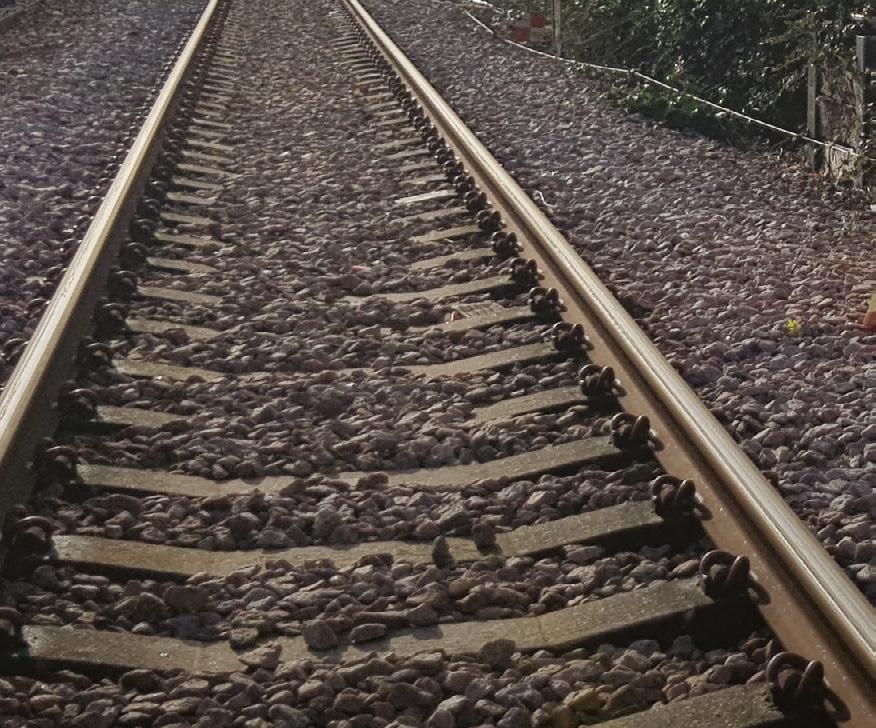




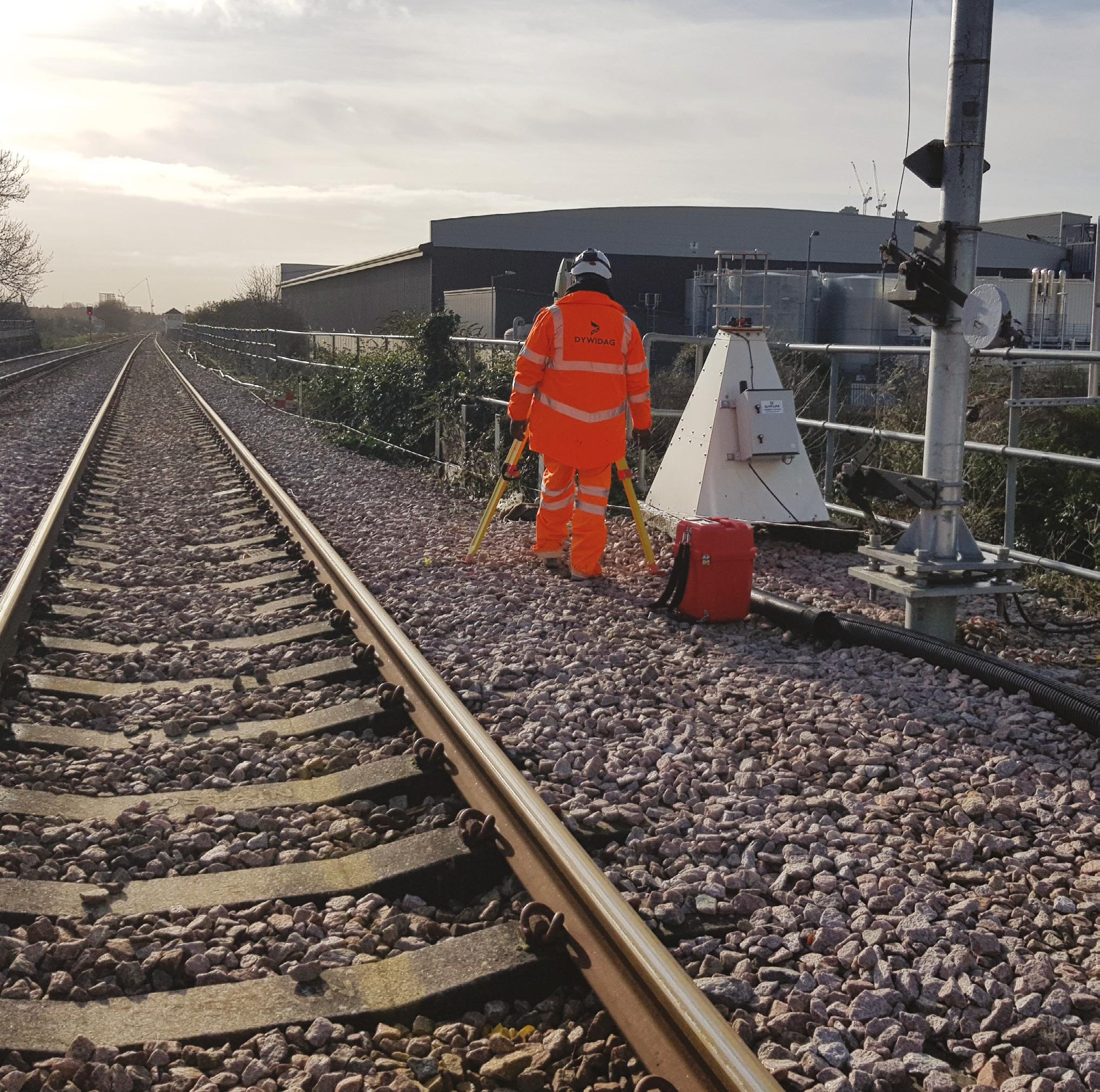
VOID | TEMPERATURE | TILT | WIRELESS We provide an innovative range of products and services specific to the rail industry. From manual to automated monitoring solutions for track infrastructure and other critical assets. Rail and infrastructure monitoring solutions dywidag.com For more information please contact sales.uk@dywidag.com
Jonathan Raper, Chief Executive Offi cer (CEO) at TransportAPI (TAPI), explains how it is innovating with performance data to improve the customer experience
Bringing new rail performance data to Rail Data Marketplace
There is currently a huge focus in the rail industry on understanding the drivers of service performance so that the causes and consequences can be tracked and addressed.
“It is important to understand the customer experience of performance, because what you can’t measure you can’t improve,” said Jonathan Raper, CEO at TAPI.
Jonathan is the co-founder of the leading managed services provider for transport data that is providing customer information to almost half of all UK train operating companies for their customer apps, websites, and screens, serving a billion requests for information from its platform every month.
It has also been working with train operator Northern to provide a new source of performance data that more closely aligns with the customer experience rather than the engineering perspective.
TAPI Rail Performance Managed Service has this month been released on Rail Data Marketplace for general use with both free and chargeable tiers of access, depending on volume.
“TAPI Rail Performance has been created by recording the entire output of Darwin exactly as it was presented to the customer at the time, and records are tagged with all four key references (RID, RSID, train UID, and headcode) used to identify trains,” said Jonathan.
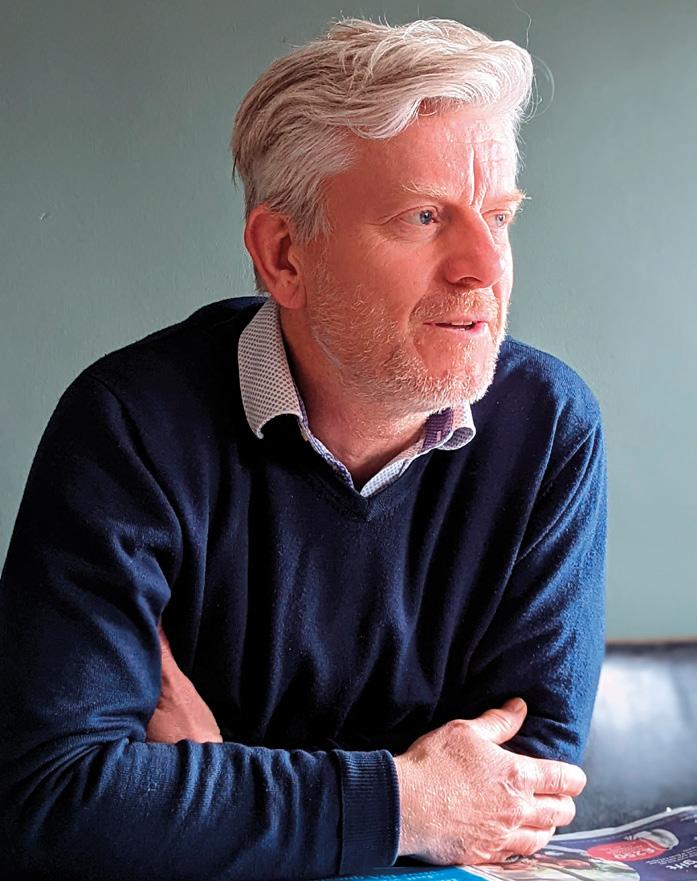
“This new source is available through an API or a web service. It covers scheduled, expected, and actual times for all stations and passing points, and includes station dwell times, schedule changes, and granular cancellation data by service and stop.”
TAPI started in the open data movement with the organisation delivering live data to Transport
TAPI Rail Performance Managed Service Rail performance… as the customer sees it
for London for the 2012 London Olympics. Led by Jonathan, the company has since gone on to pick up a series of huge contracts including for FirstGroup’s public transport information.
“We have an exceptional operating record, for example, we don’t need engineering downtime because we have to operate continuously around the clock. We recognise that we hold enormous delivery responsibilities because should we fail, our major customers would suffer massive reputational damage,” said Jonathan.
“I’m really proud we have built the business from a start-up to one of the major players in this field. We have evolved from being purely information delivery, departure boards, and timetables, towards these value-added services like performance.
“We have an equivalent bus performance product which allows you to see all of the actual journeys that all of the buses take across the country because that is the key to understanding things like congestion and real journey times.
“There is an ever-growing appetite for what we are providing. The key to the future is sometimes the past, and what has happened, and so we are passionate about providing a high quality easy to access version of history for our customers to use to provide a better service for their customers.”
Visit www.transportapi.com/ for more details.
Trusted by

ADVERTORIAL 68 May 2024
Image: Nicky Somerville-Jones
Jones Nuttall
PRECISION ENGINEERING PRECISION ENGINEERING

LATEST CAPACITY UPGRADE MAZAK QT350MA

SCAN QR FOR MORE DETAILS
Jones Nuttall Ltd is a precision engineering company based in Warrington, Cheshire. We pride ourselves in our state-of-the-art CNC machining facilities and over the past 50 years we have been ensuring precision and efficiency in every project we undertake.
Our specialised Rail division, include contracts with the likes of Alstom, Unipart Rail, Metrolink, London Underground and Network Rail. Our experienced engineers handle a diverse range of projects including new builds, repairs, refurbishments and modifications including reverse engineering.
We manufacture components in ferrous and non-ferrous metals as well as exotic materials, advanced plastics, laminates and composites. Our manufacturing processes are continually being developed to meet our clients demands, ensuring that your products meet the standards you require. This makes us a trusted partner for demanding sectors such as oil, gas, energy, nuclear as well as the rail industry.
For precision finishing, we provide quality surface treatments, coatings, and other finishing services. Optional treatments strengthen materials, improve durability, and provide a long-lasting, high-quality finish.
With a comprehensive suite of services available, our experience has shaped our capabilities to match our clients needs. Managing all aspects in-house gives us valuable transparency, ensuring our clients can trust thier projects to be managed seemlessly through to final delivery.
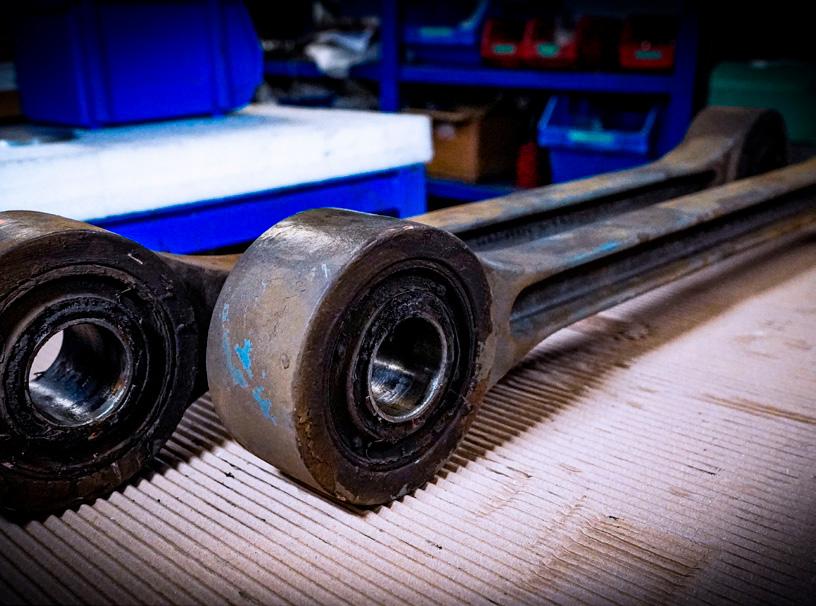
TORSION BAR BEFORE
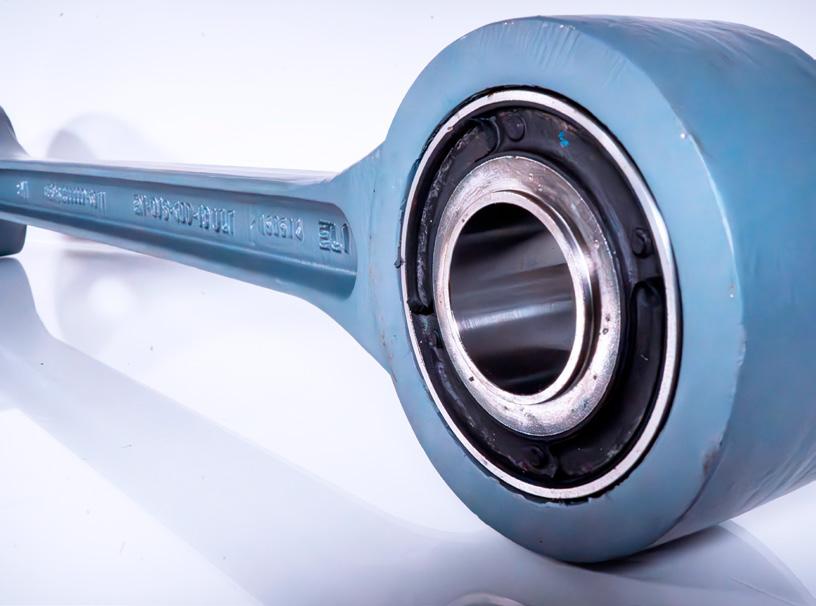
TORSION BAR AFTER


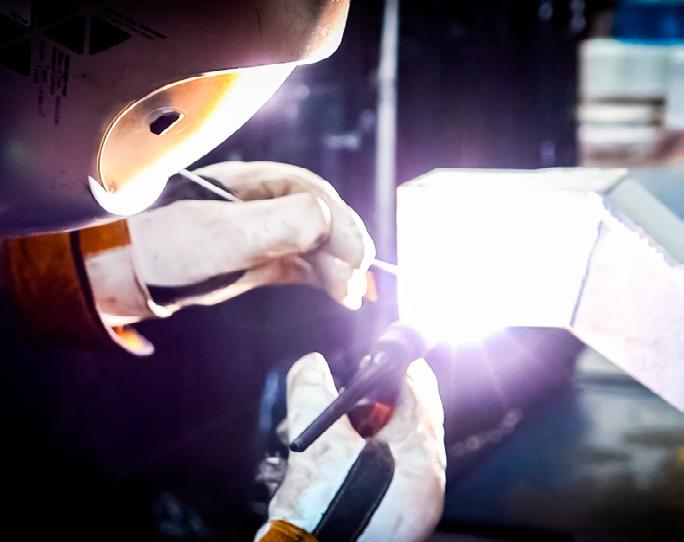






WWW.JONESNUTTALL.COM TEL:01925 628630 SALES@JONESNUTTALL.CO.UK
RSE ENGINE WELDING
ANODISING
RAILDIVISION ACETREATMENTS&CO
THREADED CONNECTORS
DEDICATE D
MILLING & TURNING FABRICATING
Nextec
Director Chris Lee explains
why quality, integrity and responsibility are at the heart of everything they do to ensure the railway remains as safe as possible
Delivering when it matters

What Chris Lee loves about the railway is working on the big multi-disciplinary projects and the family feel of the industry. It is what has kept him in the sector for three decades and what drives him in his current role as Director of Nextec Engineering (Nextec), a specialist in engineering safety management in both metro and main line railway projects.
“The railway really matters to us and we all take a lot of pride in what we do,” said Chris, who initially joined the industry in signalling in the 1990s before moving into safety. “When I first joined it was still British Rail and the thing that everyone said is that everybody, regardless of their job in the industry, has the role to keep trains moving and passengers and staff safe. That still rings true to me today.
“When I first started on the railway, safety tended to be a bit more reactive, such as when an accident happened, and you’d do something to prevent it happening again. The safety discipline was brought in to be more proactive and initially we were probably seen as a bit of a nuisance by other disciplines. But over the years that has changed as people have seen the value that we can add, with the overall aim of keeping trains moving and passengers and staff safe.”

One of two Directors alongside Madeleine OseiBaffoe, its small but knowledgeable team can address client and industry requirements across a number of disciplines, including signalling, power, track and stations, at system and sub-system level.
“Maddie and I are both engineers first and directors second, working to ensure that any changes don’t increase the safety risk to an unacceptable level.
We are predominantly safety engineers, but we do system engineering as well.”
Nextec is driven by its values of quality, integrity and responsibility. The business has grown from nothing, and without outside investment. At the heart of the business is a team of passionate engineers who are adept problem solvers, and exceptional thinkers and doers. They pride themselves on celebrating one another’s successes and embracing the challenges, which they face head on, as opportunities to grow and evolve.
“In setting up the business we wanted to create a company that we really wanted to work for, taking the mindset that if we want to work for the business, then other people will want to work for us and clients will want to work with us,” he said.
“We pride ourselves on the fact that we work on the end of projects and we’re able to deliver, rather than just the beginning when there is a lot of budget and timescales are over the horizon. The way we achieve that is by offering that personal approach and building those relationships.
“We are open and honest, and we take responsibility for our work and make every effort to gain the trust of clients, building relationships.
Image: Shutterstock
ADVERTORIAL 70 May 2024
Above: Team members in the office, from left to right: Emmanuel Butler, Paloma Daniel, Sooyash Dosonyee, Chris Lee and Evelyn Stagnitto. Image: Nextec
Ultimately what we do is about delivering and remembering that you are only as good as your last job.”
The company’s success has been down to its capabilities in bringing a unique blend of expertise, innovation, and customer service to every project. Being a reasonably small team ensures flexibility and agility, and the ability to adapt to changing circumstances to make sure specific needs are met.
The team has been involved in engineering safety management at both client and contractor level in the UK and abroad, having worked on projects such as the Jubilee and Northern Line Upgrade Project; Four Lines Modernisation Project; Paddington to Reading Train Detection Conversion; and Saudi Metro. In addition, Nextec has worked with major rail clients including Crossrail, London Underground, and other major suppliers. “Our role essentially is to demonstrate that a system is safe from a technical point of view,” he said. “We work at product level to demonstrate a product is safe, that it will fail in a safe manner and will not increase the risk to passengers and staff on the railway. That could be everything from interlocking to a transformer.
“But we also work up to a system level where we look at the railway as a whole taking in all of the disciplines, and ensuring that when you make all of these changes the risk to the railway hasn’t increased to an unacceptable level.”
Additionally, Nextec has extensive experience of planning and conducting ESM activities such as System Hazard Analysis (SHA), Interface Hazard Analysis (IHA), Hazard and Operability Studies (HAZOPS), Operating and Support Hazard Analysis (OSHA), SIL determination, fault tree analysis in a railway environment, and production of system level safety cases, generic application safety cases, and specific application safety cases to relevant standards.
Nextec has been actively involved in the planning and management of engineering safety activities through the application of British and international standards (e.g., BS EN 50126, BS EN 50128, BS EN 50129 and IEC 61508) and the Common Safety Method for Risk Evaluation and Assessment (CSMRA).
“Obviously the priority is passenger and staff safety, but from a client perspective, having us
Maddie and I are both engineers first and directors second, working to ensure that any changes don’t increase the safety risk to an unacceptable level

onboard ensures that should anything go wrong, it protects them as they have got competent people in to do safety and demonstrate safety in compliance with all legislations.”
What is especially heartening to hear from Chris about the business is its problem solving and its dedication to doing good for the industry. A recent example of this was the decision to take on three graduates.
“We were struggling to recruit senior engineers, so we made the decision to take on the graduates and train them ourselves,” he said. “We train them, provide mentorship, and give them the railway, safety and business knowledge. We then put them through the Institution of Mechanical Engineers Early Career Development Programme which will teach them about project management, finance, and personal branding, leading towards them becoming Chartered Engineers.
“As well as helping us as a business, we wanted to do it to help the railway by bringing on the next generation. We get a lot of satisfaction out of seeing the graduates develop and it is really important we play our part in bringing on the next generation of engineers. not just for safety, but the industry in general.”
Reflecting on the journey ahead, Chris said: “We want to grow the business, but we haven’t given ourselves the pressures of targets. It will grow organically, as a result of us making sure that it is a diverse environment that our staff like working in, and in which they can develop and do interesting work that they enjoy. We aim to do this while continuing to provide for our clients and sticking to our values, Quality, Integrity, and Responsibility.
Visit www.nextec.engineering/ and www.linkedin.com/company/nextec-engineeringlimited/?originalSubdomain=uk for more details.
 Above: The grads hard at work, from left to right Paloma Daniel, Emmanuel Butler and Saffron Lawman. Image: Nextec
Below: Maddie at the TRACCS rail day in Canada.Image: Nextec
Above: The grads hard at work, from left to right Paloma Daniel, Emmanuel Butler and Saffron Lawman. Image: Nextec
Below: Maddie at the TRACCS rail day in Canada.Image: Nextec
ADVERTORIAL 71 May 2024

OPC’s
Dr Steve Fletcher unveils key characteristics of exceptional train drivers and shares assessment tools to help identify top talent
What makes an outstanding train driver?
The Occupational Psychology Centre (OPC) has worked closely with train drivers and train operators for over three decades, and has encountered numerous exceptional drivers along the way.
Understanding the essence of excellence Dr Fletcher said: “Recognising the importance of selecting top candidates, the OPC conducted thorough research with job experts from various train operators. They included driver managers, team leaders, instructors, and top-notch drivers.
“In collaboration, we pinpointed the unique characteristics that define outstanding performance in a train driver. We consolidated these insights and distilled them into six key competencies, forming a comprehensive framework for assessing excellence in train driving.
“We went on to develop specific tools (mentioned later) to assess these characteristics, facilitating the selection of outstanding train driver candidates.”
The six pillars of exceptional performance
1. Confidence and assertiveness: Outstanding drivers have the optimum balance of confidence and assertiveness. They demonstrate quiet confidence in their abilities, enabling them to act independently and decisively and take control when necessary.
2. Integrity and ethical conduct: These drivers exhibit a strong sense of right and wrong — safe or unsafe. They display unwavering integrity, refusing to compromise on safety or ethical principles, even in the face of pressure, seniority, or dissent.
3. Self-awareness and accountability: Exceptional drivers possess a realistic view of their own performance. They’re able to evaluate their actions, recognise mistakes, accept constructive feedback, and take responsibility for any errors.
4. Strong interpersonal skills and empathy: They behave in a positive and consistent manner at all times towards colleagues, managers, and customers alike. They cultivate positive relationships built on trust, respect, and empathy, breeding a supportive and collaborative work environment.
5. Sound decision-making: These drivers

exhibit sound judgement in all areas of their work through critical thinking. They prioritise safety, considering the broader implications and any risks associated with their actions and driving.
6. Continuous learning and a ‘gold standard’ approach: Exceptional drivers are lifelong learners. They adapt to change easily and consistently ‘go the extra mile’. They exhibit humility and selflessness, volunteer readily, and prioritise the team, company, and job above themselves.
A driver team manager shared: “After a significant incident, a driver operating a northbound train intended to return to London. Despite encountering disruption midway, they volunteered to continue driving further north, fully aware of the disruption it would cause for their own journey home later.”
Assessment tools to help identify excellence
Specifically developed, OPC Assessment regularly recommends two assessment tools for selecting top train driver talent. The first is the Outstanding Train Driver Personality Questionnaire (OTDPQ), which evaluates candidates on the six key personality traits mentioned. Additionally, the Magnificent Seven Situational Judgement Test (M7SJT) assesses decision-making and behaviour through realistic work scenarios to find candidates with exceptional driver attributes.
Customised assessment tools to help identify key train driver characteristics
The OPC provides customised assessment tools and Situational Judgement Test (SJT) development services, helping to pinpoint precise desired behaviours aligned to team and/or organisational needs. A recent project, completed in under six weeks, involved enhancing a client’s train driver recruitment process to integrate behavioural assessments. OPC Talent Assessors conducted comprehensive job analysis to define the key characteristics, resulting in the development of a bespoke pre-assessment questionnaire and SJT. Over 3,000 candidates underwent pre-assessment using the new online tools to identify the top talent with the client’s key desired characteristics in readiness for the train driver assessment process.
Dr Fletcher concluded: “The finest train drivers exhibit quiet confidence, humility, a commitment to continuous improvement, and selflessness without compromising safety. They are rare individuals. We assist operators in identifying and selecting the very best from vast pools of applicants.
“Using these assessment tools and our bespoke test development services can help train operators refine their talent acquisition process to help identify outstanding candidates capable of excellence in their driver role. The OPC remains committed to innovation and ensuring that excellence drives the rail industry forward.”
T: 01923 234 646
E: admin@theopc.co.uk
W: www.theopc.co.uk
Image: iStock
ADVERTORIAL 72 May 2024
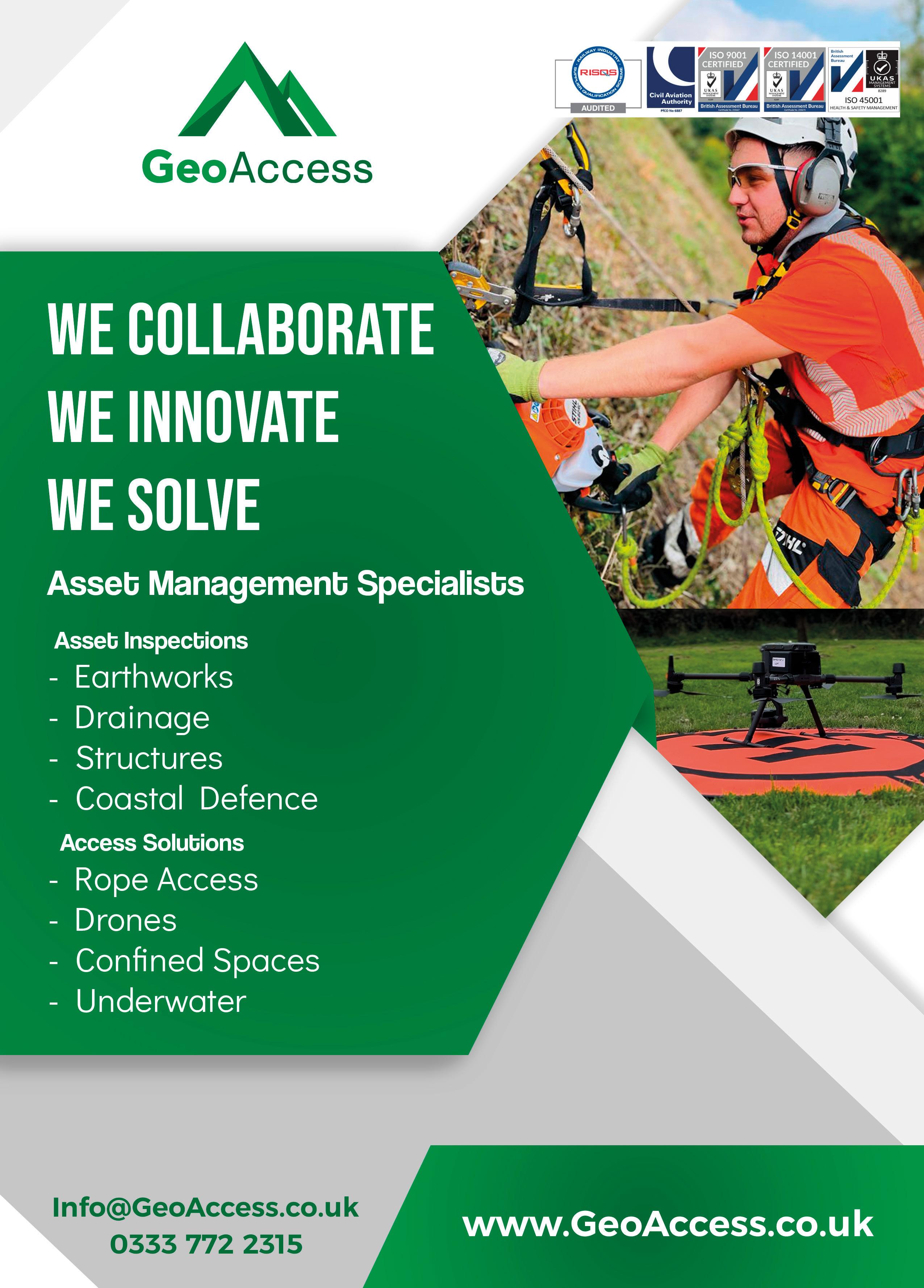
Railway Chaplain Mike Roberts writes about making the railway garden worthy of display, and the gold rosette at the garden show
Clearing the wilderness
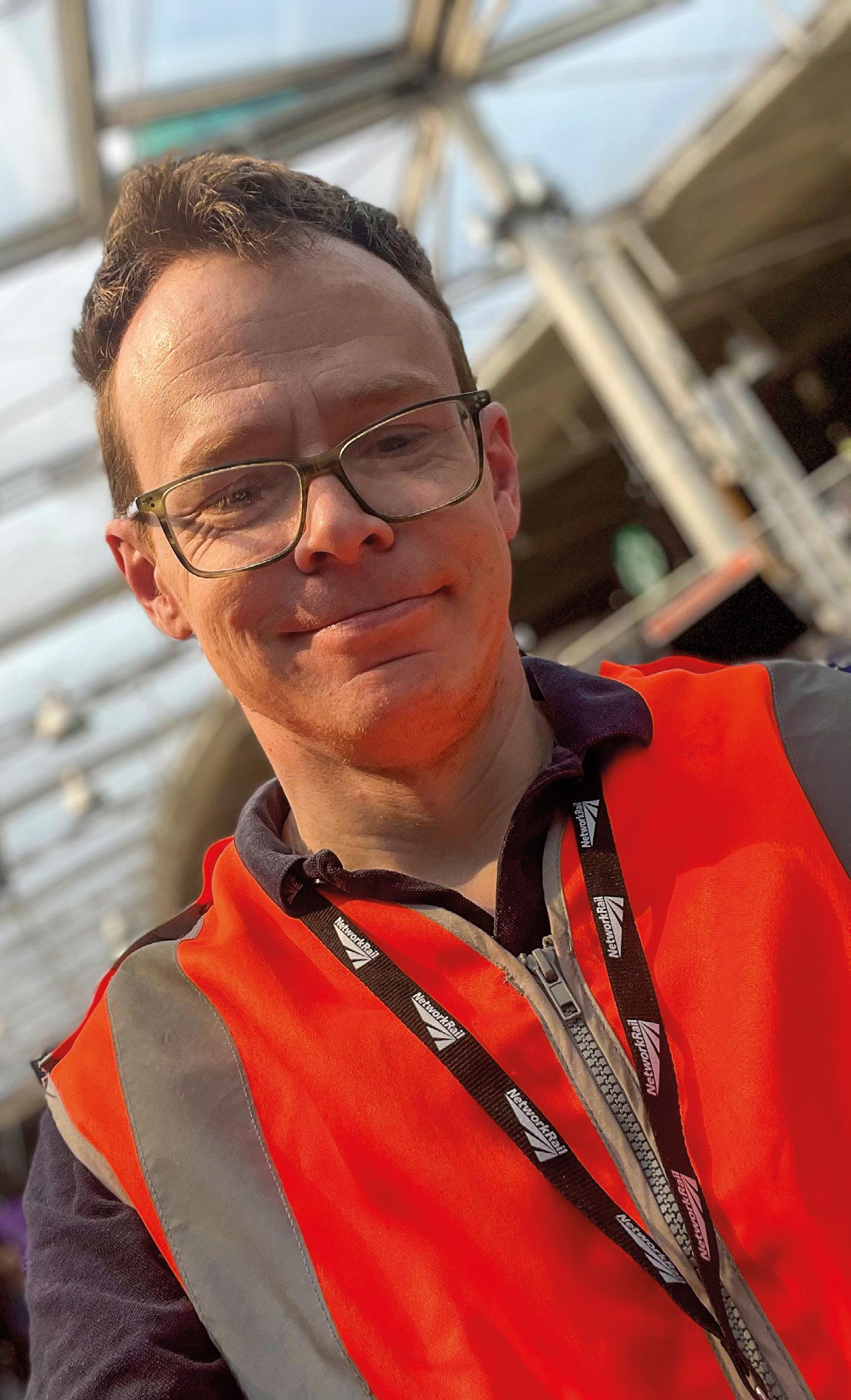
Istood in the kitchen this morning, overlooking the chaos of my back garden. It is not a pretty sight, and my rule in gardening is to cover as much of it with grass as is possible. We moved house about three years ago, and have never got to grips with it, mainly because I am the fairest weather gardener you will ever meet. If it is too hot, too cold, or there is even the slightest chance of rain, I shall stay in the house. Unless the barbecue is out, it is likely that I have stayed in.
So, I stood this morning, looked over the garden, and wondered if 2024 would be the year that I finally ‘get a grip’ on the wilderness. It took a global pandemic and lockdown (not to mention my mum staying for eight weeks) to sort the garden in the last house, and I’m not sure that’s a price we are willing to pay again. I looked out and my mind sorted the garden into different areas.
There’s the lawn. The low maintenance area, just needs a run over with the mower in the summer. There are the areas that I have no control over, that I inherited; each year, the same plants spring up again, and I don’t know what they are or what I should do with them. Even if I cut them back or dig them up, they seem to come back. Then there is, at the far end, the overgrown wilderness which is now so out of control that in my head, I have abandoned it to rule itself forever and ever. And, finally, there are the pots – half a dozen small, self-contained little tubs of order that get potted up each spring (after the final frost) to allow me to feel that I am, in fact, smashing the adulting skill of garden maintenance. Yes, I am a terrible gardener.
As we move to a season where political parties and relevant stakeholders will share their vision for rail (again), I wonder if some of them have a similar way of compartmentalising rail as I do my garden. We have our nice pots, the achievements that we are proud of and happily move to prominence in front of the house so people can admire them and think that I’m a wonderful gardener. And we’re fans of the large lawns that pretty much look after themselves, but I’m sitting here wondering what the rest of 2024, the next parliament, CP7, and the future will hold for an industry which in six years has become a core part of my identity.
We’ve become good at celebrating the wins, displaying the things that work really well – and rightly so. But I’m wondering how we move forward and address the issues of the long-standing inheritances that shape the railway and keep coming back, and
PEOPLE 74 May 2024
even the giant wilderness that we perhaps choose not to see anymore.
In the garden, I have renamed the wilderness. I have redesignated it as the composting area. This was a masterstroke on my part as it means I can take what was not working at all, and make it sound useful. The truth is that my ‘composting area’ is actually a pile where I dump things. All my grass cuttings, offcuts, and weeds get thrown on, and I have never actually used any compost from it. It does, for a while, make me feel better to redesignate the overgrown mess and gives me the impression that I am in control.
Stephen Covey, the leadership writer, said, “The main thing is to keep the main thing the main thing”. As I go around and talk to people it feels like we’re never getting to grips with the explosion of unwanted weeds. In February this year, after the George Bradshaw Address, I wrote a comment on social media that said that it seemed that the only thing everyone could agree on was that we must commit to a future talking about rail reform.
Everyone, from the Department for Transport to train operating companies and unions to the supply chain, agrees the railway needs to change, but in my six years we’ve never got a grip of how. The railway’s greatest asset isn’t the land that Network Rail owns, or the trains that are built, or the innovation that brings new technology to the industry. The railway does, has always, and will forever, run on people. Our people are split into those who we love to show off (the pots people), the parts of the industry we know are overgrown, and the low-maintenance lawn people.
Planting perennials in a pot does not make me a gardener, nor does just displaying our best side ‘when the minister comes’ make a healthy railway. How do we invest in the workforce to make a healthy, thriving railway for a generation to come? How do we invest in the people who we’ve trusted to be the ‘low maintenance’ to bring out the very best? In too many places the relationships on the railway are broken. I watched James Timpson be interviewed the other day and he talked about trusting and enabling the front line to deliver excellence every day. Managers are tired of micromanagement, frontline staff are exhausted from being micromanaged to everchanging criteria. I ask this, knowing that those who read it are far more knowledgeable than I am: how do we liberate and release the railway to be free to come into bloom?
We can’t just keep renaming the overgrown, insurmountable parts of the industry that we don’t know what to do with. We’re losing too many good people, because the endless task of futilely tending to the overgrown is exhausting, and the industrial thorns are leaving too many scars on the lives and mental health of our railway family. The wilderness spaces that we choose not to see need radical attention, the low maintenance space needs some TLC, and those areas where we have inherited the previous tenant’s garden need assessing so we choose what is good and pleasant to keep and nurture, and what needs to be ripped out.
Where I think we, as a whole family, are at fault is that we’ve stopped talking about it. We’ve moved away from collaboration and trust. Whatever your political or ideological view is, I’m sure you will say

that change needs to come. I don’t want to read my column in Rail Director’s May 2029 issue, and be asking whether CP8 and the 2029 General Election will offer the reforms that have been needed for a generation and citing how it has now been eight years since the Williams-Shapps review.
Let’s cut back the branches that no longer bear fruit, tend to those that need some care, constantly feed and water as required and bring our railway garden to be worthy of display, and the gold rosette at the garden show. By all means, let’s celebrate those prize tubs of blooming marvellous flowers, but let’s nurture a garden to match. I work for an organisation that has been around for over 140 years. Railway Mission has been part of the family for almost a century and a half and has seen brands, companies, logos, and fonts change. But it’s also seen the very best people come and stand with them, as we do today.
I am, without doubt, a man who God intended to have a window box and not a garden. But for those people who are, metaphorically, the green-fingered railway gardeners, who can nurture, develop and create an ecosystem to be proud of and prosper, how can we release them, empower them and support them to do what our industry so desperately needs, and our customers are crying out for? If you see me, in spring 2025, please do ask me how my garden is, but please let’s also ask one another how our railway is and whether 2024 has been a year to release pioneers, innovators, customer experience champions, and accessibility advocates to do what they can do best for the industry that so many of us love.
Let’s cut back the branches that no longer bear fruit, tend to those that need some care, constantly feed and water as required and bring our railway garden to be worthy of display, and the gold rosette at the garden show
www.twitter.com/birdsnestsblog www.railwaymission.org
PEOPLE 75 May 2024
David Clarke is the Technical Director at RIA, with a focus on representing members’ interests in the areas of safety, technical standards, strategy, research, and innovation. He reflects on the organisation’s work and the important role to be played in the future
RIA – a longstanding campaigner and champion for train suppliers

The Railway Industry Association (RIA) is looking forward to celebrating its 150th anniversary next year. Such a landmark is inevitably an opportunity to both look ahead and to reflect on the past. More on this will be revealed in due course but it’s worth remembering that RIA was called the Locomotive and Allied Manufacturing Association until 1971. It’s a
reminder of the long history the association has in campaigning for and representing the interests of UK rail manufacturers and suppliers.
‘Feast and famine’, ‘peaks and troughs’ or ‘boom and bust’ are the phrases which pepper the historic arc of UK rolling stock procurement over recent decades. The late 1990s and noughties saw more than a thousand days without an order for new
trains. More than two decades on we have exceeded that number of days with no substantial rolling stock contract awards.
In March 2019 we published the Electrification Cost Challenge report, which provided a revised approach to implementing the technology following the challenges of the Great Western Electrification project. A key recommendation of that document was
RAILWAY INDUSTRY ASSOCIATION 76 May 2024
Image: Shutterstock
the proposal to introduce a rolling programme across control periods to smooth delivery, retain skills, and lower costs.
More than five years on that report has stood the test of time well and provided something of a framework for subsequent RIA policy development work including the 2021 ‘Why Rail Electrification?’ report which both reframed and reset the benefits of rail electrification in the context of the then Government’s decarbonisation plans. Also contributing are our industry-leading Oxford Economics-commissioned Economic Value of UK Rail reports in 2019 and 2021 and further interventions on key industry themes such as ‘Learning from Major Projects’ (2021) and ‘A Railway Innovation Strategy’ (2022).
In collaboration with members, we compiled and published ‘The UK Rolling Stock Industry: Making 2023 the year of opportunity not crisis’ last July, which was a renewed call on the Westminster Government to urgently make decisions on rolling stock orders to avoid major job losses and highlighting the very significant economic consequences of ongoing political inaction and indecision. In particular, the report recommended a set of options including the urgent upgrade or replacement of the oldest diesel trains. We calculated that c2600 of the oldest vehicles should be renewed or expired by 2030, which represented an opportunity to provide the UK supply chain with certainty and a pipeline of work.
Uncertainty over the UK’s future rolling stock manufacturing capacity continued through the winter of 2023 and into 2024 with the issue increasingly prominent on the political agenda. RIA’s report resonated strongly in the prevailing political and media discourse, and we were called to give evidence to the Transport Select Committee on rolling stock in December.
Remarkably no rail passenger growth forecasts had been published since the pandemic until the
RIA-commissioned Steer report was launched in February 2024. The analysis confirmed the need to provide future rail capacity across the UK and found that demand could grow between at least 37 per cent and nearly 100 per cent by 2050. We pointed out that demand and projected population growth of 10 per cent by 2035 was a huge opportunity to increase rail travel and expand the industry.
RIA issued a spring statement following news that several SMEs had gone into administration this year due to decisions not being taken and an ongoing order hiatus. We warned the Government to recognise these developments as the canary in the coal mine and take urgent action.
After Easter, we published a new strategy for delivering a lower-cost, higher-performing net zero railway by 2050. The intention of the whole system blueprint was to maximise current Government plans and set out how a coordinated ‘track and train’ approach could deliver improved outcomes for passenger and freight users, taxpayers, and the supply chain.
RIA’s rail strategy fast tracks benefits by focusing on opportunities for carbon reduction and air quality improvements in the short term. It will also enhance performance by introducing newer and more reliable trains while achieving lower costs and greater economic benefits by reducing ‘boom and bust’ for the supply chain.
I’ve been hugely encouraged by the positive response the strategy has received from colleagues across the railway. Many commentators have suggested it is both a bold and pragmatic contribution to delivering future rail infrastructure and an evolution from Network Rail’s 2020 Traction Decarbonisation Network Strategy (TDNS). I look forward to continuing to work with industry and political stakeholders on developing a rail strategy which delivers for passengers, freight, taxpayers, and rail suppliers. www.riagb.org.uk/ for more details.

I’ve been hugely encouraged by the positive response the strategy has received from colleagues across the railway
About the author
David is a chartered engineer and a Fellow of the Institution of Civil Engineers and the Permanent Way Institution with over 30 years of rail industry experience. Prior to joining RIA, he was the Innovation Director at RSSB where he was responsible for the cross-industry Future Railway Programme which is helping to deliver the industry Rail Technical Strategy. His earlier career includes being Deputy Director, Rail Technical at the Department for Transport, prior to which he was a Director for two of the major rail infrastructure contractors having started his career with British Rail. As an engineer he has been responsible for structures and permanent way design, installation and maintenance, and he has managed all railway engineering disciplines including command and control, electrification, and the technical specification of rolling stock. He was heavily involved in the development of the UK Rail Technical Strategy.
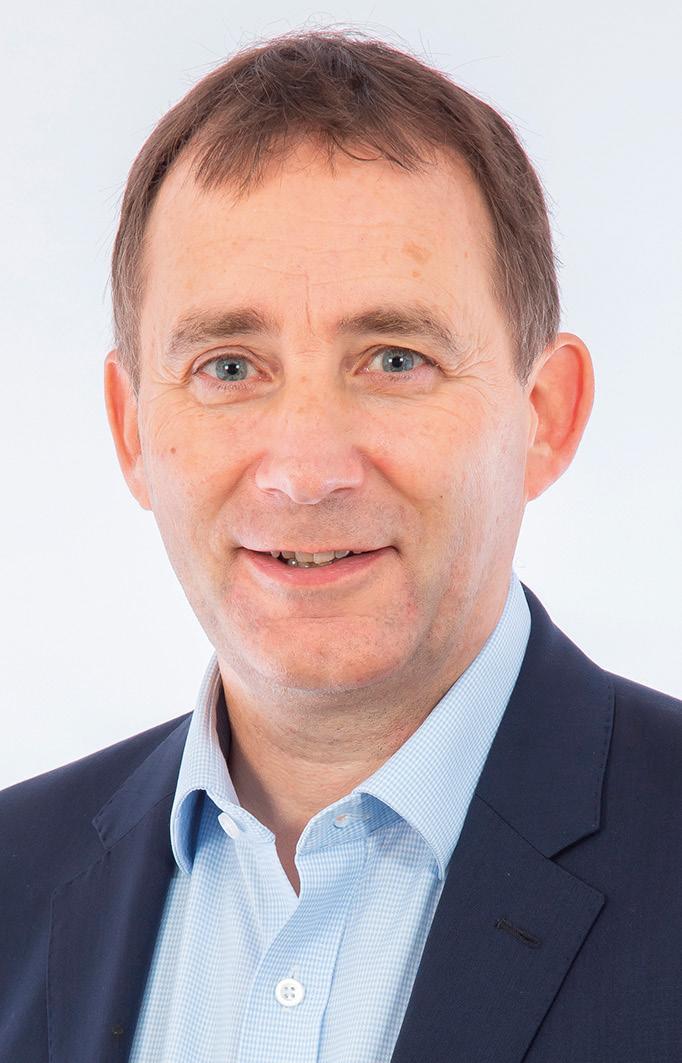
Image: Shutterstock
RAILWAY INDUSTRY ASSOCIATION 77 May 2024

With four decades of excellence in the rail industry, Simpson Consultancy is a leading provider of specialised health, safety, environment, and quality services. Steve Simpson explains more
Navigating organisations through rail industry standards

The team at Simpson Consultancy is driven to provide exceptional health, safety, environmental and quality (HSEQ) services, minimising accidents and incidents by improving standards, but most importantly making sure everyone goes home at the end of each day.
It has been a passion of Managing Director Steve Simpson, who has worked in health and safety in the railways for around 40 years, and established his own business in 2004, drawing on his own experiences and his passion in ensuring the safety of the railway family.
“We pride ourselves on guiding businesses through RISQS certification and ISO certification processes with unparalleled expertise and a client-focused approach,” he said. “Our seasoned team, equipped with extensive knowledge and experience, ensures your business not only meets but exceeds the highest standards in health, safety, environmental, and quality compliance.”
Simpson Consultancy offers a flexible approach in supporting companies of all sizes, taking particular pride in helping to guide those looking to break into the rail industry, helping them to navigate through complex regulations and standards, something that is bread and butter for Steve and the team.

“With a longstanding history in the railway, I am only too aware of how big the scope of the rail industry is in terms of all the different suppliers that feed into that network, and we offer that skillset and experience and have 100 per cent success rate in getting people through their RISQS audits,” he said.
“We get a lot of pride in helping new companies that haven’t been involved in the rail industry before to open that door for them and to help them to facilitate growth within their own business, knowing that once in the sector the possibilities become endless.”
Simpson Consultancy’s pragmatic approach to HSEQ ensures that its experts work in tandem with clients, offering low-stress solutions that address specific needs. The business has continued to grow through word of mouth, centred around forging partnerships that drive success.
By specialising in RISQS and ISO certifications, it ensures that the business is not only compliant, but also positioned as a leader in health and safety excellence, empowered by helping clients excel in safety and quality standards, making the workplace not only safer, but also more efficient and sustainable.
It can also prove a cost-benefit solution to those smaller organisations bringing in experts when needed rather than employing someone full time.
Steve said: “The work is so diverse, and we could
be helping companies already in rail, supporting their management systems, prepping them ready for RISQS audits, or supporting them with compliance in terms of doing internal auditing. It really depends how much people want us to do – our solutions are flexible and customisable.
“As part of our service we also give a quarterly newsletter which updates the client on industry updates both in rail and construction and then we also offer the service of standards updates and reviewing standards and letting them know what has changed.”
In its 20 years, Simpson Consultancy has implemented numerous management systems to new clients wishing to work in rail and has a 100 per cent pass rate, cementing its position as playing a vital role in ensuring workers remain safe and compliant.
“It’s a service that needs to be embraced by everybody,” said Steve. “You can’t hide and if you do and something happens you can end up in a lot of trouble. You should also look at how it benefits your business, particularly in terms of scaling and growing.
“If you’ve got all your processes in place and all your management systems in place, then all you’ve got to do is follow the procedures and follow your process and everything will fall into place.”
Visit www.simpsonconsultancy.co.uk/ for more details.
ADVERTORIAL 78 May 2024
Image: Shutterstock

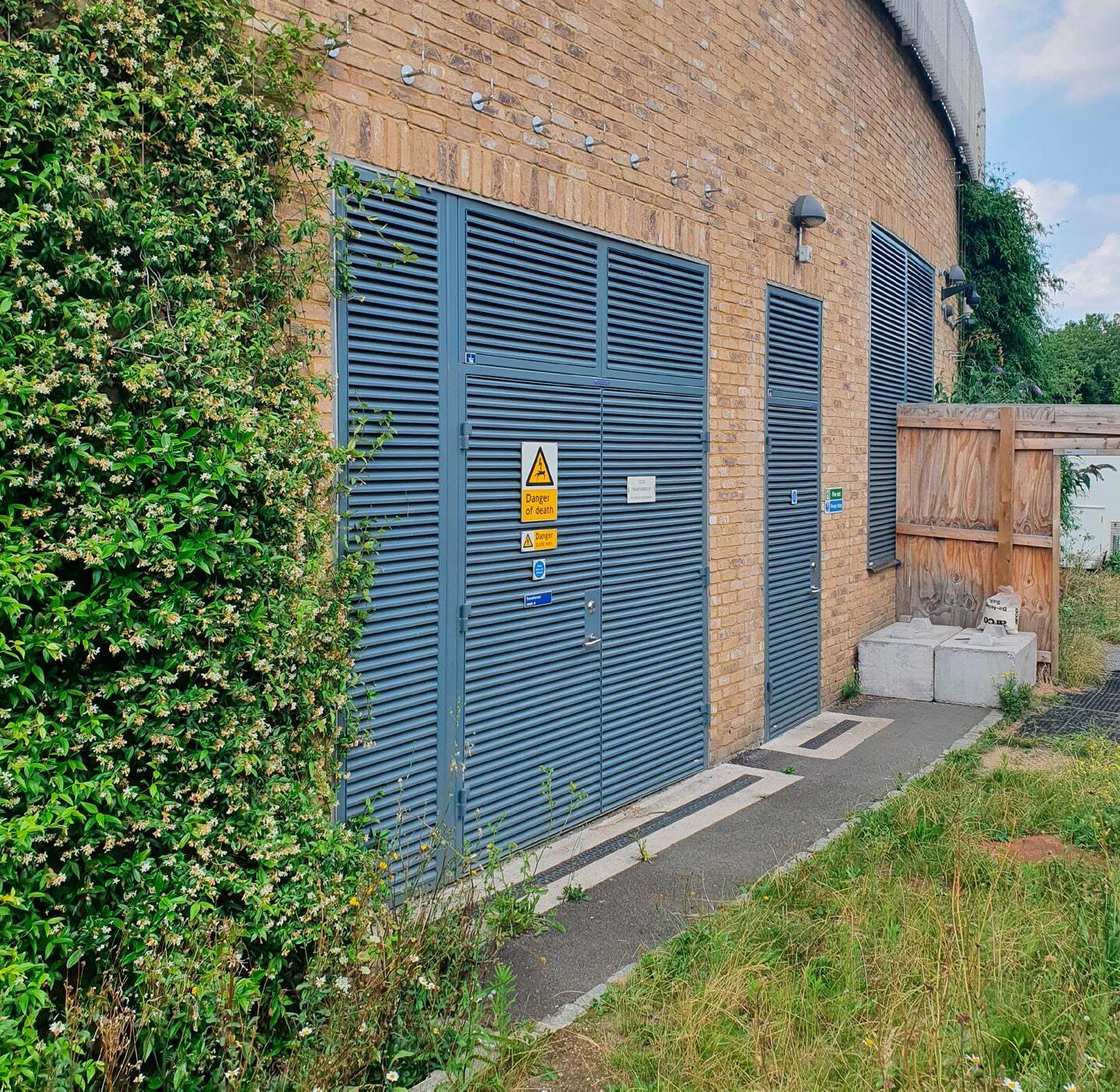
Security, Fire & Blast Doors, Louvre Panels and GRP Platforms/Walkways for the Rail Industry
With clients and projects such as TFL, EuroTunnel, DLR, Crossrail and HS2, Sunray is the Rail Industry partner when specifying Steel Door and associated products. Our consultative and practical approach ensure bespoke product solutions to meet performance needs without compromise to design.
With exceptional Door Size Ratios, Fire Ratings of 1-4 hours plus overrun and Security Levels 1-6 provide total assurance in today’s built environment together with extensive hardware and locking options, vision panels and overall RAL colours.
● SPECIALIST RAIL SOLUTIONS
● REFERENCE PROJECTS
● BESPOKE SOLUTIONS
● INSTALLATION & MAINTENANCE
● TECHNICAL SUPPORT
- Overground, Underground/TFL, DLR
- Crossrail, DLR, TFL, EuroTunnel
- Tailored designs to meet project criteria.
- Qualified, Compliant & Trained Operatives
- Consultative advice with complete back up concept to installation.
For more details, call our specialised team to discuss your particular project on:
sales@sunraydoors.co.uk
www.sunraydoors.co.uk
01233 639039
Manufactured, Tested, Specified, Certified
If you, or someone in your company, is new to the industry we know that getting to grips with rail can feel daunting. But it doesn’t have to be. And RBD Community is here to help you navigate it…
Helping newcomers understand UK rail

Are you new to rail? The team at RBD Community has got you covered – with everything you need to know to help you get started on your journey into this incredible sector.
From key information about how the industry is governed, operates, and all the organisations and supply chain that power it every day, to useful documents, insights, jargon busting and those allimportant events and contacts.
Your member portal One Place is where you can find all this information and more. It has a ‘New To Rail’ section, initially created to help companies entering the sector to understand it, equip them with key knowledge they need to succeed, and to signpost valuable additional resources.
However, ‘New To Rail’ has become even


more useful, with many members who are well established in rail, saying it’s a valuable resource for their new hires. Members are using it as an induction tool for new recruits – because not everyone your organisation hires will immediately know or understand the rail industry. Making ‘New to Rail’ in the member portal One Place, the perfect place to start.
A ‘must read’ for everyone new to rail
The ‘New To Rail’ area includes The UK Rail Report, which is a must read for everyone working in, or new to the industry. It is a fully searchable, dynamic report containing valuable intelligence, including:
The rail industry landscape.
All UK train and freight operating companies.
80 May 2024
Image: Shutterstock
Organisations governing rail and roles of Government, operators, and owners.
Key facts, stats and who’s who sections – with more than 700 contacts.
Information about supply chain support organisations.
Routes into the UK rail market.
Key projects and developments.
Events and awards.
Light rail, very light rail, and metro.
Research and development.
And more.
If you know little about UK rail, or if you want to brush up your knowledge, read the report, it will help you to understand how everything works, who is involved, and you’ll find signposts to useful links and contacts. Even if you’re a rail ‘veteran’ you’ll find it useful.
The ‘New To Rail’ area also includes links to useful documents and information, including the Rail Technical Strategy and Realising the Potential of GB Rail (McNulty Review). It has information about the associations and organisations that support the industry including UK Tram, Rail Partners, the Railway Industry Association, Rail Forum, Rail Freight Group, Women in Rail, and
many more.
There is also all you need to know about RISQS, Network Rail, HS2, programmes and key industry media.
And perhaps the most downloaded PDFs in this area – Railway Acronyms, Railway Lexicon and Glossary of Railway Terminology – helping you to get your head around all the many and varied rail industry terms.
The RBD Community team is always open to feedback and new ideas, so if you have a suggestion for something that will add value to the ‘New To Rail’ area, please do contact fiona@railbusinessdaily.com
‘New To Rail’ has become even more useful, with many members who are well established in rail, saying it’s a valuable resource for their new hires


Sheet Metal Fabrications
• Subcontrac t Sheet Metal Fabrications
• Established 1977
• County Durham
• 135,000 sq f t Fac tor y
• Interior/Ex terior Rolling Stock Components/Assemblies
• Trackside Equipment Cases/Components/Cabinets
• ISO 9001:2015
• ISO 3834-2 / BS EN 15085-2 CL1 C WR VC Welding
• DIN 6701 / EN 17460 for Adhesive Bonding
• ISO 14001 / ISO 45001
Hydram is a highly experienced supply chain par tner, with an established and enviable reputation for subcontrac t precision sheet metal fabrication.
By work ing closely with customers to create long-term par tnerships, Hydram has developed its sheet metal fabrication exper tise, maintained multiple quality, ISO, and associated accreditations, and has grown to be a successful leading sheet metal fabrication company
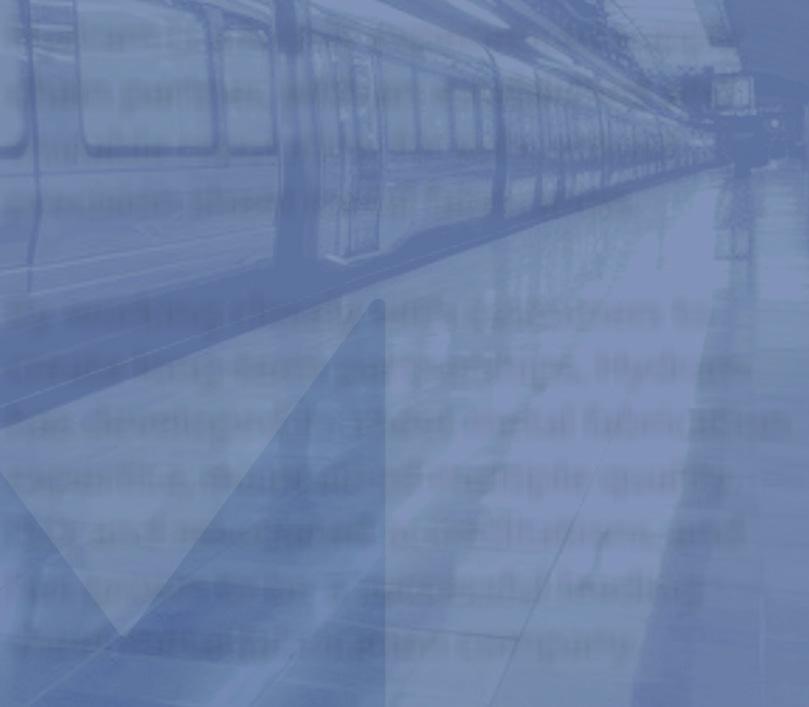
Your Complete Manufacturing Parter
hydram.co.uk 01388 720222
81 May 2024

Capel C.S Ltd is dedicated to delivering 1st class cost-effective, efficient, high-end construction solutions to clients within the railway, commercial and public sectors.
info@capelcsltd.com www.capelcsltd.com 020 8518 5354

Carlisle Support Services creates safe, clean environments for the travelling public. Its vision is to be a preferred and trusted provider of peoplebased services – including cleaning and security. info@carlislesupportservices.com www.carlislesupportservices.com 01582 317752

DataMotive Systems Inc works with clients from many different industries, developing projects involving automation, biomimicry, control systems, process control and monitoring systems. info@datamotive.ca www.datamotive.ca +1 (416) 937-3748
SCAN ME

Dywidag work to make infrastructure safer, stronger, and smarter with data-driven systems extending the lifespan of new and ageing track, roads, tunnels, and bridges. sales.uk@dywidag.com https://dywidag.com/ 0161 797 5511

SCAN ME

SCAN ME

SCAN ME
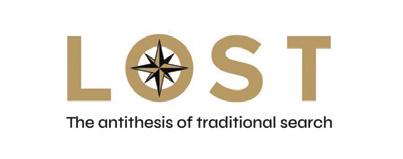
Jobson James Rail is a national specialist railway insurance broker, the market leader in the UK by a huge margin with over 550+ rail clients across the UK, Middle East and Australasia. keven.parker@jjrail.co.uk
Jobson James Rail is a national specialist railway insurance broker, the market leader in the UK by a huge margin with over 550+ rail clients across the UK, Middle East and Australasia. keven.parker@jjrail.co.uk
Lost Group has been created to fundamentally change the way people and companies find each other within the transport sector. contact@lost.careers www.lost.careers
DirectoryDEC.indd 11
DirectoryDEC.indd 11
Penn Engineered Solutions delivers highly valued consultancy and training services in the fields of Propulsion System Engineering, Lean & Six Sigma and Leadership Management. info@pennengineeredsolutions.co.uk www.pennengineeredsolutions.co.uk
jjrail.co.uk 07816 283949
jjrail.co.uk 07816 283949
SCAN ME SCAN ME
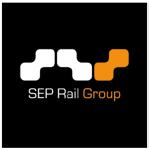
16/01/2024 17:45
16/01/2024 17:45
The UK’s fastest growing independent rail group, we support contractors, consultants and more, making tomorrow’s railway a better place. www.seprail.co.uk 01904 40 33 22
SCAN ME

SGP Group have supported thousands of companies in the consistent pursuit of improving their products and specialise in providing the services such as selection, sorting, repair of details, components and finished products. office.uk@sgpgroup.eu www.sgpgroup.eu 07563 388 945
ME
SCAN
SCAN ME
ME
SCAN
DIRECTORY 82 May 2024


Smart Component Technologies is at the forefront of condition monitoring for highly-critical industrial assets. SCT specialise in developing lowcost solutions for predictive maintenance and asset monitoring. info@smartcomptech.com www.smartcomptech.com 01223 827160

STAUFF are proud to manufacture and develop fluid power components, manipulated tube products, and finished kits. Tested, sealed and ready to install on production lines. uk.sales@stauff.com www.stauff.co.uk 0114 251 85 18

The CCTV Company provides innovative solutions that meet client’s needs including targeting the reduction of aggressive behaviour and the protection of rail employees. sales@thecctvcompany.com www.thecctvcompany.com 01744 891 702
SCAN ME

Tratos is a company specialising in the design, manufacture and supply of power, signalling, control and telecommunications cables for the railway sector. john.light@tratos.co.uk www.tratos.co.uk 0845 413 9990
SCAN ME

UK Power Networks Services solve your energy challenges through innovative solutions, delivering resilience, cost efficiency and sustainability to deliver a bright energy future. www.ukpowernetworksservices.co.uk 020 7397 7845
SCAN ME

The University of Nottingham has a research portfolio worth £600million and is recognised globally for ground-breaking research and teaching excellence. www.nottingham.ac.uk/research/ research.aspx
SCAN ME

Victory Fasteners are a major stockholder & manufacturer of High-Grade Alloy Fasteners. We specialist in Grade 8.8, 10.9, 12.9 fasteners & associated products. sales@victoryfasteners.com www.victoryfasteners.com 01902 544480

Lineardraft, by Zebraware, is Overhead Line Electrification design software, which is fast becoming the industry standard for designing electrified rail. enquiries@zebraware.com www.zebraware.com
SCAN ME
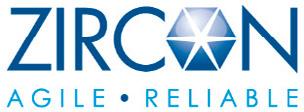
Zircon Software is a specialist provider of technical software solutions. The software engineers provide high integrity and reliable systems based on Embedded, Desktop, and Machine Learning platforms. enquiries@zirconsoftware.co.uk www.zirconsoftware.co.uk 01225 764 444
SCAN ME
SCAN ME
SCAN ME
SCAN ME
DIRECTORY 84 May 2024
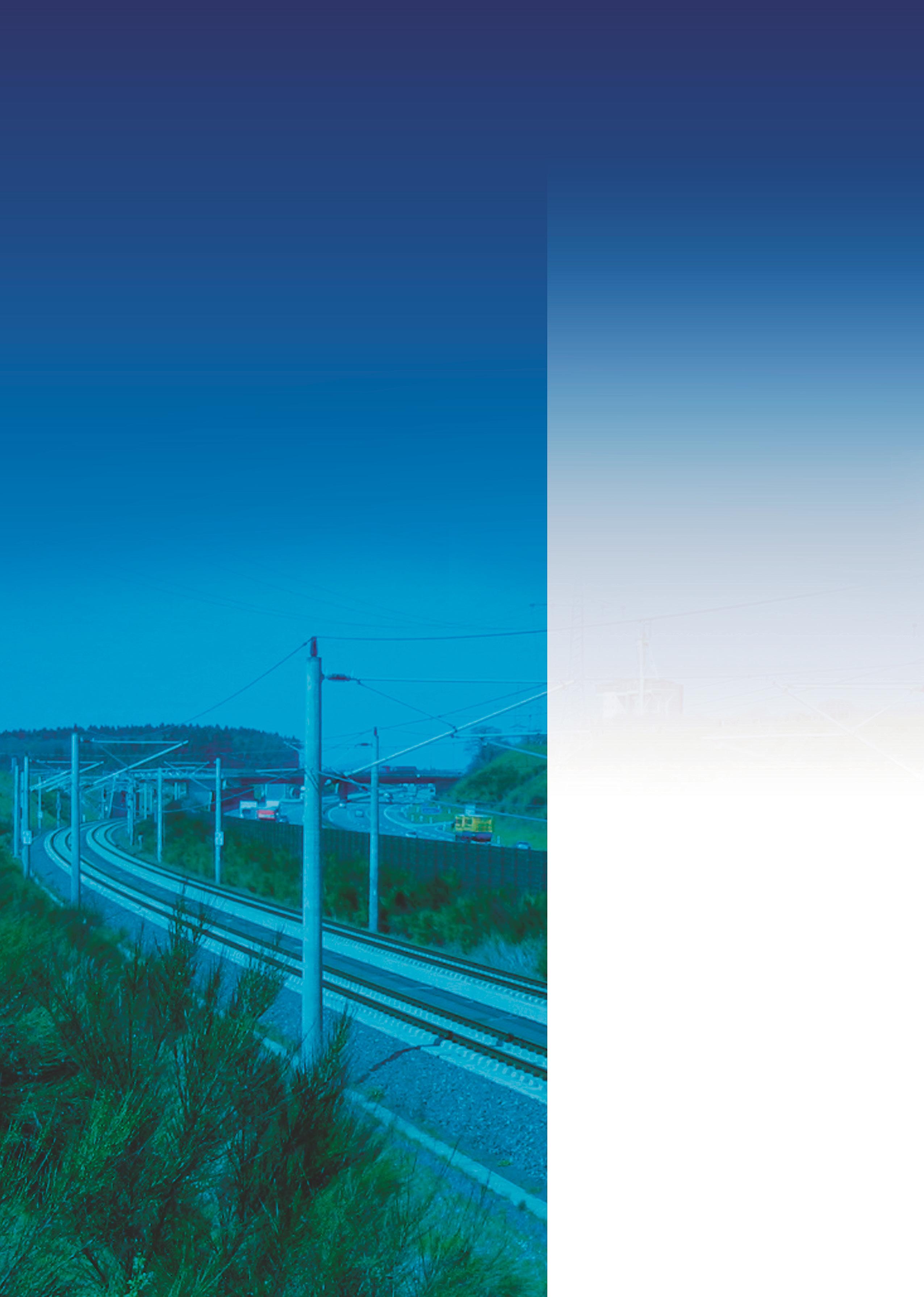

Balfour Beatty has appointed Steve O’Sullivan as Project Director with responsibility for Balfour Beatty VINCI SYSTRA’s HS2 Old Oak Common station project. Steve has more than 40 years’ experience in the industry and has been involved in Nam Cheong Station West Rail Interchange in Hong Kong and Terminal 2B and 5 at Heathrow Airport.

“Building strong relationships and embedding stakeholders at the earliest opportunity”
What is your reaction to your appointment as Project Director for HS2’s new super-hub station?
I’m extremely excited and proud to have been appointed as Project Director for HS2’s cuttingedge super-hub station at Old Oak Common. HS2 is a household name and is critical for thousands of people and communities in the UK. While I have no doubt it will be a challenge, not just logistically but also in terms of team integration, I am looking forward to navigating the intricate complexities and getting to
know the 2,000 employees who are already working to ensure its success.
How does it feel to be involved in such a major project and in an area in which you grew up?
Being involved in a major project of this scale, especially in the area where I spent my formative years, is immensely gratifying. It presents a remarkable opportunity to contribute to the social and economic revitalisation of an area that is
obviously very close to my heart. Projects like HS2 will unquestionably lead its regeneration, and also foster a sense of communal pride in the area.
What are your aims and aspirations? With a keen focus on innovation and efficiency, I will adopt learnings from my career experiences managing major projects both in the UK and overseas. One of the most valuable lessons I have learnt over the past 40 years is the importance of building strong relationships with the customer
May 2024 86 MOVERS AND SHAKERS




SAFER
GREENER
SMARTER

5 FOR THE PRICE OF 4
BUY FOUR PACKS OF 10 OIL CONDITION MONITORING TESTING KITS AND GET A PACK OF 10 TESTING KITS FREE!
THIS IS THE PERFECT OPPORTUNITY FOR BUSINESSES OPERATING IN THE OIL AND GAS INDUSTRY OR TRANSPORTATION SECTOR TO ENSURE THE HEALTH AND EFFICIENCY OF THEIR EQUIPMENT
In the oil and gas industry, regular oil condition monitoring is crucial to prevent costly breakdowns and ensure optimal performance. Our testing kits allow you to easily analyse the condition of your oil, identifying any contaminants or abnormalities that could lead to equipment failure. By catching potential issues early on, you can save time, money, and avoid unnecessary downtime.

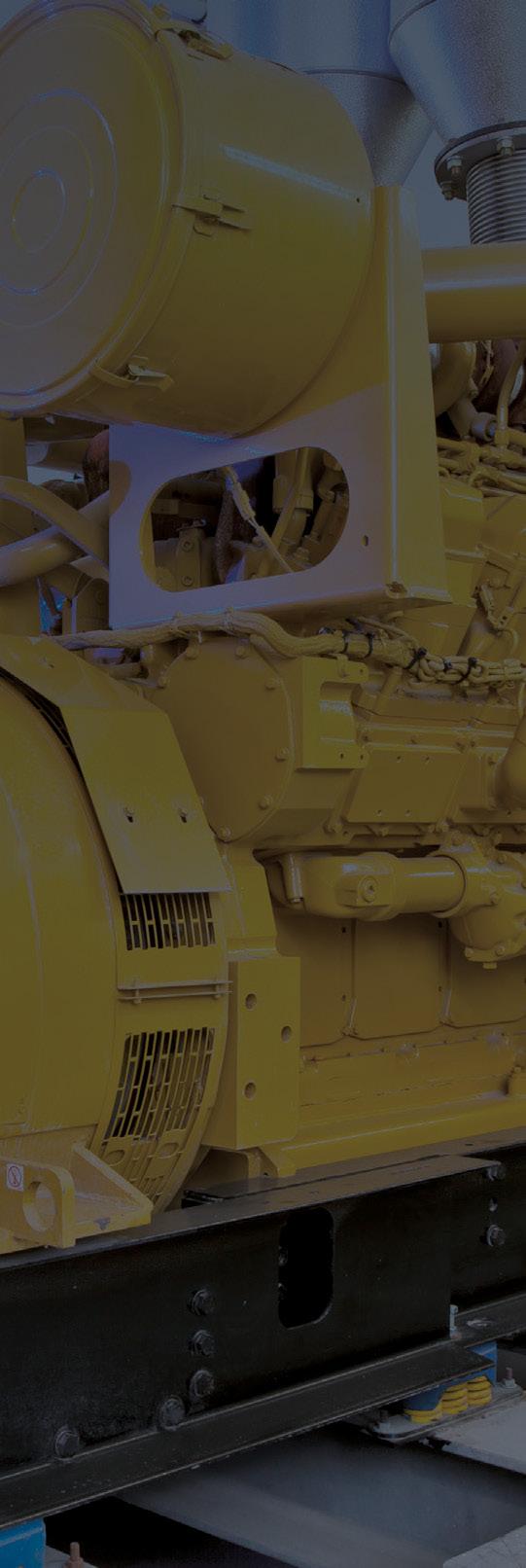

Fast and accurate analysis of lube oil, grease and hydraulic fluids with SGS
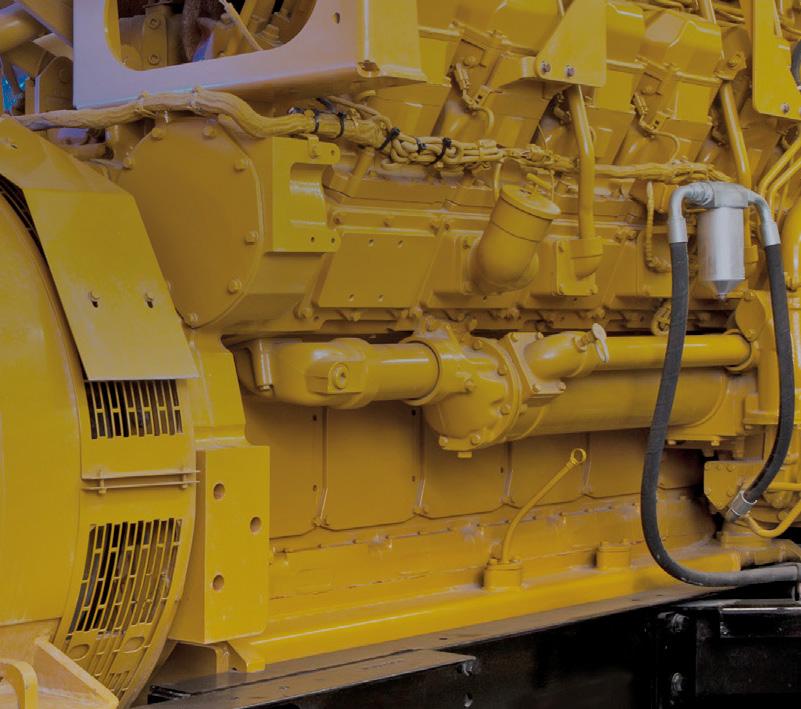


Transportation companies also rely on oil condition monitoring to keep their vehicles running smoothly.
Whether you own a fleet of trucks, buses, or even personal vehicles, our testing kits can help you maintain top-notch performance. By regularly checking the condition of your oil, you can detect any signs of wear or contamination that could compromise your engine’s efficiency and longevity.
Regular oil condition monitoring is crucial to prevent costly breakdowns and ensure optimal performance. Our testing kits allow you to:
• Easily analyse the condition of your oil
• Identify any contaminants or abnormalities that could lead to equipment failure
Catch potential issues early and you can save time, money, and avoid unnecessary downtime.
Don’t miss out on this fantastic deal. Invest in the future of your business by purchasing our oil condition monitoring testing kits today.

Take control of your equipment’s health and efficiency - order now!
We are SGS – the world’s leading testing, inspection, and certification company. We are recognized as the global benchmark for sustainability, quality, and integrity. Our 98,000 employees operate a network of 2,650 offices and laboratories, working together to enable a better, safer, and more interconnected world.
CONTACT US:
Rossmore Industrial Estate, Inward Way, Ellesmere Port CH65 3EN
+44 151 350 6600
© SGS Société Générale de Surveillance SA. (2023)
and embedding stakeholders within the team at the earliest opportunity. Collaboration is not just a buzzword but a fundamental approach to ensuring success and fostering sustainable outcomes.
Having initially started at the company as an Electrical Engineering Apprentice in 1980, how proud are you of what you have achieved?
My journey in the construction and infrastructure industry started back in 1980, when I joined Balfour Beatty as an Electrical Engineering Apprentice.
From the foundational lessons learned during my apprenticeship and early management years, working on landmark projects such as Lloyds of London and the British Library, each experience and working and learning from others on the project provided stepping stones in my professional growth.
The challenges faced in diverse settings, from the Middle East to Southeast Asia, pushed me beyond my comfort zone and helped me hone my leadership skills, whilst projects like Terminal 5 at Heathrow Airport showcased groundbreaking safety cultures and collaborative approaches, setting industry standards.

Arriva Rail London appoints Anjuli Ramburuth as Finance Director
Arriva Rail London (ARL), which operates the London Overground on behalf of Transport for London (TfL), has appointed Anjuli Ramburuth as the company’s Finance Director. Anjuli takes over the role from Steve Best, who became Managing Director in January 2024.
Anjuli joins ARL from Arriva UK Bus, where she was Head of Finance, supporting the London business. She brings 18 years of experience and expertise, having worked in several commercially-focused finance leadership roles within the food service industry before joining Arriva Group.
In her new role, Anjuli will oversee financial operations for ARL, which runs over 1,600 London Overground services per day for more than 520,000 passengers.
She said: “I look forward to working with the talented team at ARL and building on the foundation of financial excellence that Steve has established during his tenure. The company has proven its position as one of TfL’s trusted partners over the past eight years and I am excited to be part of the next steps of this journey.”
While overseeing aviation projects on several UK airports and spearheading a pivotal Balfour Beatty change programme, I’ve embraced new challenges and opportunities for innovation at every opportunity. The Whitechapel Elizabeth Line Station project in particular stands out – it was an incredibly complex project, and possibly the most technically
My optimism for the future of this project is
grounded in strategic foresight and a commitment
to innovation

John Whitehurst announced as GTR’s new Chief Operating Officer
John Whitehurst has this month become Govia Thameslink Rail’s (GTR) Chief Operating Officer, responsible for ensuring GTR’s operations are safe, reliable, and sustainable while maintaining a relentless focus on making sure customers receive a high-quality service.
The role will see John lead the planning and delivery of services across GTR’s four brands – Gatwick Express, Great Northern, Southern, and Thameslink –which collectively represent approximately 18 per cent of UK rail passenger journeys. He will also hold key relations with the supply chain and industry partners such as Network Rail.
He has previously worked at Network Rail as Route Infrastructure Maintenance Director on the Kent and Anglia routes, and spent nearly 12 years at Serco, where he was Managing Director of Transport and Community Services.
John said: “I’m looking forward to getting out across the length and breadth of GTR’s vast network, meeting my new colleagues who work incredibly hard every day to provide customers with a safe and reliable service.
challenging on the line – with numerous stakeholders and interfaces with London Underground and Overground while maintaining operation of the station for the public.
Are you optimistic for the future and what is going to be the key to ensuring this is a successful project?
My optimism for the future of this project is grounded in strategic foresight and a commitment to innovation. Leveraging advanced technologies like 4D modelling allows us to anticipate challenges and plan meticulously, while robust project controls will provide invaluable insights for informed decision-making, driving both productivity and sustainability.
But beyond the day-to-day delivery, Old Oak Common and HS2 as a whole provide an incredible opportunity to upskill the next generation of young construction workers. Exposing them to major projects like these will propel them further and faster in their careers and ensure that the construction and infrastructure sector has the skilled people it needs for the future.

New Capital Delivery Director for Network Rail’s Wales and Western region
Network Rail’s Wales and Western region has announced Tim Walden as its new Capital Delivery Director. He joins from the company’s Southern region, where he has held the role of Capital Delivery Director since June 2022.
A driving force behind the completion of Control Period 6 (CP6), Tim has supported the creation of the Southern Renewals Enterprise, taking the region into CP7. His leadership saw the successful delivery of major resignalling schemes at Victoria and Feltham and the completion of the impressive Gatwick Airport Station works. In addition, he led the delivery of the Access for All portfolio which was the biggest of any region in CP6.
He replaces Stuart Calvert, who has moved to the role of Capital Delivery Director for Network Rail’s Eastern region. Kayleigh Spires is currently Interim Capital Delivery Director for Wales and Western.
Regional Managing Director Rob Cairns said: “I’m delighted to welcome Tim to Wales and Western. There’s no doubt he’ll be an incredible addition to the leadership team and will help us to achieve our goals and ambitions for CP7.”
Image: Arriva Rail London
Image: GTR
Image: Network Rail
MOVERS AND SHAKERS 88 May 2024

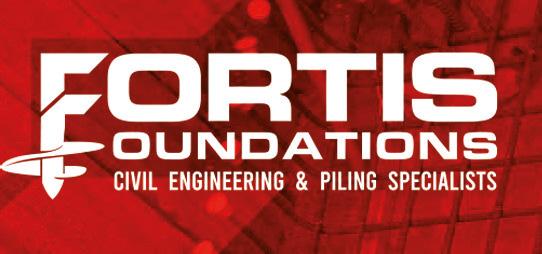
Providing civil engineering products and services, with expertise in foundations and piling to the Rail, Civils, Energy, Residential and Water sectors

With over 20 years of Rail and Construction industry experience, our familyrun company provides expert advice and cost-effective solutions to all sectors looking for experts that they can rely on. Delivering safe and sustainable solutions at the forefront of innovation and technology, ensuring the highest quality results first time, every time. We can assist clients from advisory and design to compliance and delivery, providing tailor-made solutions to meet clients’ needs.
Installation of all Piled foundation - bored, driven & screw piles
Erection and installation of OHL Gantry structures (masts, booms)
RED, LOC and DNO foundations and platform installations (GI, Design & Install)
Platform renewals and refurbishments
Cess walkways and throughing routes
Fencing and Access stairways
Site compound establishment and access road
Trial Holes
Excavation and installation of concrete bases
Embankment stabilisation & Cess retention
De-vegetation
Piling and Soil nails
Rabbit Netting
Gabian Walls









Visit our website for more information or give us a call: 01442 731 321 info@fortisfoundations.com www.fortisfoundations.com 5 Concorde Drive, Gadebridge, Hemel Hempstead, HP2 4AW
Locomotion in Shildon, County Durham has completed the museum’s biggest-ever rail shunt to create Europe’s largest undercover display of historic rail vehicles
Europe’s largest collection of historic rail vehicles assembled at Locomotion


Forty-six vehicles, and one road vehicle, have carefully been moved inside Locomotion’s newly constructed £8 million New Hall, in the museum’s biggest-ever rail shunt to create Europe’s largest undercover display of historic rail vehicles.
Locomotion is a partnership between the Science Museum Group and Durham County Council, with the latter having provided significant funding towards New Hall, situated opposite the museum’s existing collection building and officially opening later this month. Sarah Price, Head of Locomotion, said: “New Hall effectively doubles the size of Locomotion and gives us much-needed covered display space to help conserve the collection, as well as giving visitors the chance to find out more about the railways and the North East’s railway heritage.
“I hope the significant regeneration at Locomotion can draw even more people to visit the museum and the region as part of the national Railway 200 celebrations and beyond.”
It hasn’t been an easy process getting the vehicles into position, with the hall being filled with collection rail vehicles in a complex shunt that took more than four weeks to complete. The last vehicles moved into position last month, including the Q7 locomotive and

the historic Hetton Colliery locomotive.
With a crane, two snow ploughs, a pair of track inspection velocipedes, historic steam locomotives, numerous freight wagons, and even a tracked Bren Gun Carrier, the lineup is sure to include something to complete every train set. When added to the vehicles already at Locomotion, there will be 99 rail vehicles.
Sarah added: “I would like to thank all our partners involved in creating the magnificent New Hall, especially Nationwide Engineering and Durham County Council.”
New Hall will celebrate the museum’s 20th anniversary in September this year. The museum is also built close to the site of Shildon Works – once home to a thriving railway workshop, employing thousands, which closed in June 1984.
To mark this important link, the new building and the vehicle display will recognise the important role of railways in shaping communities in Shildon and across the North East, as well as the development of the railways across the UK. The interpretation will also tell new stories of the significance of coal in the development of the railways along with related stories of industry and freight transportation.
For more information about Locomotion visit: www.locomotion.org.uk
I hope the significant regeneration at Locomotion can draw even more people to visit the museum and the region as part of the national Railway 200 celebrations and beyond
Image: Charlotte Graham
AND FINALLY... 90 May 2024

RIA Annual Conference 2024
A fresh start for UK Rail?
6-7 November



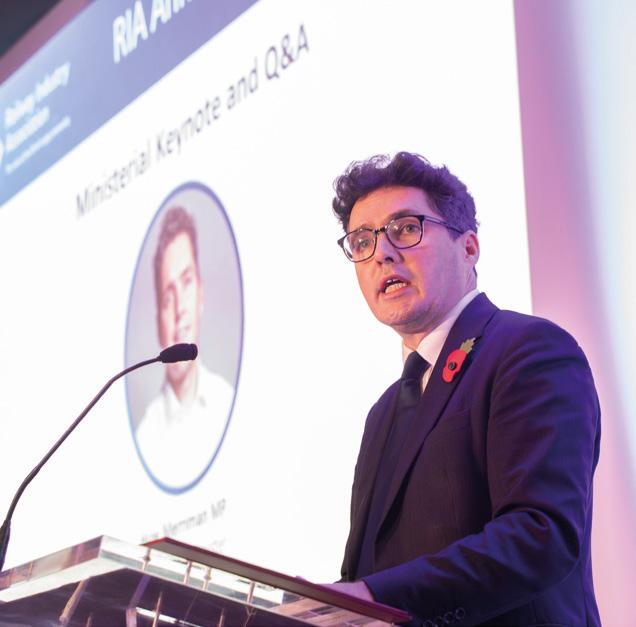
2-day conference with inspiring keynotes including: – Andrew Haines, Chief Executive, Network Rail – Sir John Armitt CBE FREng FICE, Chair, National Infrastructure Commission – Sir Jon Thompson, Executive Chair, HS2 – And many more…
Large interactive exhibition area with spotlight pitches presenting services, products and solutions
Evening programme including networking drinks, dinner and entertainment
Leonardo Royal Hotel
Scan the QR code to register today Or visit riagb.org.uk/AC24
London Tower Bridge

Delivering a sustainable future for high speed rail
We are dedicated to leading our clients towards a Net Zero future, championing greener initiatives in the rail industry.
Our team of experienced professionals are equipped with the knowledge and expertise to tailor our innovative solutions to your unique needs and objectives.
Together, let’s make a difference and build a better, more sustainable tomorrow.

Scan here to get in touch
ukpowernetworksservices.co.uk
































































































 Danny Longhorn Editor
Danny Longhorn Editor






















































































































































































































































































































 Above: The grads hard at work, from left to right Paloma Daniel, Emmanuel Butler and Saffron Lawman. Image: Nextec
Below: Maddie at the TRACCS rail day in Canada.Image: Nextec
Above: The grads hard at work, from left to right Paloma Daniel, Emmanuel Butler and Saffron Lawman. Image: Nextec
Below: Maddie at the TRACCS rail day in Canada.Image: Nextec












































































